
Home » Travel » Travel Tips » 23 Essential Travel Terms and Phrases You Should Know

23 Essential Travel Terms and Phrases You Should Know
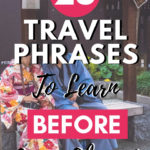
How do you prepare for the best travel experience possible? Do you research the must-see places and best restaurants, read an article or two on travel safety, and call it a day? You should also learn some essential travel terms and phrases to make the most of your trip.
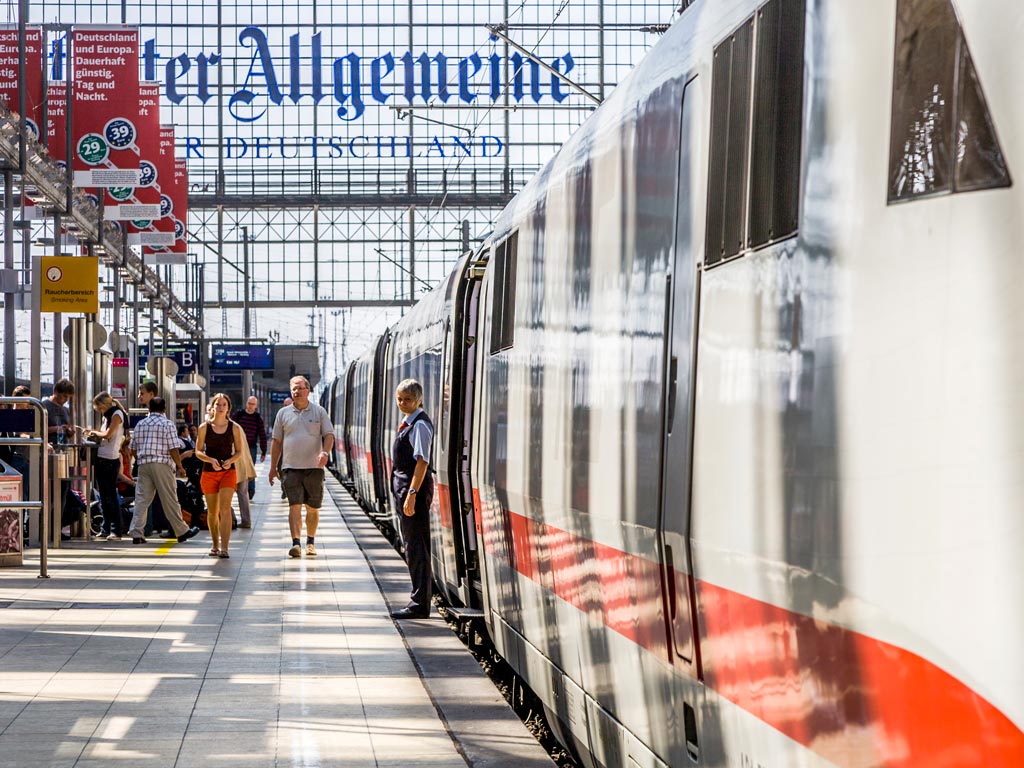
Knowing a handful of travel words and phrases in your destination’s native language gives you more freedom to explore. Had I traveled to Japan without taking the time to learn some basic Japanese, I would have been too intimidated to get off the beaten path.
Even in the world’s most visited cities, assuming English is enough to get by is a big travel mistake .
How to Learn Short Travel Phrases
Before every international trip, I spend 10-15 minutes a day for a week practicing the phrases below. I also spend 30 minutes or so on the plane/train reviewing these phrases so they’re fresh in my mind.
I use a mix of Google Translate, web search, and YouTube to help me learn the words and proper pronunciation. Combining Google translate with a web search for “how to say [phrase] in [language]” is critical, as Google Translate is known to give the wrong translation out of context.
For example, typing in the word “bill” could return the translation for a law document instead of the restaurant tab. It’s always best to cross check words with multiple meanings.
If you don’t have Google Translate already on your phone, install it before your trip. You should also download the language’s dictionary for offline use. Then, add the phrases below to your phrasebook by translating them in the app and tapping the star button.
The whole process takes about five minutes, and you can refer back to the spelling and pronunciation whenever you need!
Finally, if you’re traveling with others, don’t rely on someone else to speak the local language. If you get separated from that person, you’ll be on your own for communication.
Without further ado, here are 23 phrases to learn in any language before traveling abroad.
General Travel Terms and Phrases
- You’re Welcome
- Do you speak [language]?
- I don’t understand
- I need help
RELATED: How to Save Money While Traveling Abroad
Tourist Words for Getting Around
- Where is…?
- Does this go to…?
- Which way to…?
- Train Station
RELATED: 26 Easy Ways to Grow Your Travel Fund
Food and Dining Travel Phrases to Know
Note: If you have dietary restrictions, you should also learn the words for those items as well.
- I would like…
- What do you recommend?
- The bill, please
Save these essential travel terms for later!

Beyond Basic Travel Phrases
If you’re like me and really love learning languages, expand your study beyond these essential travel phrases. Personally, I never visit a new country without knowing the local word for “coffee”.
Apps like Duolingo and Memrise turn language learning into a game. Both have dozens of languages to choose from and cover vocabulary, grammar, and pronunciation. Each app takes a slightly different approach to how information is presented, so I actually use both simultaneously when practicing a new language.
What travel terms and phrases do you find essential? Let me know in the comments section!
1 thought on “23 Essential Travel Terms and Phrases You Should Know”
May I suggest a 24th phrase, i.e.:
“How much does this cost?”
Leave a Comment Cancel reply
This site uses Akismet to reduce spam. Learn how your comment data is processed .

73+ Essential Travel Phrases and Words You Should Know

Disclosure: This essential travel phrases article may contain affiliate links. If you click it and buy something you like, I’ll earn a small commission at no extra cost to you. Thank you! Read more in Disclaimer .
How do you say “ You have a nice smile ” in Samoan? How to say “ You have beautiful eyes ” in Fijian? Those might not be the essential travel phrases , like Hello or Thank you. But we can all agree that (mis)communication is part of traveling. And language barriers are real. That is why I always find it extremely useful to learn words and phrases in the language of a country I am visiting. Why? It shows respect. People will be nicer to you. A new language will enhance local experiences and understanding of the culture . IT will make traveling easier and it is a great way to make new friends. So what are those common travel phrases ?
🔢 If you have been wondering “In how many languages does Anja know how to count to 10?”, you will find the answer hidden in the blog.

Traveling to 40+ countries I’ve learned that only knowing Slovenian will not help me. Shocking right! I was also wrong to assume that everyone speaks English . Knowing KiSwahili gave me a better starting point when bargaining for the prices in Zanzibar . Knowing essential phrases in French helped me in Vanuatu , and knowing how to ask for directions helped me in Japan . And learning Samoan and Fiji helped me when buying fruits in local markets. So next time, when planning your trip, don’t just search for the best things to do in Zanzibar, Japan itinerary , or about Dubai hotels . You should also learn useful phrases for traveling. What are those phrases? Let’s have a look at some useful phrases for traveling .
for ESSENTIAL TRAVEL PHRASES: • 73+ Essential ENGLISH Travel Phrases and Words You Should Know • 73+ Essential ARABIC Travel Phrases for Tourists in Arab Countries & Free PDF • 73+ Essential GREEK Travel Phrases for Tourists on a Greek Holiday & Download • 73+ Essential JAPANESE Travel Phrases for Tourists Visiting Japan & Free cheat sheet • 73+ Essential SLOVENIAN Travel Phrases for your trip to Slovenia & Free Download • 73+ Essential SWAHILI Travel Phrases for Travelers to East Africa + Free Download for WORDS & PHRASES in 101 different languages: • How to say You have beautiful eyes in 101 different languages • How to say What is the WiFi password in 101 different languages • How to say Hello in 101 different languages spoken around the World • How to say Love in 101 different languages spoken around the World • How to say I love you in 101 different languages spoken around the World • How to say Thank you in 101 different languages spoken around the World • How to say Happy Birthday in 101 different languages spoken In the World • How to say Happy New Year in 101 different languages spoken around the World • How to say Friend in 101 different languages spoken around the World with Pronunciation
and ALSO READ: • WHAT IS THE BEST TIME OF DAY TO VISIT HORSESHOE BEND • HOW TO SPEND A HALF DAY AT GRAND CANYON SOUTH RIM • WHICH GRAND CANYON HELICOPTER TOUR IS THE BEST FIT FOR YOU • WHERE TO STAY NEAR ANTELOPE CANYON: THE BEST 10 PICKS • 10 BEST PLACES TO STAY NEAR HORSESHOE BEND YOU WILL LOVE • HOW TO GET FROM LAS VEGAS TO GRAND CANYON BY CAR – FANTASTIC ROAD TRIP GUIDE • BEST PLACES TO STAY NEAR GRAND CANYON SOUTH RIM – 31 AWESOME AND UNIQUE HOTELS
Table of Contents
📌 Don’t have time for a quiz now? Pin i t for later!
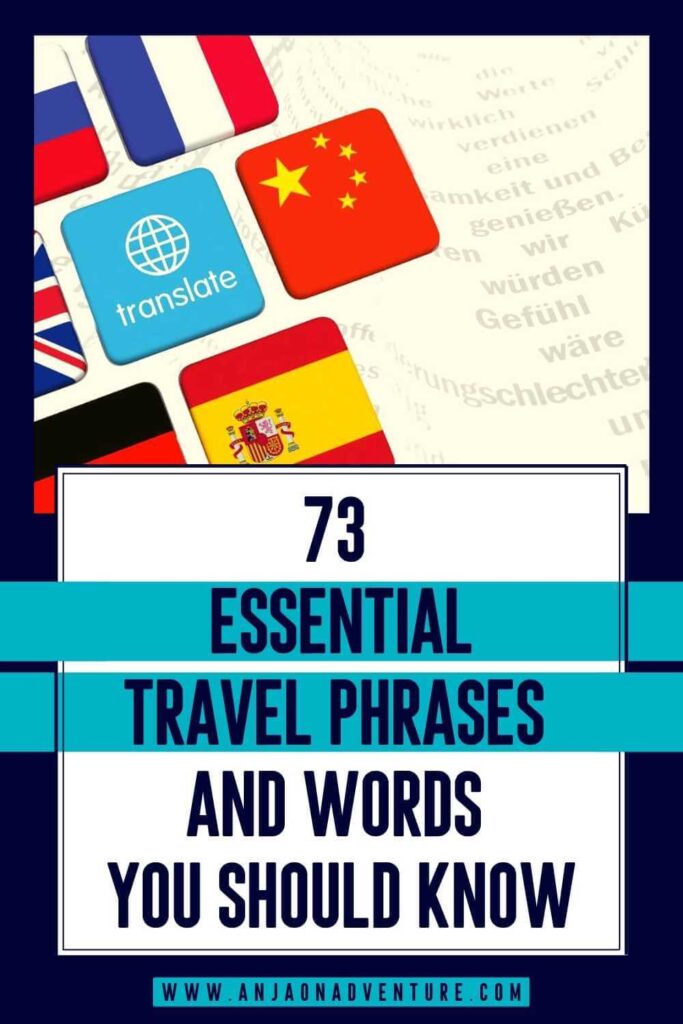
1. What are Travel Phrases?
Travel phrases are useful phrases to know when traveling abroad. They are a collection of the most common and frequently used words and expressions we use when visiting foreign countries. From basic greetings to phrases for seeking directions , ordering food , and engaging in cultural exchanges. From a simple ‘’hello’’ and ‘’thank you’’ to longer phrases like ‘’where is the bathroom” and “what is the WiFi password”. Travel phrases equip you with the confidence and ability to connect with locals , by speaking their language , and immerse yourself in authentic experiences .
Don’t have time to read now? Pin it for later!

2. How to learn short Travel Phrases and Travel Terms
Before we find out what those useful travel phrases are, let’s talk about how to learn them . It might seem daunting but it is actually fun. The reality is, if you will be traveling for at least a couple of days, you will pick up the basic words while abroad . And if you will be spending some time with locals, they will teach you the bad words first anyway. Which you will remember the fastest. 🙂 Now, depending on your destination country, some travel words and phrases will be easier for you to remember than others. People who know these things say that a person can memorize 50 new words per day . My humble estimation would be 10 . This would potentially mean, you can learn all the essential travel phrases in a day or two . I am a realistic optimist and would say to start learning sooner. Like a week before or more.
2.1. Duolingo
I love using Duolingo . It is a free app, where you choose how many minutes you can invest in learning a language and the purpose of your learning (travel). You can choose from more than 30+ languages and I love that lessons are bite-sized . Currently learning Italian for my Tuscany trip but love Polynesian languages – like Hawaiian and Samoan. Duolingo makes learning a language easy . It uses text, speech and is showing cards. So you can hear the pronunciation, see how the word is written and the translation of it plus a visual representation of the words. A great way to learn no matter where you are. Language: Italian, Hawaiian, Swahili (40+ languages) Download: iOS | Android | Website Price: Free & In App purchases
There are other apps, that have a free trial and then offer paid memberships. Among those, I tried and loved Babbel and Innovative languages . When I was using those two, I was more invested in actually learning the language and not just common travel phrases. Feel free to test out a few and find which one works best for your learning style.
Pinning is winning and sharing is caring! What are you choosing?

3. Essential travel phrases
3.1. basic travel phrases.
Those travelling words in English combine expressions that showcase politeness and cultural respect, encouraging positive interactions with locals and serving as a basis for every communication.
- I don’t understand
- Do you speak [language]?
- What is the WiFi password?
- Could you take my picture?
- Where is the bathroom?
ALSO READ: • How to say What is the WiFi password in 101 different languages
3.2. Common travel phrases for greetings and introductions
Below you will find what are some basic greetings tourists should know. Travel greetings lay the foundation for any interaction, allowing you to initiate conversations and make a positive first impression.
- Good morning
- Good evening
- Nice to meet you
- How are you?
- My name is …
- How do you say […] in [language]?
- Speak slowly, please
3.3. Essential travel phrases for directions and getting around
Basic phrases for asking for directions will enable you to navigate unfamiliar streets and find your way around.
- What time is …
- How do I get to …
- How far away is …
- Do you have a map?
- When does the next … arrive?
- How long does it take to get to….?
- Spatial demonstratives: here / there
- Cardinal Directions: North / South / East / West
- Directions: left / right / straight / back / up / down
- Mode of transport: car / bus / train / taxi / metro / plane
- Buildings and places: bathroom / restaurant / hotel / bank / pharmacy / hospital
ALSO READ: • 73+ Essential Greek Travel Phrases for Tourists on a Greek Holiday
3.4. Useful phrases for traveling when ordering food and drinks
Useful phrases when travelling for ordering meals, asking for recommendations, and specifying dietary preferences ensure enjoyable dining experiences and help you explore local cuisines.
- I’m allergic to …
- The bill, please.
- I would like to have …
- May I see the menu?
- What are the specials?
- What do you recommend?
- Types of diets: Vegetarian / vegan / gluten free
- Food flavors: sweet / bitter / sour / salty / spicy
- Drinks: coffee / tea / water / juice / wine / beer
- Food allergens: milk / eggs / fish / peanuts / shellfish / wheat / soybeans

3.5. Practical travel terms for shopping
Essential phrases for inquiring about prices, negotiating, and asking for sizes or colors are handy when exploring markets and boutiques.
- Could I try this on?
- Do you have this in …
- Excuse me, I’m looking for…
- Is this on sale?
- When do you open/close?
- Do you accept credit cards?
- Size: bigger / smaller
- Numbers: 1 / 2 / 3 / 4 / 5 / 6 / 7 / 8 / 9 / 10
- Larger numbers: 50 / 100 / 1000
- Colors: white / yellow / orange/ red / blue / green / pink / purple / grey / brown / black
🔢 “In how many languages does Anja know how to count to 10?” right now probably in around 7 or 8, but when living abroad this number was between 13-15 languages.
ALSO READ: • 73+ Essential Japanese Travel Phrases for Tourists Visiting Japan
3.6. Useful phrases for travelling when checking in a hotel
Phrases you will need when checking in a hotel, asking for towels, fixing air conditioning, enquiring what time is breakfast, and what is included in your room rate.
- … is not working.
- Do you have WiFi?
- Can I drink the tap water?
- Meals: breakfast / lunch / dinner
- Essentials: toilet paper / key / towel
- Amenities: air conditioning / fan / heater / hairdryer
3.7. Helpful travel terms in case of emergencies
Here you will find helpful important phrases to know when traveling in case of emergencies, natural disasters or if you will be needing assistance in difficult or dangerous situations.
- There is a …
- Please call the …
- I lost my passport
- My money was stolen
- Natural hazards: fire / flood / earthquake
- First responders: police / firemen / ambulance
3.8. Beyond essential travel phrases to compliment someone
If you’re like me and really love learning a few phrases in new languages, expand your study beyond the essential travel phrases. I always learn how to say please and thank you, never visit without knowing the local word for “coffee” and never leave without knowing how to say;
- You have beautiful eyes
- You have a beautiful smile

4. Best language Apps for traveling abroad
When it comes to language learning , the options are diverse. You can choose from apps, traditional textbooks, and language courses to podcasts and YouTube videos. I would recommend the previously mentioned Duolingo . In case you fell short and can’t learn the essential travel phrases, or if the situations come your way when those phrases won’t be enough , below you will find language apps I use for you to download before your next trip.
4.1. Google Translate
Google Translate is the most popular language travel app that can be used everywhere. I personally use it on all my travels, when going to Tanzania to learn what some Swahili words mean, when in Mexico to help with my not-the-best Spanish, when in Italy, in Japan and other places. I’m sure you are already familiar with this best language app for travel. The most obvious feature is it will help you translate the destination language into your own one. But the absolute best feature is that it can translate the text using ‘ camera translation ’. All you have to do is open the app, point your camera toward the text in a foreign language and Google Translate will do the rest. Perfect for menus! It also translates text from the photos on your camera roll. And it also works offline, when you download the language pair on your phone. Language: 133 languages Download: iOS | Android | Website Price: Free
4.2. VoiceTra
VoiceTra is a language translation app that translates speech into another language . It is a perfect app for all travelers, supports 31 languages and can be used for free . Although, to make VoiceTra work you will need an Internet connection . The app translates in both ways. From English to foreign language and vice versa . It also offers text input. VoiceTra is great for simple, everyday conversations that you may encounter. Perfect to conquer the language barrier and even more amazing since it allows instant switching between two languages. Use it when buying admission tickets, asking for directions, when on a train or bus, while shopping, or when checking in at a hotel. Language: English, French, Spanish (32 altogether) Download: iOS | Android | Website Price: Free
4.3. SayHi Translate
SayHi Translate language app is an easy-to-use app, designed to be quick, and simple. All you have to do is press a button and start speaking. The app will transcribe your speech quickly and accurately. It supports 101 languages and dialects. It is a free app without any advertisements or hidden fees. In order for the app to work, you will need an internet connection . As soon as you speak, the app will return text and audio in another language. It super easy to change languages quickly and you can even speed up or slow down your speech and choose between male and female voice. Use it on your travels when in an UBER or taxi in a foreign land, when buying local souvenirs from a local lady or when checking in a lovely and unique homestay. Language: English, Arabic, Polish (101 altogether) Download: iOS | Android | Website Price: Free

5. Final thoughts on Essential Travel Phrases and Words
Whether it’s a warm greeting, ordering a meal, or expressing gratitude, are only a few useful phrases when traveling that not only open doors to easier communication but also show respect and help you to understand the destination in a different way. Before traveling abroad, learn at least a couple of common travel phrases that will help you navigate through various situations abroad. Travel terms for greetings and introductions and words showcasing politeness. Basic phrases for asking for directions, ordering food, and checking in a hotel.
Learn useful phrases for traveling with the help of a language app like Duolingo, learn words when on a destination, or combine both with a language translation app like Google Translate. Find what works best for you and overcome language barriers. What travelling phrases do you think are essential? Bon voyage, Anja
➤ What you should read next …
• How to say You have beautiful eyes in 101 different languages • How to say Happy Birthday in 101 different languages • How to say Happy New Year in 100+ different languages spoken around the World • How to say I love you in 101 different languages • How to say Hello in 101 different languages
📌 Lik e it? Pin it!

✈ Travel like a PRO
Are you ready to travel like a PRO? Save time and money with these travel tips and resources . I personally use these companies to save time and money. They do the work by providing a list of options, prices, and reviews from actual guests, for anywhere I am traveling worldwide. ✈️ FLIGHTS: I use Skyscanner in combination with Google Flights to find amazing flight fares (try the Explore feature). I book directly with an airline or pair it with Iwantthatflight for the best deals. 🏨 ACCOMMODATION: Booking.com is my favorite site for finding great hotel deals. They return the best rates and reviews are from actual guests! 🚘 RENTAL CARS: Discover Cars are my go-to, when planning an epic road trip. 🗽 TOURS & ACTIVITIES: I like to wander around on my own, but when I want to explore with a group, skip the line with an entrance ticket, I book it with GetYourGuide or Viator . ❤️🩹 TRAVEL INSURANCE: I never, under any circumstances travel without insurance. In most cases, I use yearly global travel medical insurance. But, if you don’t have that and some impromptu travel plans occur, use SafetyWing . With them, you can buy travel insurance even when you are already abroad. Better be safe, than sorry! 📲 ONLINE SAFETY: NordVPN keeps your devices’ browsing safe and malware-free. Stream shows from around the world, access social media in countries where they are blocked and buy cheap flights by changing your virtual location. 🛜 STAY CONNECTED WITH eSIM: Ditch the plastic SIM cards and waiting in lines at the airport! Airalo eSIMs allow you to connect as soon as you land at your destination. They have eSIMs for over 190+ countries worldwide.
What are essential travel phrases?
Travel phrases are useful phrases to know when traveling abroad. They are a collection of the most common and frequently used words and expressions we use when visiting foreign countries. From basic greetings to phrases for seeking directions, ordering food, and engaging in cultural exchanges.
What are some basic travel phrases for greetings and introductions?
Hello | Goodbye | Nice to meet you Phrases for greetings lay the foundation for any interaction, allowing you to initiate conversations and make a positive first impression. Find more essential travel phrases on Anja On Adventure blog.
What are some common English travel phrases?
Thank you | Please | Excuse me These common travel phrases showcase politeness and cultural respect, fostering positive interactions with locals. Find more common travel phrases on Anja On Adventure blog.
What are some useful travel phrases for directions and getting around?
Where is … | How do I get to … ? | How long …? Useful expressions for travelling for directions enable you to navigate unfamiliar streets and find your way around. Find more useful sentences for travelling and common travel language phrases on Anja On Adventure blog.
What are essential travel phrases when ordering food and drinks?
May I see the menu? | What do you recommend? | Is this … | I’m allergic to … Those are useful travel phrases in English for ordering meals, asking for recommendations, and specifying dietary preferences to ensure enjoyable dining experiences and help you explore local cuisines. Find more English travel expressions on Anja On Adventure blog.
What are practical travel terms for shopping?
How much does it cost? | Could I try this on? | Do you accept credit cards? Practical travel words in English for inquiring about prices, negotiating, and asking for sizes or colors are handy when exploring markets and boutiques. Find more useful English phrases for travelling on Anja On Adventure blog.
What are helpful travel terms in case of emergencies?
Help | I am lost | Please call the … Helpful travel English phrases to learn when traveling are great to know in case of emergencies, natural disasters or if you will be needing assistance in difficult or dangerous situations. Find more English travel terms and phrases on Anja On Adventure blog.
❥ About Anja On Adventure

Anja On Adventure is a travel blog, a collection of insider tips and information on destinations, that I visited as a solo female traveler, tour guide, teacher, yacht stewardess, and Survivor challenge tester. Anja, is a thirty-something adventure-seeking, sun chasing, beach hopping, gin-loving, tropics enthusiast with a creative mind and sarcastic spirit, who loves coconut and mango but doesn’t like chocolate and sweets. I am passionate about all things travel, maps, and puzzles. Click here to learn more About me .
About the author: Anja
2 thoughts on “73+ Essential Travel Phrases and Words You Should Know”
I love languages and love this idea. I always try to learn a little of the local language when travelling – I find it so much fun. Love this post!
Thank you so much Maryanne! There is more of those coming … Planning to post one for the language of each country I have visited…
Comments are closed.

- Privacy Policy
50 Cool Travel Terms and Phrases: Wanderlust To Jet-Setting
Last Updated on April 17, 2024 by The Digital Travel Expert
Traveling is not just about hopping on a plane or packing your bags—it’s a cultural experience enriched by the language of wanderlust. Whether you’re a seasoned globetrotter or a novice explorer, understanding the slang of the travel world adds flavor to your journey and connects you with fellow adventurers.
Here are 50 essential travel slang that will have you navigating the globe like a pro:
50 Travel Terms and Expressions To Spice Your Content
1. Wanderlust: The quintessential term for the insatiable desire to travel, explore, and experience the world.
2. Jet-setter: Someone who travels frequently, often by plane, to explore new destinations.
3. Globe-trotter: Similar to a jet-setter, a globe-trotter is someone who travels extensively, hopping from one country to another.
4. Staycation: Opting to stay home and explore local attractions rather than traveling afar.
5. City slicker: A person who thrives in urban environments, navigating city streets with ease and enthusiasm.
6. Urban explorer: Someone who seeks out the hidden gems and unique experiences within cities.
7. Digital nomad: A person who works remotely while traveling, often relying on technology to maintain their lifestyle.
8. Off the beaten path: Exploring destinations that are less touristy and more authentic.
9. Wanderlust-worthy: Used to describe destinations or experiences that evoke a strong desire to travel.
10. Insta-worthy: Referring to locations or experiences that are visually stunning and perfect for sharing on social media, particularly Instagram.
11. Backpacker: A budget-conscious traveler who often stays in hostels and prioritizes experiences over luxury accommodations.
12. Flashpacker: A backpacker who travels with more resources and comfort, often utilizing technology and modern conveniences.
13. Localvore: A traveler who seeks out authentic local experiences, including cuisine, traditions, and culture.
14. Culture vulture: Someone who immerses themselves in the cultural experiences of a destination, from museums to festivals.
15. Foodie: A traveler who prioritizes sampling local cuisine and exploring culinary traditions.
16. Souvenir hunter: Someone who collects mementos and keepsakes from their travels.
17. Adventure junkie: A thrill-seeker who craves adrenaline-pumping experiences like skydiving, bungee jumping, or extreme sports.
18. Wanderlust playlist: A curated collection of songs that evoke the spirit of travel and exploration.
19. Roaming: Exploring a destination aimlessly, without a set itinerary.
20. Nomad life: Embracing a lifestyle of constant travel and exploration, often without a permanent home base.
21. FOMO: Fear of missing out, a common feeling among travelers who want to experience everything a destination has to offer.
22. YOLO: You only live once, a mantra embraced by adventurous travelers who seize every opportunity for new experiences.
23. Culture shock: The feeling of disorientation and discomfort when encountering unfamiliar customs, traditions, or environments.
24. Wanderlust therapy: The healing and rejuvenating effects of travel on the mind, body, and soul.
25. Travel bug: An irresistible urge to travel, often sparked by a previous trip or new destination discovery.
26. Seize the vacay: Embracing every moment of a vacation and making the most of the time away from routine.
27. Passport stamp collector: Someone who takes pride in filling their passport with stamps from various countries and destinations.
28. Hostel hopper: A traveler who moves from one hostel to another, embracing the social atmosphere and budget-friendly accommodations.
29. Wanderlust couple: A romantic duo who shares a passion for travel and explores the world together.
30. Local legend: A person who is well-known and respected within a destination for their knowledge, expertise, or contributions to the community.
31. Wanderlust journal: A personal diary or notebook where travelers document their experiences, thoughts, and reflections.
32. Travel hacker: A savvy traveler who utilizes tricks, tips, and hacks to find the best deals and maximize their travel experience.
33. Road tripper: Someone who embarks on adventures by car, exploring new destinations and scenic routes along the way.
34. Wanderlust playlist: A curated collection of songs that evoke the spirit of travel and exploration.
35. Tourist trap: Overly commercialized attractions or destinations that cater primarily to tourists, often lacking authenticity.
36. Wanderlust fever: An intense longing to embark on a new adventure, fueled by wanderlust and the thrill of discovery.
37. Travel squad: A group of friends or fellow travelers who explore destinations together, sharing experiences and creating lasting memories.
38. Wanderlust withdrawal: The feeling of sadness or longing that occurs when returning home after a trip, often accompanied by a desire to start planning the next adventure.
39. Adventure soul: A person who feels most alive when embarking on new adventures and exploring unfamiliar territory.
40. Wanderlust therapy: The healing and rejuvenating effects of travel on the mind, body, and soul.
41. Bucket list: A list of experiences or destinations that someone wants to accomplish or visit during their lifetime.
42. Wanderlust vibes: The positive energy and excitement that accompany the anticipation of a new adventure or trip.
43. Wanderlust mantra: A phrase or motto that inspires and motivates travelers to embrace the spirit of adventure and exploration.
44. Wanderlust itinerary: A detailed plan or schedule outlining the activities, attractions, and accommodations for a trip.
45. Wanderlust wanderer: A free-spirited traveler who follows their instincts and curiosity to discover new places and experiences.
46. Wanderlust journey: The transformative experience of travel, including personal growth, self-discovery, and cultural immersion.
47. Passport to adventure: A symbolic representation of the freedom and opportunity that travel provides, embodied in a passport.
48. Wanderlust wisdom: The knowledge and insights gained from travel experiences, including cultural understanding, historical context, and practical tips.
49. Wanderlust explorer: A curious adventurer who seeks out unique and off-the-beaten-path destinations to satisfy their wanderlust.
50. Wanderlust escape: A temporary retreat from the demands and stresses of everyday life, achieved through travel and exploration.
Understanding these travel terms not only enhances your communication with fellow travelers but also adds depth and richness to your travel experiences.
How to use this glossary of travel terms?
Understanding the travel industry definitions glossary is essential for producing engaging travel storytelling across various platforms and formats. These terms add color, context, and authenticity to your content, making it more relatable and captivating for your audience.
Let’s explore how incorporating travel terms can enhance storytelling across different platforms and topics:
POV on Instagram Stories or Reels
When crafting Instagram Stories or Reels, incorporating travel terms immerses your audience in your journey. Use terms like “wanderlust,” “adventure seeker,” or “explorer” to convey your passion for travel. Describe your experiences using terms like “breathtaking views,” “hidden gems,” or “local delicacies” to evoke excitement and curiosity in your audience.
Travel bio for Instagram and TikTok
Your Instagram and TikTok bio serve as a snapshot of your travel persona. Incorporate travel terms that reflect your style and interests, such as “globetrotter,” “culture enthusiast,” or “nature lover.” Highlight your favorite destinations, travel goals, or upcoming adventures using terms like “bucket list destinations” or “off-the-beaten-path experiences.”
Travel Slogans for Travel Blogs
Catchy travel slogans can instantly capture the essence of your blog. Use travel terms creatively to craft slogans that resonate with your audience, such as “Embark on a Journey of Discovery” or “Explore, Dream, Discover.” Incorporate terms like “traveler’s paradise,” “epic adventures,” or “unforgettable experiences” to evoke a sense of wanderlust and excitement.
POV on TikTok Travel Videos
TikTok’s short-form format requires concise yet impactful storytelling. Use travel terms to set the scene and captivate viewers within seconds. Highlight unique experiences with terms like “once-in-a-lifetime moments,” “local culture immersion,” or “awe-inspiring landscapes.” Engage viewers by inviting them to join your virtual journey with terms like “come explore with me” or “let’s wander together.”
Power of travel terms in POV on Instagram and TikTok
Incorporating travel terms in your point-of-view (POV) content adds depth and authenticity to your storytelling. Use terms like “my travel diary,” “through my lens,” or “journey with me” to invite followers into your world. Create a sense of intimacy and connection by sharing personal anecdotes and reflections using terms like “unforgettable memories” or “life-changing experiences.”
Travel Business Niches
Tailor your content to specific travel niches by using relevant travel terms. Whether it’s luxury travel, budget backpacking, solo adventures, or family-friendly vacations, use terms that resonate with your target audience. For example, “luxury escapes,” “budget wanderer tips,” “solo sojourner stories,” or “family travel adventures.”
Travel Agency Name Ideas
When naming a travel agency, incorporate travel terms that reflect the services or experiences you offer. Consider names like “Wanderlust Expeditions,” “Globetrotter Getaways,” or “Adventures Abound Travel.” Use terms like “journey planner,” “destination expert,” or “travel concierge” to highlight your expertise and personalized service.
New Travel Blog Names
Create an engaging and memorable name for your travel blog by using evocative travel terms. Consider names like “Roaming Nomad Chronicles,” “Voyage Ventures,” or “Wanderlust Wanderer.” Incorporate terms like “exploration escapades,” “passport pages,” or “adventure diaries” to convey the spirit of your blog.
Instagram Travel captions
Elevate your Instagram captions with vivid travel terms that complement your photos. Describe your experiences using descriptive language and evocative terms like “lost in wanderlust,” “chasing sunsets,” or “capturing moments.” Incorporate quotes, puns, or wordplay with travel terms to add personality and flair to your captions.
Travel Blog Post Ideas
Infuse your travel blog with fresh and engaging content ideas using a variety of travel terms. Explore topics like “hidden gems of [destination],” “ultimate packing guide for [type of travel],” “local cuisine adventures,” or “sustainable travel tips.” Incorporate terms like “travel hacks,” “destination guides,” or “travel tales” to inspire and inform your readers.
By integrating travel terms creatively and strategically across different platforms and topics, you can elevate your storytelling and create compelling narratives that resonate with your audience’s sense of adventure and curiosity.
How can a travel content creator use words associated with travel in engaging storytelling?
Below are examples of industry lingo in three categories: Hospitality, Airlines, and Guided Tours.
Hotel and Accommodation
1. Luxurious : Describing upscale hotels and accommodations to evoke a sense of indulgence and comfort in the storytelling. For example, “The luxurious suite overlooked the sparkling city skyline, offering a sanctuary of opulence after a day of exploration.”
2. Cozy : Portraying intimate and inviting accommodations, perfect for relaxation and unwinding. For instance, “The cozy bed and breakfast nestled in the countryside exuded warmth and charm, creating a home away from home.”
3. Boutique : Highlighting unique and stylish boutique hotels with distinctive character and personalized service. An example could be, “The boutique hotel infused with local art and culture provided a one-of-a-kind experience, blending modern luxury with authentic charm.”
4. Seaside : Conjuring images of accommodations situated by the sea, offering breathtaking ocean views and seaside serenity. “The seaside villa boasted panoramic views of the azure waters, inviting guests to unwind to the soothing sound of waves crashing against the shore.”
5. Charming : Depicting quaint and charming accommodations with historical significance or architectural beauty. “The charming inn, with its ivy-covered façade and antique furnishings, exuded timeless elegance and rustic charm.”
6. Eco-friendly : Emphasizing accommodations committed to sustainability and eco-conscious practices. “The eco-friendly resort, nestled amidst lush rainforest, allowed guests to immerse themselves in nature while minimizing their environmental footprint.”
7. All-Inclusive : Describing resorts and accommodations offering comprehensive amenities and services for a hassle-free vacation experience. “The all-inclusive resort pampered guests with gourmet dining, exciting activities, and luxurious accommodations, ensuring every need was met.”
8. Historic : Showcasing accommodations steeped in history and heritage, providing guests with a glimpse into the past. “The historic castle-turned-hotel preserved its medieval charm, offering guests a unique opportunity to step back in time.”
9. Remote : Evoking the sense of seclusion and tranquility in accommodations located in remote or secluded destinations. “The remote wilderness lodge, accessible only by seaplane, provided a secluded retreat amidst untouched natural beauty.”
10. Urban : Describing accommodations situated in vibrant city centers, offering convenient access to cultural attractions and bustling nightlife. “The urban boutique hotel, nestled in the heart of the city, provided a stylish retreat amidst the vibrant energy of downtown.”
Flying/Airplanes
1 . Sleek : Describing modern aircraft with streamlined designs and cutting-edge technology. “The sleek airliner promised a smooth and comfortable journey, with state-of-the-art amenities and spacious seating.”
2. In-flight Entertainment : Highlighting the variety of entertainment options available onboard, such as movies, music, and games. “The extensive in-flight entertainment system kept passengers entertained throughout the long-haul flight, with a diverse selection of movies and TV shows.”
3. Window Seat : Evoking the excitement of securing a seat by the window, offering panoramic views of the sky and landscapes below. “Securing a coveted window seat, I marveled at the breathtaking aerial views of snow-capped mountains and endless stretches of coastline.”
4. Turbulence : Adding suspense and drama to the storytelling by describing turbulent weather conditions during the flight. “As the aircraft encountered unexpected turbulence, passengers gripped their armrests tightly, while the captain reassured us of a smooth landing ahead.”
5. Flight Attendant : Introducing the friendly and attentive cabin crew who ensure the comfort and safety of passengers. “The smiling flight attendant offered a warm welcome aboard, attending to passengers’ needs with professionalism and grace.”
6. Red-eye : Describing overnight flights that depart late in the evening and arrive early in the morning, often associated with sleep deprivation. “Despite the red-eye flight, I struggled to catch a few hours of sleep, eagerly anticipating the adventures that awaited at my destination.”
7. Boarding Pass : Symbolizing the beginning of the journey, the boarding pass is a tangible reminder of the upcoming adventure. “Clutching my boarding pass, I eagerly awaited my turn to board the plane, filled with anticipation for the adventures that awaited.”
8. Cabin Crew : Depicting the dedicated cabin crew members who ensure the comfort and safety of passengers throughout the flight. “The attentive cabin crew members provided exemplary service, catering to passengers’ needs with professionalism and hospitality.”
9. In-flight Meal : Describing the culinary offerings served onboard, ranging from gourmet cuisine to simple snacks. “The delectable in-flight meal exceeded my expectations, with fresh ingredients and flavorful dishes that delighted the taste buds.”
10. Jet Lag : Exploring the effects of jet lag on travelers, including fatigue, disorientation, and sleep disturbances. “Despite the excitement of reaching my destination, jet lag left me feeling groggy and disoriented, struggling to adjust to the new time zone.”
What are words related to travel Itinerary / Guided Tour s?
1. Expert-led : Emphasizing guided tours led by knowledgeable and experienced guides, providing valuable insights and commentary. “The expert-led tour offered fascinating insights into the city’s history and culture, enriching the experience with captivating stories and anecdotes.”
2. Customized : Highlighting tailored itineraries and personalized experiences designed to meet the unique preferences and interests of travelers. “The customized tour allowed us to design our own itinerary, selecting our preferred destinations and activities to create a truly unforgettable journey.”
3. Off-the-Beaten-Path : Describing guided tours that explore lesser-known destinations and hidden gems off the tourist trail. “The off-the-beaten-path tour led us to remote villages and untouched landscapes, offering a glimpse into the authentic culture and traditions of the region.”
4. Interactive : Portraying guided tours that encourage active participation and engagement from participants, fostering a deeper connection with the destination. “The interactive tour encouraged us to immerse ourselves in local customs and traditions, allowing us to interact with artisans and craftsmen along the way.”
5. VIP Experience : Offering exclusive guided tours with VIP access to attractions, private transportation, and personalized service. “The VIP experience provided privileged access to iconic landmarks and VIP treatment throughout the tour, ensuring a luxurious and unforgettable journey.”
6. Self-Guided : Describing self-guided tours that allow travelers to explore destinations at their own pace, following pre-planned itineraries or using digital guides. “The self-guided tour provided the flexibility to explore the city at our own pace, allowing us to linger at favorite spots and skip crowded attractions.”
7. Cultural Immersion : Emphasizing guided tours that focus on cultural immersion and authentic experiences, allowing travelers to connect with local communities and traditions. “The cultural immersion tour introduced us to local artisans, musicians, and chefs, providing a firsthand glimpse into the rich cultural heritage of the region.”
8. Adventure : Showcasing guided tours that offer thrilling outdoor adventures and adrenaline-pumping activities. “The adventure tour took us on exhilarating hikes through rugged terrain, offering breathtaking views and unforgettable experiences along the way.”
9. Educational : Highlighting guided tours that provide educational insights into history, art, and science, enriching the travel experience with learning opportunities. “The educational tour offered fascinating insights into the city’s architectural landmarks, art galleries, and museums, providing a deeper understanding of its cultural heritage”.
10. Family-Friendly : Catering to families with guided tours that are designed to entertain and engage travelers of all ages. “The family-friendly tour featured interactive activities and kid-friendly attractions, ensuring a fun and memorable experience for the whole family.”
By incorporating these words associated with travel into storytelling, you can paint vivid and engaging narratives that transport readers to new destinations, evoke emotions, and inspire wanderlust.
Travel Phrases and Expressions Millenials’ Instagram and TikTok Accounts
These travel phrases and expressions capture the essence of travel trends for millennials on Instagram and TikTok, showcasing their adventurous spirit, desire for authenticity, and passion for exploration. Whether used in bios or captions, these phrases evoke a sense of wanderlust and inspire others to embark on their own travel adventures.
Here are 10 travel phrases and expressions related to travel trends for millennials on Instagram and TikTok bios and captions:
Wanderlust Warrior : This phrase embodies the adventurous spirit of millennials who are always seeking new experiences and destinations. It portrays a sense of fearlessness and determination in exploring the world.
Insta Explorer : Millennials often use Instagram as a platform to showcase their travel adventures. “Insta Explorer” signifies someone who loves to discover Instagram-worthy spots and share them with their followers, emphasizing the visual aspect of travel.
Nomad Life : Reflecting the trend of millennials embracing a nomadic lifestyle, this phrase conveys a sense of freedom and flexibility in traveling and working remotely from various destinations.
Adventure Seeker : Millennials are drawn to thrilling and unconventional travel experiences. “Adventure Seeker” highlights their desire to push boundaries, try new activities, and embark on exciting adventures around the globe.
Digital Nomad : With the rise of remote work opportunities, many millennials choose to work while traveling. “Digital Nomad” signifies individuals who leverage technology to earn a living while exploring different destinations, blurring the lines between work and leisure.
Explore, Dream, Discover : This timeless quote by Mark Twain resonates with millennials who prioritize personal growth and self-discovery through travel. It encourages them to step out of their comfort zones, embrace new opportunities, and pursue their passions.
Travel Addict : Millennials often describe themselves as “travel addicts” to express their insatiable wanderlust and passion for exploring the world. It conveys a sense of excitement and enthusiasm for discovering new cultures, cuisines, and experiences.
Jetsetter : This term is commonly used to describe someone who frequently travels to different destinations, often for leisure or business. “Jetsetter” conveys a sense of sophistication and cosmopolitanism, reflecting millennials’ desire to experience the world’s diversity.
Off-the-Grid Explorer : In contrast to mainstream tourism, millennials are increasingly drawn to off-the-beaten-path destinations and experiences. “Off-the-Grid Explorer” portrays a sense of curiosity and adventure in seeking hidden gems and authentic cultural encounters.
Travel Influencer : With the rise of social media, many millennials aspire to become travel influencers, leveraging their platforms to inspire others and monetize their passion for travel. “Travel Influencer” signifies individuals who wield influence and authority in the travel industry, shaping trends and inspiring wanderlust among their followers.
10 Short Quotes About Traveling that Resonate with Millenials
Millennials often resonate with short and impactful quotes about traveling that inspire wanderlust, adventure, and self-discovery.
These short quotes about traveling resonate with millennials, encapsulating the essence of wanderlust, adventure, and self-discovery that defines their generation’s approach to exploring the world.
Here are some 10 popular inspirational travel quotes:
1. “Not all those who wander are lost.” – J.R.R. Tolkien
- This quote encourages millennials to embrace the journey of exploration and discovery, even if the path is uncertain.
2. “Adventure is out there!” – Up (Disney/Pixar)
- Inspired by the movie Up, this quote captures the thrill of embarking on new adventures and exploring the unknown.
3. “The world is a book, and those who do not travel read only one page.” – Saint Augustine
- This quote emphasizes the importance of travel in broadening one’s perspective and experiencing the richness of life.
4. “Collect moments, not things.”
- Encouraging millennials to prioritize experiences and memories over material possessions, this quote reflects the value placed on meaningful experiences.
5. “Travel far enough, you meet yourself.” – David Mitchell
- Millennials resonate with this quote as it speaks to the transformative power of travel in self-discovery and personal growth.
6. “Life is short and the world is wide.”
- This quote reminds millennials to seize the opportunities to explore the vastness of the world and make the most of their time.
7. “Fill your life with adventures, not things. Have stories to tell, not stuff to show.”
- Reflecting the desire for experiential living, this quote encourages millennials to seek out adventures and create lasting memories.
8. “The best journey takes you home.” – Unknown
- While millennials love to explore new destinations, this quote reminds them of the value of returning home with a newfound appreciation for familiarity and belonging.
9. “Travel is the only thing you buy that makes you richer.” – Unknown
- This quote highlights the intrinsic value of travel in enriching one’s life with experiences, knowledge, and memories.
10. “Go where you feel most alive.”
- Encouraging millennials to seek out destinations and experiences that ignite their passion and bring them joy and fulfillment.
Some FAQs on Travel Terms and Phrases
What is Airline Reporting Corporation(ARC)
The Airline Reporting Corporation (ARC) is a company that provides financial settlement solutions, data, and analytical services to the travel industry, primarily focusing on airline ticket transactions. It acts as an intermediary between airlines and travel agencies, facilitating the distribution and processing of ticket sales and payments.
What does an Electronic Miscellaneous Document mean?
An Electronic Miscellaneous Document (EMD) is an electronic ticketing document used by airlines to handle various ancillary services and fees, such as seat upgrades, baggage fees, and onboard amenities. It allows for streamlined management and tracking of additional services, enhancing the efficiency of airline operations and improving the traveler experience.
What is a passenger name record?
A Passenger Name Record (PNR) is a unique identifier used in the travel industry to store and retrieve information about a passenger’s reservation. It contains details such as the traveler’s name, flight itinerary, ticketing information, and seat assignments. Flight what is it that compels us to chase the horizon and seek adventure beyond the confines of familiarity?
What is global distribution in airline businesses and how does the GDS work?
Global distribution in airlines refers to the network and technology infrastructure that enables the distribution of airline fares, schedules, and availability to travel agencies and online booking platforms worldwide. It works by connecting airlines, travel agencies, and online booking platforms through a centralized system, allowing them to access real-time information and facilitate bookings for travelers across the globe.
What is a creative word for Travelling or Traveling?
A creative word for traveling is “wanderlusting,” which embodies the spirit of adventurous exploration and longing for new experiences. On social media platforms like TikTok or Instagram, you can use it in captions like “Wanderlusting through ancient streets” or “Let’s wanderlust together, one destination at a time,” adding a whimsical touch to travel content and resonating with followers’ desire for adventure.
What can I say instead of Travelling or Traveling?
Instead of “Traveling,” you could use “Roaming” or “Wandering.” For example, “Roaming the globe one adventure at a time” or “Wandering soul exploring the world’s wonders.” Creative Caption Example for POV on TikTok and Instagram Videos: “Treading the untrodden path, capturing moments unseen. Join me as I paint the world through my lens. 🌍✨ #POV #AdventureAwaits”
What describes traveling for an ethical storyteller?
Traveling for an ethical storyteller means prioritizing cultural sensitivity, environmental responsibility, and social awareness in their narratives while striving to promote positive impact, respect local communities, and preserve natural resources for future generations. They aim to share authentic experiences that inspire empathy, foster understanding, and contribute to sustainable and responsible tourism practices .
How do payments work in busy airports to maintain health and safety standards?
Due to the rise of touch transaction online features, many retailers are implementing contactless payment options to ensure the safety and convenience of their customers during the pandemic. This includes options such as mobile payment apps, contactless credit/debit cards, or even wearable devices, reducing the need for physical touch and minimizing the risk of transmission of germs.
Why are travel industry terms important for travel influencers, travelers, and travel bloggers
Travel industry terms are crucial for travel influencers, travelers, and travel bloggers as they help convey expertise and authenticity, enhancing credibility and engagement with their audience. Incorporating these terms enables effective communication, facilitates collaboration with industry partners, and ensures a deeper understanding of travel experiences and trends.
Why are sayings about travel and adventure in content creation?
Sayings about travel and adventure resonate in content creation because they evoke emotions, inspire curiosity, and tap into the universal desire for exploration, making them highly engaging and relatable to audiences seeking escapism and inspiration in their everyday lives. Incorporating these sayings adds depth and authenticity to narratives, fostering connection and storytelling that transcends geographical boundaries, and appealing to diverse audiences across platforms like social media, blogs, and videos.
Share this:
Recommended for you.

Leave a Reply Cancel Reply
Save my name, email, and website in this browser for the next time I comment.
Notify me of follow-up comments by email.
Notify me of new posts by email.

32 Essential Travel Phrases to Learn Before You Travel
One of my favorite things about traveling is connecting with the locals – about their home, their food and their culture. This means going beyond the top 10 lists of things to do or shouldn’t-be-missed cafes. These essential travel phrases have helped me to connect with people all over the world.
Sure, learning a few phrases will help you find the bathroom in a pinch, but it also gives you more freedom to explore. When I learned Italian for our road trip through Italy , a few people asked why since in the cities most people would speak English. Assuming English is enough to get by is a huge travel mistake (and comes from a huge place of privilege, rubs people the wrong way, and is just plain rude). It allowed me to start discussions with anyone – including a very excited restaurant owner who spoke wayyyy too fast for me to actually understand but was so happy I learned his language and talked to him.
I try to be conversational in the language of the places I am visiting. Unfortunately, I lose them after the trip because I don’t use them. However, it’s been really fun and challenging to learn – Spanish, Italian, Swahili, Mandarin, and Japanese. I’m currently learning Hindi for our trip to India. Even if my accent is terrible or the person speaks English, I still use these phrases as a sign of friendship and respect. Often, they’ll help me with pronunciation and (at least seem) happy that I am trying!
If you like this post, be sure to sign up for my e-mail list for travel inspiration (and get your FREE budget printable), or connect with me on Facebook , Instagram , Twitter , or Pinterest .

How to Learn Short Travel Phrases
Before we start talking about the phrases that you should know, it’s important to know how to learn them.
I used to love Duolingo – a few minutes every day learning a few phrases. It was odd at the beginning “apple” is not something I expected to use too frequently – but it gradually built on everything which was nice. However, they recently changed the lessons to using hearts to get through a lesson which I don’t like. Since they don’t have time to go over what you’re learning for the lesson, the first time is a lot of guesswork until you start to understand. So learning Hindi which is a new alphabet, and very different grammatically from English turned into quite a long lesson.
A language app is a great way to practice no matter where you are. There’s a few different styles of apps to choose from so feel free to test a few out. Some are translation apps where you translate exactly what you want, while others are more conversational. I prefer the conversational ones so I also learn the accent and how to pronounce something instead of just what to say.
Google Translate is probably the app I use the most abroad. You can download a language to use offline to save on data abroad as well. There is a phrasebook to keep phrases handy. While learning the language, be careful with context – if you type in the word “bill” it could bring up the bill at a restaurant or a legal document. Be sure to translate it back to English to make sure it’s correct.
The app also has a camera to translate menus and signs as well as a conversation tool so that people can talk into it and it translates! Awesome for making new friends abroad!
10 Basic Travel Phrases to Learn
These are the ten basic travel phrases to learn and show that you at least respect their culture a bit.
- Do you speak English? [or other langues]
- I do not understand
- I need help
Travel Phrases for Getting Around
- Where is …..?
- Does this go to ….?
- Which way to ….. ?
- Train Station
Extra Travel Tip: Feel free to learn how to ask where things are – but if you can’t understand what they say back you’re not really going to help yourself – so learn basic directions.

Travel Phrases for Eating
Food is a crucial part of any culture – and therefore at the forefront of many of my travels. While there are plenty of “where to eat” posts (including my own guides) most of the best places I’ve found were discoveries. I pretty much ask any local who I come in contact with where they recommend – bonus points if they don’t have an English menu. So these are the essential travel phrases for finding somewhere to eat.
Travel Tip: Learn about the types of food you want to try instead of the restaurants. For example, I knew I wanted to try sea urchin in Japan – so I had a few places on my Google Maps in case I couldn’t find one ‘by accident’ but was able to find a place easily!
- I would like….
- What do you recommend?
- Is this spicy?
- Does this food have ….. (for any dietary restrictions)
- What is your favorite restaurant?
- What is the one food you recommend to eat?
Travel Tip: Bring a small notebook or post its to write down recommendations. This way when you actually go to the place, you still have the name of the food that was recommended to you!
Keep an eye out for more language related posts!
Pin “Essential Travel Phrases to Learn” for later!

Do you have any travel phrases you learn that aren’t on the list? Let me know below!
About the author.
Leave a Comment Cancel Reply
Your email address will not be published. Required fields are marked *

Live-English.net
Learn English Online with real teachers
40 Basic Vocabulary Words and Common Phrases for Travel in English
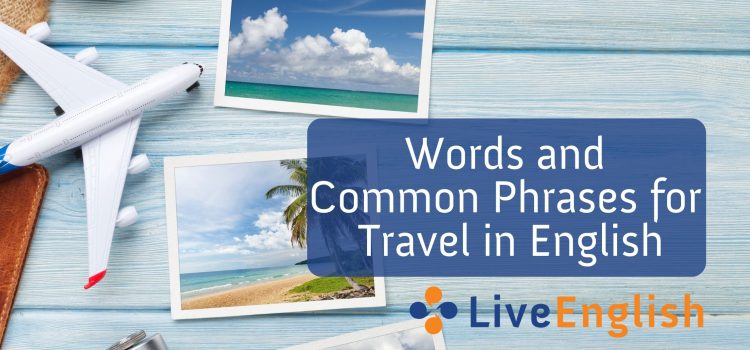
Embarking on a journey to a foreign country can be both exciting and a bit daunting, especially when language barriers come into play. But fear not, we’ve got you covered! This page is dedicated to all the globetrotters out there who are keen on enhancing their English language skills specifically for travel.
We’ve curated a list of 40 essential English words and phrases that will prove to be your best companions on your travels.
Whether you’re a seasoned traveler or planning your first overseas trip, mastering these words and phrases will not only boost your confidence but also enrich your travel experiences. So, let’s dive in and start preparing for your next adventure with our comprehensive travel vocabulary guide. Happy learning and safe travels!
40 essential English words and phrases for travel
- Passport – “Don’t forget to bring your passport to the airport.”
- Luggage – “Please make sure your luggage is not left unattended.”
- Reservation – “I have a reservation under the name Smith.”
- Itinerary – “Our itinerary includes stops in Rome, Paris, and London.”
- Destination – “Our final destination is Sydney.”
- Accommodation – “I’ve booked accommodation for three nights in the city center.”
- Sightseeing – “We’re going sightseeing in the old town tomorrow.”
- Currency – “What’s the local currency in Japan?”
- Boarding Pass – “Please have your boarding pass and identification ready.”
- Departure – “Our departure time is 6:00 PM.”
- Arrival – “Our estimated arrival time is 8:00 PM.”
- Customs – “You’ll need to declare any items at customs.”
- Visa – “Do I need a visa to travel to the United States?”
- Tourist – “As a tourist, I love exploring new places.”
- Landmark – “The Eiffel Tower is a famous landmark in Paris.”
- Guidebook – “I bought a guidebook to learn more about the city’s history.”
- Souvenir – “I bought a souvenir from each city we visited.”
- Jet Lag – “I’m feeling a bit of jet lag after the long flight.”
- Travel Agency – “The travel agency arranged all of our accommodations.”
- Backpack – “I prefer to travel with a backpack instead of a suitcase.”
- Could you help me, please? – When you need assistance.
- How much does this cost? – When you want to know the price of something.
- Where is the nearest…? – When you’re looking for something specific, like a bathroom or a subway station.
- I would like to book… – When you want to make a reservation.
- Do you speak English? – When you need to find someone who speaks English.
- I’m lost. Can you help me? – When you need directions.
- Can I have the menu, please? – When you’re at a restaurant and want to see the menu.
- I’m allergic to… – When you need to inform someone of your allergies.
- Can I have the bill, please? – When you’re ready to pay at a restaurant.
- What time does it open/close? – When you want to know the operating hours of a place.
- Can I have a ticket to…, please? – When you’re buying a ticket.
- Where can I catch the bus/train? – When you need to find the bus or train station.
- Is it far from here? – When you want to know the distance to a place.
- Can you recommend a good…? – When you’re looking for recommendations.
- Do you accept credit cards? – When you want to know if you can pay with a credit card.
- What’s the Wi-Fi password? – When you need to connect to the internet.
- I’d like to go to… – When you’re telling a taxi driver your destination.
- Is there a pharmacy nearby? – When you need to find a pharmacy.
- Can I try this on? – When you’re shopping for clothes and want to try something on.
- Could you take a picture of us, please? – When you want someone to take a photo of you and your group.
Wrapping Up Our English Travel Vocabulary Journey
And there you have it! We’ve journeyed through 40 essential English words and phrases that will help make your travels smoother and more enjoyable. Remember, language is a powerful tool that can open doors to understanding new cultures, making new friends, and creating unforgettable experiences.
Don’t worry if you can’t memorize all the words and phrases at once. The beauty of language learning is that it’s a continuous process. Keep practicing, and soon these words will become second nature to you.
But why stop at 40? If you’re eager to expand your travel vocabulary even further, we have an exciting offer for you. Follow us on Instagram and send us a direct message to get your hands on our comprehensive eBook (write “Travel eBook”), which features 200 essential English words and phrases for travel, plus 2 special bonuses!
We hope this guide will be a valuable resource for your travel adventures. Whether you’re exploring bustling cities, tranquil countryside, or exotic beaches, these phrases will help you navigate your way with confidence.
Thank you for joining us on this linguistic journey. We wish you all the best in your English learning and your future travels. Remember, every journey begins with a single step, or in this case, a single word. Happy travels and happy learning!
>> Learn more English vocabulary
Privacy Overview
Join The Newsletter

Travel + Beauty
Helpful Travel Expressions & Travel Phrases To Learn For Your Next Trip
Communication is a very important aspect when traveling. Here I have compiled this list of super helpful travel expressions and travel phrases to learn before your next trip.
It’s highly useful to learn words and travel phrases specific to the country you are visiting. Wherever you go you should have at least a basic knowledge of the local language and know some of the more common travel terms to get around and make connections with the people you meet along the way.
My collection of helpful expressions and questions will help you communicate whether you are in Greece admiring the Acropolis , searching for dolphins in Mauritius , or riding a camel in Abu Dhabi’s desert . These phrases will make exploring during your trip much easier and super enjoyable.
This article may contain affiliate / compensated links. For full information, please see our disclosure here.

Related posts:
- 66 Genius Traveling Hacks
- Idioms About Travel
- Carry On For Long Flights
- Souvenir Ideas To Collect When Traveling
HOW TO LEARN TRAVEL EXPRESSIONS
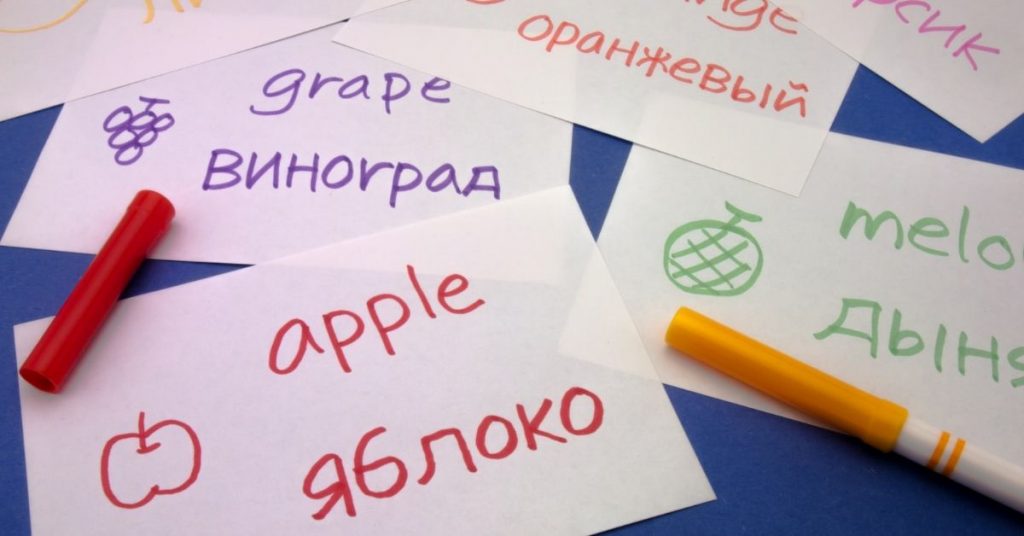
Whether you are already familiar with that language or just starting to learn, these travel phrases and travel expressions will be a perfect addition to your vocabulary to help you get by easily when traveling abroad.
If you learn some of these key travel phrases, you will be able to interact with locals, deal with various situations, and have a much more enjoyable and authentic experience during your trip.
There are many great sources these days to learn travel phrases for the country you are going to. You can listen to songs, movies , and books, and even watch a popular TV show from the country on Youtube.
An easy and convenient way to learn a new language fast is through applications. Most of us carry our phones with us 24/7 anyways. So when you get a spare minute you can review some words quickly by whipping out your mobile device.
Some of my favorite applications for learning languages are listed below:
- Google Translate : This is a free application that will translate your spoken words into the target language. This application is perfect to add all the travel expressions I listed below.
- Michel Thomas Method : One-time payment application that provides visual and auditory feedback to the language you are learning. This application goes more into depth for conversational tasks but is very easy to follow. I was able to learn Greek rather quickly using this application.
- Duolingo : Free version or paid subscription available. With the free version, you are able to get a good base of the preferred language you want to learn. Duolingo is set up as a game that makes it fun to learn a new language.
If you’re not into applications, Preply is an e-learning platform that allows you to learn a language one on one with a tutor. Get 50% off your first lesson right here .
VERY COMMON TRAVEL PHRASES
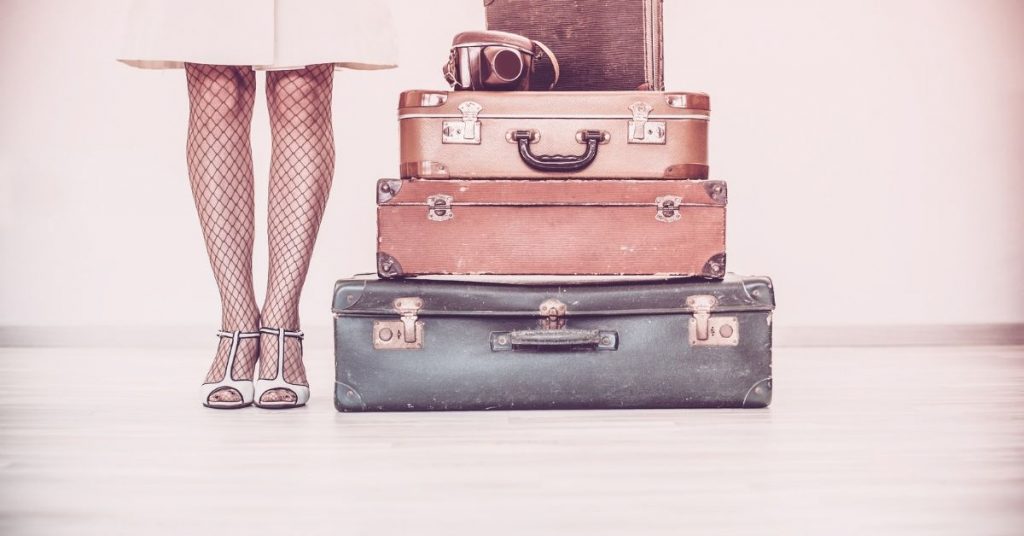
There may be common and obvious travel expressions, but they are of significant importance in many situations and vital for communication in most countries. It is recommended to keep these phrases and the translation handy by putting them in your notes section on your phone. I find this travel hack to be handy when the internet connection isn’t available.
Most of these expressions are short, so it won’t be difficult to memorize them! You can use them at the airport, at the bus or train station, when asking for directions, or simply as a sign of friendship and respect. A little effort can be quite useful in many places! Here are some examples:
- Hello/Goodbye
- Do you speak ____?
- Where is ______? / I’m going to _____?
- Thank you! If there is only one phrase I suggest you learn in a new language as a foreigner, is “thank you”. Travelers often find themselves relying on the kindness of strangers to help them navigate unfamiliar cities, plan their trip, and get home safely. Learning to say “thank you” is a good way to show your appreciation, and most people will respect the effort you have made to acknowledge in their own language.
- You’re Welcome
- I don’t understand
- Taxi, Bus, or Train
FREQUENTLY USED GREETING & FAREWELL TRAVEL TERMS

Greetings and farewells seem simple and easy, but should not be underestimated and are very important in a conversation. Knowing the basic greetings and farewells is crucial to be understood when traveling to another country. Some of the most common words that anyone should know are:
- Good morning
- Good afternoon
- Good evening
- How are you?
- Nice to meet you
TRAVEL EXPRESSIONS FOR THE AIRPORT

For those who have traveled somewhere in the world, you know how difficult it is to communicate with others, especially when you are at an airport . If you have never been in such a situation, or if you have come through it well at some point, it is probably because your knowledge of the language of the country is already quite good. Below are some phrases and vocabulary that will help you communicate with ease at the airport:
- What time is my flight?
- Where is my gate?
- I would like…
- What airline is my flight?
- Where is customs and immigration?
- Where are the restrooms?
- How much is _____?
- Do you accept payment in ________?
- Why is my flight delayed?
- Is there a shuttle bus?
- Where is baggage claim?
- Where is my suitcase?
- I cannot find my bag.
- I have a connecting flight to ______.
- Where is the taxi/bus stop?
TRAVEL PHRASES TO USE ON THE AIRPLANE
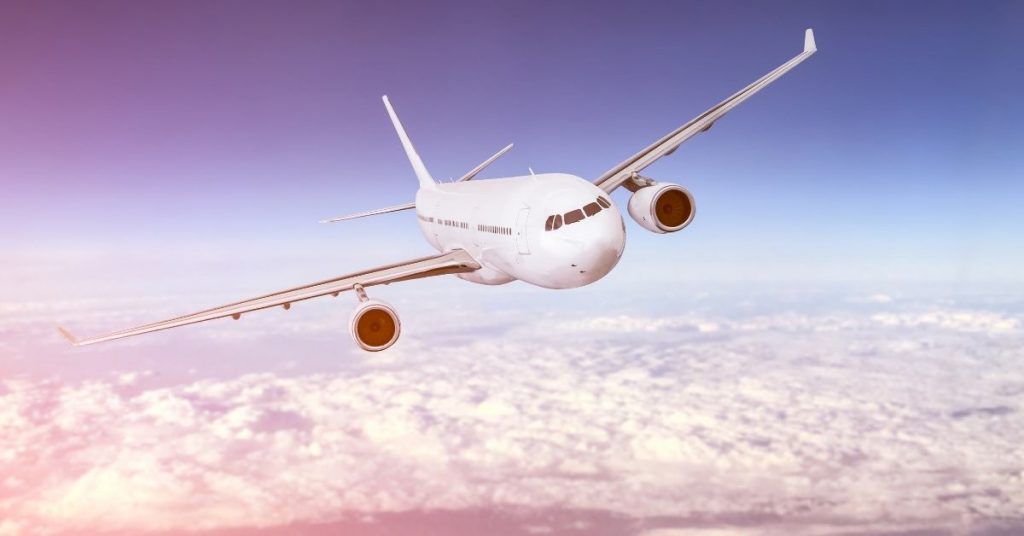
You may ask to eat, to buy, to change seats or simply to find out what time it is. These are some of the expressions you may need while on the plane:
- May I have a drink or something to eat?
- What is the time?
- Can I purchase ____?
- Can I have an aisle/middle/ end seat?
- Can I change seats?
USEFUL EXPRESSIONS FOR CUSTOMS
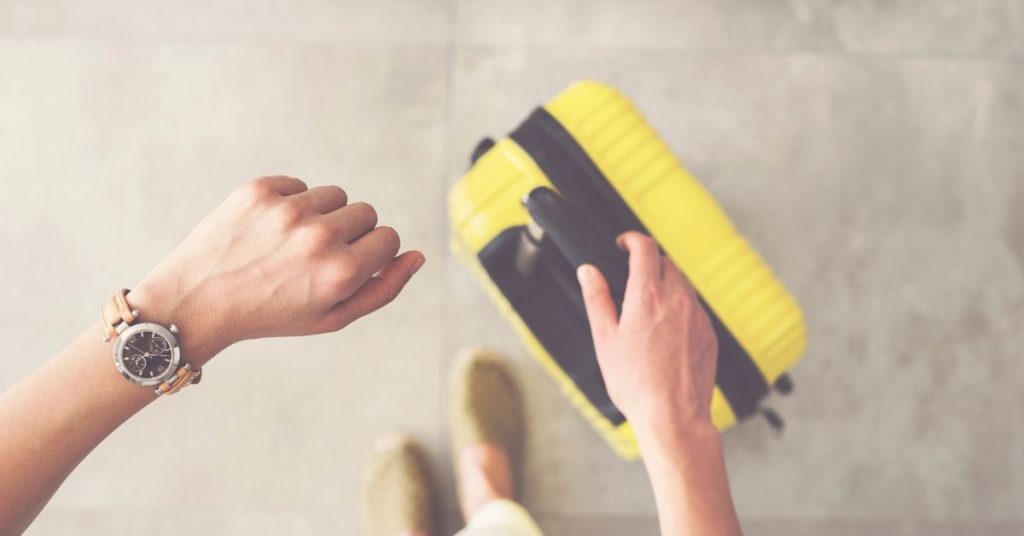
All travelers know you have to go through customs when you arrive and leave a country.. So here are some helpful travel phrases and travel terms you will need to learn in the language of the country you will be visiting:
- Where is my connecting flight?
- I will be visiting for ____ days.
- I am here for leisure/work.
- I will be staying at ______?
MOST COMMON PHRASES TO USE AT YOUR DESTINATION

You will inevitably have to ask for something at some point during your trip. Learning how to do so will help make your travels go a little more smoothly. These short travel phrases will definitely help you :
- Where is ______?
- Where can I exchange my money?
- I want to go _______?
- How much is ________?
- Where is the bus stop?
- I don’t understand.
- Where can I get a taxi?
IMPORTANT PHRASES FOR THE HOTEL

If you are traveling abroad, whether on business or at leisure, you will probably stay in a hotel. Choosing the right accommodation is an essential part to have a successful trip to a foreign country. However, staying in the wrong hotel can quickly disrupt your trip. Learn the hotel vocabulary the language wherever you are visiting to avoid any unpleasant surprises when you arrive. Here are some useful phrases when traveling that will be of help to you when you stay in a hotel:
- How many beds does the room have?
- What floor is the room located?
- Is a free breakfast included?
- Where are the elevators located?
- May I have more towels?
- What is the number to the concierge?
- I would like my room cleaned.
- I don’t need my room cleaned.
- Do you have Wifi?
- What is the Wifi password?
- When is check in/out?
- Can I have a late checkout?
- Can I have an extra key?
- What’s the combination for the safe?
- Are there good restaurants around?
USEFUL TRAVEL EXPRESSIONS FOR TRAVELING AROUND TOWN
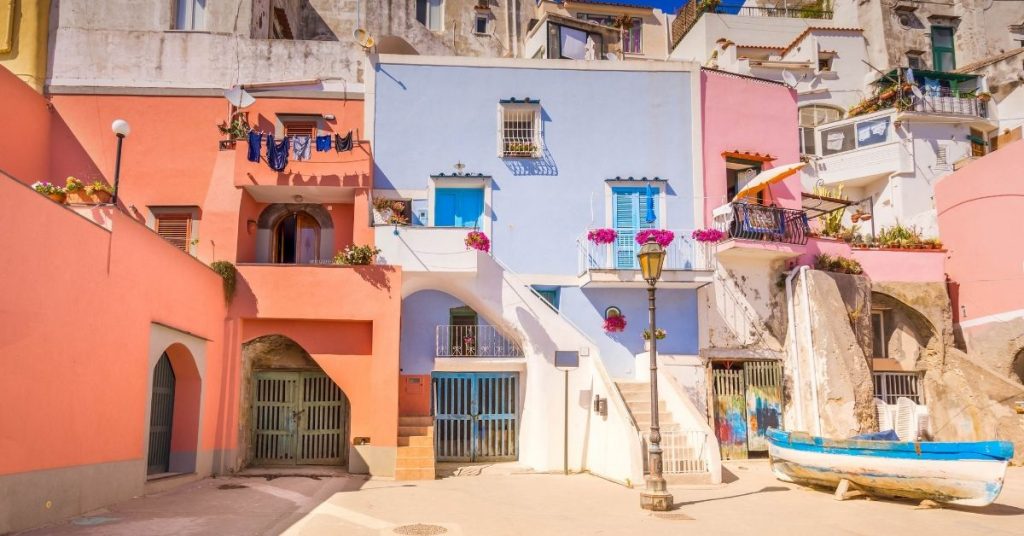
These phrases are helpful when exploring the town:
- Where is the grocery store?
- Where is the nearest hospital?
- How can I get to ____?
- What is the admission to enter?
- Do you have a discount?
USEFUL TRAVEL TERMS TO SPEAK WITH THE LOCALS

Traveling is about making connections across the world and creating memories, especially with the locals or others who are visiting.
If you’re wondering how to strike up a conversation with locals, there are many ways to mingle and meet people around the world. The best way to talk to local people is to do this in their own language. People appreciate it if you make an effort to speak their language when you visit their country, even if it’s only a few words.
Below are some sentences that may help you:
- Will you take a picture ?
- Where are you from? /How long have you lived here?
- Where is the best cafe?
- Where is the best place to eat ______? Insert a local food you have been wanting to try.
DINING OUT TRAVEL EXPRESSIONS
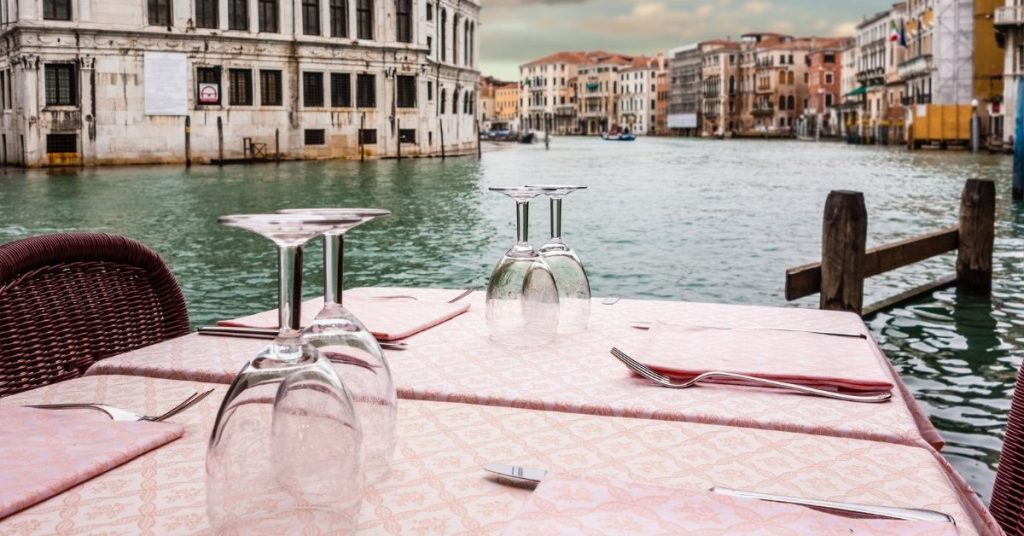
Food is undoubtedly one of the main features of cities and my highlight to traveling. The most useful travel phrases you will need are probably those you would use in a restaurant. Here are some of them:
- Table for _____ please.
- I would like to order ________.
- May I have a menu?
- Check please. Don’t forget to ask because in some countries it’s the norm for waiters to bring it to the table when requested.
- Water please!
- There is a mistake on my check. It is very common to make mistakes when it comes to the bill so remember this sentence.
- What are the specials?
- What are your recommendations?
- May I see the dessert menu?
- Can I have a to-go bag?
- You have a service charge?
- Do you take credit cards?
SHORT TRAVEL PHRASES FOR SHOPPING
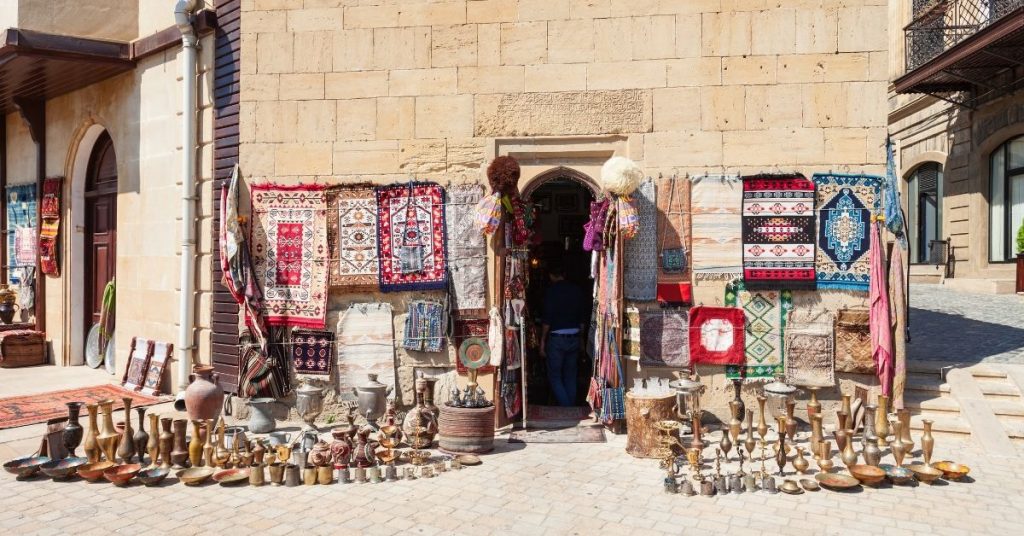
More than likely you will end up doing some shopping during your travels for clothing or souvenirs. The less you know, the less you will be able to negotiate against tourist price hikes. So take note of these questions:
- Do you take cash or card?
- You have a bigger/smaller size?
- May I have a receipt?
- When do you open/close?
- Where are the fitting rooms?
- Is this on sale?
- Can I return?
TRAVELING PHRASES FOR EXPLORING

Whether you decide to stay in town or go exploring outside for a day trip there are some phrases that would be beneficial to keep handy to help you on your exploration.
- I’m lost. Getting lost in a foreign country is very common; I advise you to learn this phrase by heart so you get help.
- Where is a bank?
- You have a map?
- How can I get to ____?
- How far is __________?
ESSENTIAL TRAVEL EXPRESSIONS FOR PROBLEMS AND EMERGENCIES

If we never had an emergency during our travels, that would be great, but things do happen. While we can do our best to travel safely and use our best judgment in every situation, there are certain words and phrases that are vital to know in case of an emergency.
When traveling abroad, remember to memorize the emergency number for each country as well as these phrases to help others to help you:
- My passport was stolen.
- My money was stolen.
- Call for the police
- Help me please. If you encounter something serious, shouting this word will attract people’s attention and provide an opportunity to get help.
- Where is the _______ Embassy?
- Call an ambulance
- Where is the pharmacy? Knowing the location of the pharmacy is essential in case you are ill or need medication.
- I am allergic to _______? I t is important to learn how to communicate your dietary restrictions to the people who prepare your meals. Be sure to learn to express what you can and can not eat, and if you are unsure,.Keep your dietary restrictions handy and written in the local language so that you do not risk being misunderstood.
You will hopefully not need any of these phrases in an emergency. But it’s better to be prepared anyway!
TRAVEL EXPRESSIONS CONCLUSION
I hope you found these travel phrases extremely helpful for you to prepare you for your journey. Learning the language of the country you are visiting is vital for communication, whether you are at the airport, exploring the country, or simply looking to make friends; you will need it wherever you go.
You may not speak it perfectly and you may not be sure of your accent, but the locals will certainly appreciate your efforts! The phrases above are useful expressions that you can use on your trip. Try them out, I sincerely hope you find them helpful as I do.
As an added bonus I have included all these travel phrases in English PDF as a FREE download so you can keep them handy.
RELATED POSTS:
- My Honest Preply Review
- 66 Effortless Traveling Hacks
- 30 Essential Carry-On Items You Need For Long Flights
- 11 Long Flight Tips
- How To Take Care Of Your Skin While Traveling
- Things To Do When Stuck At The Airport
- Gifts For Travel Lovers
LIKE THESE TRAVEL EXPRESSIONS? SHARE IT WITH OTHERS AND PIN IT IN YOUR TRAVEL PHRASES BOARD!

Recommended Articles
American express credit card & why you need to go platinum.

What’s In My Travel Makeup Bag? All The Products To Pack For Your Trip!

3 Free Travel Lightroom Presets To Brighten Your Photos

18 Comments
This is such a great guide! Unfortunately, I don’t have a natural flair for languages but I do really try to learn some important basics before I travel. This list is perfect to remind me of the top phrases I will need to know so I can focus my practice in the best place. Thanks for sharing!
Thanks for reading Hannah. I few phrases goes a long somewhere. So glad you enjoyed this list.
These are such helpful phrases to know. We always try to learn a little bit of the language wherever we are going to make it as smooth as possible (and because it’s fun, haha!)
So glad to hear you learn some phrases Megan. It is super fun learning another language.
What a helpful post! Pinned for future travel planning. I still laugh at my arrival in Switzerland after spending a week in France. We learned all the basic French we could. Then we asked how to say “hello” in Swiss German, and it’s “hello,” same as English. The poor guy kept yelling hello! Hello! He must have thought we were nutty tourists.
Oh what a funny story Sharon. So great you learn a few basic phrases when traveling. It always helps.
Great post! It kills me when people don’t even try to learn the basics when traveling somewhere new so I appreciate your suggestions for making it easy.
Thanks Melinda for reading. Yes, it is so polite when you learn some phrases. It kills me too!
Wow, this is a big list! I agree on learning a few key phrases, I’d have to write these down to remember them all!
Thanks for reading Cynthia! I have a free downloadable pdf for these phrases at the bottom of the post. No need to write them down!
This is such an incredible list!! We always learn some basics before we travel. It really makes it a little easier when a place is unfamiliar!
Hi Deb! It really does a lot! I couldn’t agree more!
This is such a great post. Some places are complete culture shocks and it’s great to know how to respect the culture when visiting . The locals will be more willing to help if they know you are trying .
Yes so true! They always seem more willing to help when you attempt the language.
Very useful, and hooray for Google translate that you don’t have to carry around a travel dictionary like in the good ol’ days
Right? It’s such a handy tool!
This is most helpful. Learning key phrases can be challenge. I like the apps with both the visual (printed pronunciation) and audio with natural speakers. I’ve been relying on Fodors Travel Phrases for some time. Another approach I found useful was to place post-it notes on the fridge with the fridge access password consisting of practising at least two phrases before opening the door.
Yes so true Anne they can be a challenge. I will have to check out that app!
Comments are closed.


- 29 Essential English Phrases for Traveling Abroad (and Connecting with People)

Traveling abroad can be an exciting and enriching experience, but it can also pose some challenges, especially if you’re not familiar with the local language.
English , being a widely spoken language around the world, can come to your rescue in various situations.
Whether you’re exploring a bustling city or relaxing on a tropical beach, knowing some essential English phrases can make your journey smoother and more enjoyable.
In this article, we’ll explore twenty-nine essential English phrases that will help you navigate through different aspects of your travel adventure.
I. Greeting and Introduction Phrases
When you’re traveling abroad, it’s always a good idea to start your interactions with a friendly greeting.
English phrases for greetings and introductions can help you establish a connection with the locals and make a positive impression. Here are some essential short travel phrases:
- “Hello, how are you?” : A simple and versatile greeting that can be used in any situation.
- “My name is [your name]. Nice to meet you!” : Introduce yourself and express friendliness when meeting new people during your travels.
- “Excuse me, do you speak English?” : Useful for determining if someone can communicate with you in English.
II. Asking for Directions Phrases
Getting around in a new place can be a bit confusing, but asking for directions in English can greatly simplify the process. These phrases will help you find your way:
- “Excuse me, where is the nearest [landmark/place]?” : Use this phrase to ask for directions to a specific location.
- “How do I get to [destination]?” : When you need directions to a particular destination, this question will come in handy.
- “Is it far from here?” : Use this phrase to determine the distance between your current location and the destination you’re seeking.
III. Ordering Food and Drinks Phrases
Exploring local cuisine is an integral part of traveling. Knowing English phrases for ordering food and drinks will enhance your dining experience:
- “I would like to order [dish/drink].” : Use this phrase to express your food or drink preferences.
- “Could you recommend a local specialty?” : Engage with the locals and get suggestions for authentic and delicious dishes.
- “Is there a vegetarian/vegan option?” : If you have specific dietary requirements, this phrase will help you find suitable options.
IV. Shopping Phrases
Shopping is a fun activity while traveling, and these English phrases will assist you during your retail therapy:
- “How much does this cost?” : Use this phrase when you want to inquire about the price of an item.
- “Do you have this in a different color/size?” : If you’re looking for variations of a particular item, this question will be useful.
- “Can I try this on?” : When shopping for clothes, this phrase allows you to check the fit before making a purchase.
V. Transportation Phrases
Navigating public transportation systems in a foreign country can be overwhelming, but these English phrases will help you communicate your transportation needs:
- “Is this the right bus/train to [destination]?” : Use this phrase to confirm if you’re on the correct mode of transportation.
- “When is the next bus/train?” : If you’re unsure about the departure times, this question will provide you with the necessary information.
- “How do I get to [landmark/place] by [mode of transportation]?” : Use this phrase to ask for directions using a specific mode of transportation.
VI. Accommodation Phrases
When you’re staying in a hotel or any other accommodation during your travels, these English phrases will assist you:
- “I have a reservation under [your name].” : Use this phrase when checking in at your accommodation.
- “Is breakfast included?” : If you’re unsure about the meal arrangements, this question will clarify.
- “Could you please provide extra towels/toiletries?” : If you need additional amenities, use this phrase to make your request.
VII. Emergency Phrases
While we hope you won’t encounter any emergencies during your trip, it’s crucial to know some English phrases to seek help when needed:
- “I need help!”: Use this phrase to attract attention and seek assistance in emergency situations.
- “Where is the nearest hospital/police station?” : If you require urgent medical attention or need to report a crime, this question will guide you.
VIII. Making Small Talk Phrases
Engaging in small talk with locals can help you learn more about the culture and create memorable connections. These phrases will assist you:
- “What is the weather like today?” : A common conversation starter that can lead to further discussions.
- “What are some popular attractions around here?” : Use this question to gather recommendations for places to visit.
- “Tell me about local customs and traditions.” : Show interest in the local culture and encourage people to share their knowledge.
IX. Expressing Gratitude Phrases
Showing gratitude is essential when interacting with locals during your travels. These phrases will help you express your appreciation:
- “Thank you very much!” : A simple phrase to convey your gratitude.
- “I really appreciate your help.” : Use this sentence to express sincere appreciation for someone’s assistance.
- “You’ve been very kind. Thank you!” : Express gratitude for someone’s kindness and hospitality.
X. Farewell Phrases
As your journey comes to an end, bid farewell to the people you’ve met along the way with these English phrases:
- “It was lovely meeting you. Goodbye!” : Use this phrase to say goodbye to someone you’ve had a pleasant interaction with.
- “Take care and have a safe journey!” : Show concern for the well-being of others as you part ways.
- “Hope to see you again someday!” : Express the desire to meet again in the future and maintain a connection.
FAQs: Travel Phrases in English
What phrases to know when traveling abroad.
When traveling abroad, it’s helpful to know phrases such as “Hello,” “Thank you,” “Excuse me,” “Where is…?” “How much does it cost?” and “Can you help me?” These basic phrases will assist you in various situations during your travels.
What is the idiomatic expression for traveling?
An idiomatic expression for traveling is “hitting the road” or “going on a journey.” These expressions convey the idea of embarking on a trip or exploring new places.
How do you say I am traveling in different ways?
You can express “I am traveling” in different ways, such as “I’m on a trip,” “I’m going on vacation,” “I’m exploring new destinations,” or simply “I’m traveling.”
What are some useful vocabulary words related to travel?
Useful vocabulary words related to travel include “passport,” “boarding pass,” “luggage,” “airport,” “hotel,” “sightseeing,” “reservation,” “departure,” “arrival,” “tourist,” “currency,” “adventure,” and “itinerary.” These words are essential for discussing and understanding travel-related topics.
Why is it important to learn English phrases for traveling?
Learning English phrases for traveling can help you communicate with locals, navigate unfamiliar surroundings, and make your trip more enjoyable. It allows you to connect with people, seek assistance when needed, and explore the local culture with greater ease.
Can I use translation apps instead of learning English phrases?
While translation apps can be helpful, they may not always provide accurate translations or convey the nuances of the English language. Learning essential phrases will enable you to have more meaningful interactions and adapt to various situations effectively.
How can I practice and improve my English for traveling?
Practicing English phrases regularly before your trip and engaging in conversations with native English speakers or language exchange partners can help you improve your language skills. You can also listen to English podcasts or watch travel-related videos to familiarize yourself with the language.
Are there any online resources for learning English travel phrases?
Yes, there are several online resources available, such as language learning websites , mobile apps, and YouTube channels, that provide lessons and tutorials specifically tailored for learning English travel phrases. Some reputable platforms include Preply and FluentU .
What are some common mistakes to avoid when using English phrases abroad?
When using English phrases abroad, it’s essential to speak clearly and slowly, especially if English is not the locals’ first language. Avoid using complex or slang expressions that may be difficult to understand. Additionally, be respectful of cultural differences and adapt your communication style accordingly.
There you have it – phrases for travel lovers!
Learning essential English phrases for traveling abroad can significantly enhance your travel experience. From greetings and directions to ordering food and engaging in small talk, these phrases will help you navigate various situations and connect with locals.
Remember to practice these phrases before your trip and embrace the opportunity to communicate in English during your travels.
Now, get ready to embark on your adventure and enjoy the journey!
Interested in igniting your creativity? Dive into the world of my literary works and experience the power of imagination.
Don’t miss out on the opportunity to boost your English language skills – check out our other posts!
- How to Overcome the Fear of Speaking English (Tips and Tricks)
- How to Improve Your English Pronunciation (5 Simple and Effective Ways)
15 Easy English Learning Hacks for Busy People
5 online learning fears holding back esl students (and how to overcome them), about the author.
Related Posts

Leave a Comment Cancel Reply
Your email address will not be published. Required fields are marked *
Save my name, email, and website in this browser for the next time I comment.
This site uses Akismet to reduce spam. Learn how your comment data is processed .
Travel Phrases and Expressions You Need To Know
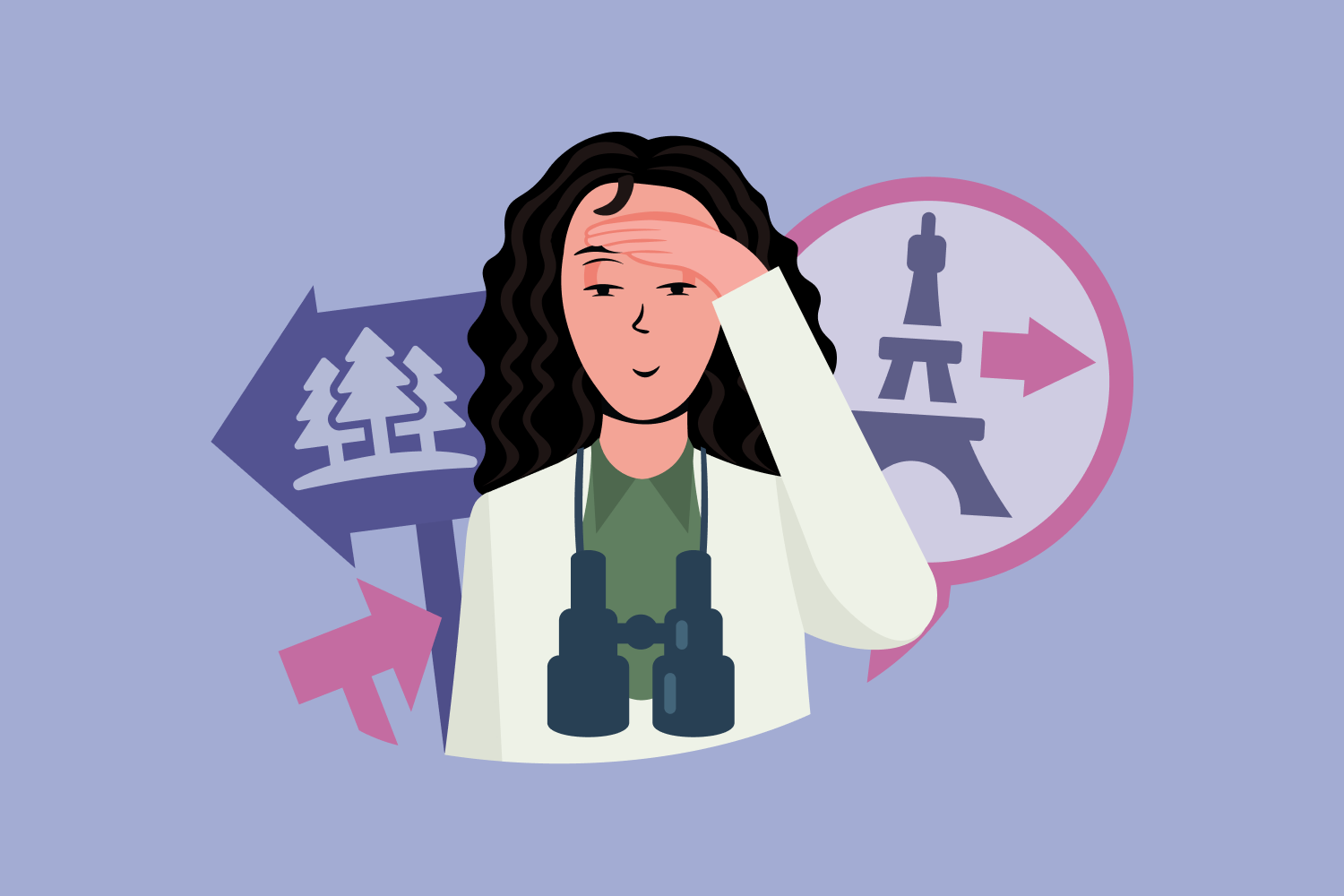
Communication is vital on any trip abroad. If you can’t communicate with the locals, doing anything more than the basics will be challenging. The good news is that a little bit of effort can go a long way. By learning some key travel words and expressions, you’ll be able to ask for directions, order food, and even make new friends.
This guide is designed for anyone who needs a quick reference for essential English traveling phrases. Whether you are traveling for business or pleasure, this guide will help you communicate effectively with those you meet along the way.
Why It’s Important to Learn Key Travel Words and Expressions
In order to get the most out of your travel experience, it is important to be able to communicate with those around you. The better you can do it, the more likely you will have a positive experience. With that in mind, let’s look at the main reasons why you should bother learning essential travel English expressions:
- To get around town without any trouble. If you can’t ask for directions, it’ll be tough to find your way around. And if you can’t read street signs or menus, good luck finding a place to eat or sleep. By learning some essential travel expressions, you’ll be able to get where you need to go without any problems.
- To make new friends along the way. If you’re only interested in communicating with locals in order to get from point A to point B, your experience will be pretty limited or even boring. But if you take the time to learn how to communicate with those around you, your travels will be more enjoyable, and you’ll also have a better chance of making lasting memories and even lifelong friends.
- To experience the local culture. If you’re only interested in visiting the major tourist attractions, you’re missing out on what makes travel unique. By taking the time to learn about the people and the culture, you’ll be able to get a much deeper understanding and appreciation for your destination. Not to mention, it’s just more fun!
By learning the essential words about travel, you’ll be able to navigate your way around town and make new friends – all without breaking a sweat. Therefore, it’s well worth taking the time to learn a few key phrases before you set off on your next adventure.
The Most Common Travel Expressions And Phrases
In this section, we’ll look at some of the most common traveling phrases you’ll need to know. To make things easier, we’ve broken them down into different categories, so you can focus on the ones that are most relevant to your needs. Without further ado, let’s get started!
It’s always a good idea to start off on the right foot by using some basic greetings in the local language. Not only is it polite, but it shows that you’re making an effort to communicate with those around you. Greetings can also be a great way to break the ice and start a conversation. The following are some basic greetings that you can use in almost any situation:
- Hi/Hello/Good morning/Good afternoon. These are all general greetings that people use in most situations.
- How are you? This is a great way to start a conversation with someone new.
- Nice to meet you. Use this when you’re meeting someone for the first time.
- Thank you. Always remember to say thank you when someone does something for you. It’s a show of appreciation that goes a long way.
- You’re welcome. Use it after someone says thank you to you. It’s a polite way to respond.
- What’s your name? This is a great question to start off with when meeting someone new.
- My name is... Use this phrase to introduce yourself to someone new.
These are just a few of the most basic greetings that you’ll need to know. Of course, there are many more out there, but these should cover most situations you’ll encounter while traveling.
Travel Phrases for the Airport
The airport can be a confusing and stressful place, so it’s important to know basic sentences that will help you get through the experience. The following are some essential travel phrases for the airport:
- I’m going to.. . Use this phrase to tell someone your destination.
- What is my gate number? This is how you determine which gate you must go to board your plane.
- When does my flight leave? Use this question to find out when it’s time for your flight to take off.
- Where is the nearest restroom/bathroom? These are two important places that everyone needs at some point!
- Can I bring this on the plane? If you’re unsure about what items are allowed on a plane, use it before trying to board with them.
Now that you know some basic airport expressions, you should be able to navigate your way through the airport with ease.
Phrases to Use on the Airplane
Once you’re on the plane, it’s time to sit back and relax. But there are still some English travel phrases that you’ll need to know in order to make your flight go smoothly. The following are a few of the most important ones:
- Can I have a blanket? If you get cold easily or just want something to snuggle up with, this is the phrase for you.
- Can I have a pillow? This is another excellent way to make yourself comfortable on a long flight.
- I’d like something to drink. You can say it when you’re thirsty and want something other than water.
- I’m feeling sick/nauseous/dizzy. These are all different ways of saying that you might vomit, so it’s best to use one of them if that’s how you’re feeling!
- May I purchase headphones? If you want to watch in-flight entertainment or need some peace, this is the phrase for you.
Now that you’ve learned a few key travel sentences, your flight should be much more enjoyable. Just remember to sit back, relax, and enjoy the ride!
Important Expressions to Use in the Hotel

After a long day of travel, there’s nothing better than checking into your hotel room and getting some rest. But before you can do that, you’ll need to know a few key English travel phrases to make the process go smoothly. The following are a few of the most important ones:
- I’d like to check in . This is how you start the process of checking into your hotel room.
- My reservation is under... If you made a reservation ahead of time, use this phrase to let the front desk know your name.
- Do you have any vacancies? This is a way of asking if rooms are available at the hotel.
- How many beds are in the room? If you’re traveling with others, it’s always good to know how many beds are in the room so everyone can be comfortable.
- What is the price per night? This is an important question to know how much your stay will cost.
- How do I access the Internet? If you need to get some work done or just stay connected while on vacation, this is the phrase for you.
These are just some of the most important questions and expressions that you’ll need to know when staying in a hotel. Just remember to be polite and respectful, and your stay should be a pleasant one!
Expressions for Getting Around
Whether you’re taking a taxi, renting a car, or using public transportation, it’s important to know how to get around without getting lost. The following are some essential travel terms and phrases that will come in handy:
- Where is...? Use it when you have no idea where you are and need directions.
- Where is the nearest ATM? If you need cash, you can ask this question a local.
- Where is the bus stop/train station/subway? These are all different ways of asking where a specific form of transportation is located. Just be sure to use the correct one for your location!
- How much does a ticket cost? This is an important question if you’re planning on using public transportation.
- Can I rent a bike/car? This expression will come in handy if you need your own set of wheels. Just remember to be aware of the local traffic laws before hitting the road!
Now that you know some basic phrases for getting around, you should have no trouble getting to your destination. Just remember to take it slow and ask for help if you need it.
Helpful Travel Terms for Dining Out
If you’re planning on doing any dining out while you’re traveling, it’s a good idea to familiarize yourself with some basic traveling sayings. This way, you can avoid any potential confusion or embarrassment. Here are a few of the most important ones:
- A table for two/four. This is how you request a table at a restaurant. Just be sure to specify how many people will be joining you.
- Can I see the menu, please? This is always the first step when ordering food at a restaurant.
- I’ll have the... Once you’ve decided what you’d like to eat, use this phrase followed by the name of your dish.
- Could I get...? If there’s something specific that you’d like, such as extra sauce or vegetables , use this phrase followed by what it is that you want.
- The bill, please. When you’re finished eating and would like to pay, use this phrase, and your server will bring over the check.
- Can I take this to go? If you’re in a hurry, this is the phrase for you. Just remember that not all restaurants offer take-out options.
If you remember this vacation vocabulary, ordering food at a restaurant should be a breeze. Just be sure to have your pronunciation down before you place your order.
Useful Expressions for Shopping
One of the best parts of travel is being able to experience all the different markets and shops that each destination has to offer. To make things a little easier, we’ve compiled a list of expressions that will come in handy when shopping around:
- Do you have this in a different size/color? This is useful if the item you want is out of stock or unavailable in your size.
- How much does this cost? When in doubt, always ask before purchasing an item.
- Can I try this on? This is a must if you’re buying clothes or shoes. Always make sure that they fit before committing to a purchase.
- I’ll take this one. Use it when you’re ready to make your purchase and hand over the item that you wish to buy.
- Do you take credit cards? This is a good question to ask if you don’t have cash on hand.
So, in case you were wondering what to say when shopping on your next trip, these expressions should come in handy. Just remember to haggle where appropriate – it’s all part of the fun.
Essential Phrases in Case of Emergencies and Problems
Nobody likes to think about getting into an emergency situation while they’re traveling, but it’s always best to be prepared. Here are some useful words for traveling that you can use if you find yourself in a sticky situation:
- Help! This is the most important word that you’ll need to know in case of an emergency. It will immediately grab attention and let people know that you need assistance.
- I don’t understand. Use this phrase if you’re lost or confused and need someone to explain things more clearly to you.
- Where is the nearest...hospital/police station/embassy? If you find yourself in a dangerous or difficult situation, these are all places that can offer help and assistance.
- Please call... The police/an ambulance/the fire department. Again, this is for emergencies only – but it could literally be a lifesaver if things go wrong.
- I’m lost. Can you help me? If you’re feeling disoriented and are having trouble finding your way, asking for directions is always a good idea.
So, there you have it – a basic guide to some of the essential phrases about travel that you’ll need to know before setting off on your next trip!
How to Learn Travel Phrases
Here are a few tips to help you learn and remember the essential expressions in this guide:
- Try to use the words associated with traveling as often as possible. The best way to learn anything is by doing it, so make an effort to use your new travel vocabulary as often as you can. Not only will this help you to remember what you’ve learned, but it’ll also help build your confidence in using it. You can use online dictionaries like Cambridge Dictionary or Merriam-Webster to look up words and check the correct pronunciation of words.
- Practice with a friend or family member before your trip. If you know someone who speaks English, ask them if they wouldn’t mind helping you practice using your new vacation phrases. This is a great way to get some real-world practice before putting your skills to the test for real on your trip abroad.
- Listen to native speakers. One of the best ways to learn any language is by listening to those who speak it natively. If you have the opportunity, try listening to English speakers as often as possible – whether it’s TV, movies, or music. The more exposure you have, the better your chances of picking up on the language nuances.
- Be patient, and don’t get too discouraged if you make mistakes when learning words for travelers. Everyone makes mistakes when learning something new, so don’t get too down on yourself if you do too. Just keep practicing, and eventually, you’ll get the hang of it.
- Relax and have fun. Learning the traveling vocabulary should be enjoyable, so try not to put too much pressure on yourself. The more fun you have, the more likely you are to stick with it and see success in the end.
With a little bit of effort, anyone can learn the essential expressions – no matter where they’re from or what their level of language might be.
Improving Your Traveling English with the Promova Platform
In order to improve your English for travel or any other purpose, you can use the Promova language learning platform . Promova offers a variety of features to help you learn and improve your language skills, including:
- Personalized learning experience based on your unique goals and needs. You can set your own goals and track your progress over time. English for travelers is one of such goals.
- Interactive exercises and games to practice what you’ve learned and tackle your knowledge gaps. They can be customized to focus on the areas where you need the most practice.
- Real-world situations and scenarios to help you prepare for using your new language skills in various situations. Topics include making hotel reservations, ordering food at a restaurant, and more.
- A supportive community of other language learners to help motivate and encourage you. You can also connect with other learners who are interested in similar topics.
You can choose between individual classes with a private tutor or group classes with other students at your level, so you will learn in a way that’s best for you. Our tutors are all native speakers with years of experience teaching English for travel, so you can be confident that you’re getting the best possible instruction. During the classes, you’ll have the opportunity to practice using your new language skills in a variety of real-world situations, so you can be confident and prepared when you use them for travel or anything else.
To help you with travel vocabulary, we have developed an app that you can use to learn the words and phrases you need for specific situations, like booking a hotel room or ordering food at a restaurant. The app is free to download from the App Store or Google Play and is available for iOS and Android devices.
Whether you’re looking to improve your English for travel or any other purpose, Promova can help you reach your goals. Contact us today to learn more about our platform and how we can help you achieve success. You can also practice how to pronounce travel phrases and expressions with this video .
Learning key travel sayings is a great way to make your trip abroad more enjoyable. Not only will it help you communicate better with those you meet along the way, but it’ll also give you a greater sense of confidence in using the language.
While this guide is by no means exhaustive, it covers many of the essential expressions that you’ll need to get by on your travels. So grab a cup of coffee, put your feet up, and start learning – your next great adventure awaits. Furthermore, by following the tips from this guide, you’ll be well on your way to becoming more confident and proficient in using traveling English.
Do I need to know English if I want to travel?
It’s not a requirement, but it certainly makes things easier. Your trip will be more enjoyable if you can communicate with those you meet along the way. Additionally, knowing some key traveling words will help you feel more confident using the language – even if you’re not fluent.
What is the best way to learn travel English?
There is no one-size-fits-all answer to this question. It depends on your level of English and your learning goals. If you’re a beginner, we recommend starting with basic traveling expressions. Once you’re more comfortable, you can move on to more advanced topics, such as booking accommodation or ordering food at a restaurant.
What are some tips for learning English for travel?
Make a list of the topics you want to cover. This could include booking a hotel room, ordering food in a restaurant, or asking for directions. Then, find resources that focus on these topics. There are many great books, websites, and apps out there that can help you learn the basics of English for traveling. Finally, practice using your new skills. Finally, practice using your new skills.
What are some common mistakes made by travelers when speaking English?
One common mistake is using too many filler words, such as “like” or “um.” This can make it difficult for the person you’re speaking to understand what you’re saying. Another mistake is using overly formal language. While it’s always polite to use please and thank you, using too many formal words can make you sound unnatural.
- 2024 TRAVEL UPDATE
- Work with us
- Beyond Bologna
- Regions of Italy
- Travel books
- Best group tours
- Itineraries
- Accommodation guide
- Italian phrases for travel
- Rocket Italian review: 2024 update
- Ultimate Italy Travel Planner
- City Planners
- Essential Guides
- Italy themed gift ideas
- Trip planning services
Learn Italian
101 basic italian phrases for travel you need to know for your trip to italy.
This article may contain compensated links. See our full disclosure here
If you’re planning on visiting Italy then it’s a good idea to learn some key Italian phrases, words and sentences. In this guide to basic Italian phrases for travel, we step you through the most useful ways to communicate on your trip to Italy. After all, language is a big part of Italian culture and you want to experience it all, am I right?
Making an effort to understand and speak Italian on your trip is not simply a matter of respect – although we think this is very important too. When you talk to people in their language they appreciate it and experiences open up to you that would not have been possible if you had been speaking English.
Article contents
So let’s get started with the common Italian phrases and words that will be most useful to you on your travels.
Basic Italian phrases
When you visit Italy, these are the most common words and phrases that will demonstrate you have made some effort to speak the local language. Learning these useful Italian words will help you talk to all manner of people during your trip.
Note – We’ve provided a phonetic pronunciation guide after the Italian translation for each word. If you really want to get the accent right a little extra study is recommended. We’ve provided some useful resources at the end of this article to help you learn Italian travel phrases useful for your trip.
Yes – Si – See
No – No – Noh
Please – Per favore – Pehr fah- voh -reh
Thank you – Grazie – Grah -tsee-eh
You’re welcome – Prego – Preh -goh
Cheers! (To your health) – Salute! – Sah -loo-tay
Excuse me (for attention) – Scusi – S kooh – zee
Excuse me (to pass by) – Permesso – Pehr- mehs -soh
Do you speak English? – Parla Inglese? – Parh-la een-glay-zeh
I don’t understand – Non capisco – Non kah -pee-skoh
I’m sorry – Mi dispiace – Mee dees- pyah -cheh
Common greetings in Italian
One thing we really love about visiting Italy is the cultural differences and norms. In Italy, saying “good morning” is not simply a throwaway line. You should always greet people wherever you go – when entering a shop or restaurant, to hotel staff, on the bus or at a cultural sight. It’s the expected thing to do.
A friendly “buon giorno!” with a smile will go a long way. So here are the most common Italian greetings and their context so you get it right! Generally you use the formal with people you don’t know, especially older people. The informal is used between friends.
Good morning (formal) – Buon giorno – Bwohn- johr -noh
Good afternoon (formal) – Buona sera – Bwoh -nah- seh -rah
Good night (formal) – Buona notte – B woh – nah – noh – teh
Hi / Bye (informal) – Ciao! – C how
Good bye (formal) – Arrivederci – A hr -ree-veh- dehr -chee
My name is … – Mi chiamo – Mee kyah -moh
What is your name? – Come si chiama? – Koh -meh see kyah -mah?
Pleased to meet you – Piacere – Pyah- cheh -reh
How are you? (formal) – Come sta? – Koh -meh stah?
Good thank you – Bene grazie – B eh -neh grah -tsee-eh

How to say numbers in Italian
While you don’t need to be able to count to 100, a good grasp of numbers up to 12 at least (for the hours of the day) will stand you in good stead. After all, you need numbers when you’re at a restaurant – una pizza per favore! (a pizza please!)
One – Uno – Oo -noh
Two – Due – Doo -eh
Three – Tre – Treh
Four – Quattro – Kwah -troh
Five – Cinque – Cheen -kweh
Six – Sei – Say
Seven – Sette – Seht -tey
Eight – Otto – Oh -toh
Nine – Nove – Noh -veh
Ten – Dieci – Dee- EH -chee
Eleven – Undici – Oon – dee-chee
Twelve – Dodici – Doh -dee-chee
To learn more about counting in Italian click here
Telling the time and days of the week
Here are the basics of telling time in Italian, plus days of the week and other useful sentences for making reservations and plans. Italians generally use a 24 hour clock but also understand the 12 hour clock if you specify morning and afternoon.
In the morning – Di M attina – Dee mah- teen -ah
In the afternoon – Di p omeriggio – Dee poh-meh- reed -joh
In the evening – Di Sera – Dee se h – rah
Noon – Mezzogiorno – Mehd-dzoh- johr -noh
At what time? – A che ora? – Ah kay oar-ah?
Nine o’clock in the morning – Le nove – Le noh-vay
Eight o’clock in the evening – Le otto di sera / – Le ot-to dee seh-rah
Monday – Lunedì – Loo-neh- dee
Tuesday – Martedì – Mahr-teh- dee
Wednesday – Mercoledì – Mehr-koh-leh- dee
Thursday – Giovedì – Joh-veh- dee
Friday – Venerdì – Veh-nehr- dee
Saturday – Sabato – Sah -bah-toh
Sunday – Domenica – Doh- meh -nee-kah
Today – Oggi – Ohd -jee
Yesterday – Ieri – Yeh -ree
Tomorrow – Domani – Doh- mah -nee
Want to speak more Italian?
Check out our review of Rocket Italian , one of the best online courses for learning Italian.
Useful phrases at restaurants
No doubt your Italy trip includes a plan to enjoy a few meals at restaurants. And we’re sure ordering a gelato or two is also high on your list. Let’s get you ready with these essential Italian phrases you need for ordering food or at restaurants. These may be the times that you interact with Italians the most so practice your greetings too!
Can I see the menu please? – Il menu, per favore – Eel men-oo, pehr fah- voh -reh
What do you recommend? – Che cosa ci consiglia? – Kay koh-za chee kon-seel-ya?
I’m allergic to… – Sono allergica/o a.. . – Son -oh ah -ler-gee-koh / kah ah
Gluten / Dairy / Fish – Glutine / Lattecini / Pesce – Gloo-teen-ay / Lah-tay-cheen-ee / Pesh-ay
House wine – Vino della casa – Vee -noh del-lah car-sah
Red / white wine – Vino rosso / bianco – Vee – n oh ross-oh / bee-ahn-koh
A glass / bottle – Una bicchiere / una bottiglia – OO -nah beek- kyeh -reh / boht- tee -lyah
Appetizer – Antipasto – Ahn -tee-pah-stoh
First course – Primo – Pree -moh
Second course – Secondo – Sek -kon-doh
Dessert – Dolci – Doll -chee
Two flavors please – Due gusti, per favore – Doo -eh goo-stee, pehr fah- voh -reh
Where’s the bathroom? – Dov’è il bagno? – Doh- veh eel bahn -yoh?
The check (bill) please – Il conto, per favore – Eel kon-toh, pehr fah- voh -reh
Can I pay by card? – Posso pagare con la carta? – Pohs -soh pah- gah -reh kon la cahr-tah?
Words to know when you are visiting museums
Visiting museums and attractions is a big part of many Italian itineraries. In this section, we’ve given you some useful phrases in Italian to help you buy tickets and ask common questions.
When does it open / close? – Quando si apri / chiude? – Kwahn -doh see ah-pree / chee-oo-deh?
Two adults / one child – Due adulti / un bambino – Doo -eh ah-dool-tee / oon bahm-bee-noh
One / two ticket/s – Un / due biglietto/i – Oon beel-yet-toh / tee
One senior – Un pensionato – Oon pen-seyoh-nah-toh
One student – Uno studente – Ooh -noh stoo-den-teh
Where is the bag store / cloak room? – Dov’è la guardaroba? – Doh-veh lah gard-ah-robe-ah?
Asking for directions in Italian
If you get lost or need help with directions, these helpful words in Italian will come in handy.
Where is… ? – Dov’è…? – Doh-veh … ?
Entrance – Entrata – En -trah-tah
Exit – Uscita – Ooh -shee-tah
Left – Sinistra – See – nee-stra
Right – Destra – Deh -stra
Straight ahead – Dritto – Dree-toh
Forward – Avanti – Ah -vahn-tee
Back – Dietro – Dee-et-roh
Useful words for transport and getting around
Most visitors to Italy will need to take a train or bus, or ride in a taxi. These phrases will be useful in these situations when it is likely you may need to ask for help to reach the right platform or bus stop.
Where is the train station? – Dov’è la stazione? – Doh-veh lah stah-tzee-oh-neh?
Where is the bus stop? – Dov’è la fermata – Doh-veh lah fur-mah-tah?
One way – Andata – Ahn – dah-tah
Return – Ritorno – Ree -torn-oh
What platform for Rome? – Da quale binario per Roma? – Dah kwah-lay bin-ah-rio pehr Roh-mah?
Newstand (for bus tickets) – Tabacchi – Tah-back-kee
Shopping words in Italian
Time to go shopping! Make sure you’re ready with these key phrases.
I would like… – Vorrei… – Vor-ray…
How much is this? – Quanto costa questo? – Kwahn -toh kohs -tah kwehs -toh??
OK I’ll take it – Va bene, lo prendo – V ah beh -neh , loh prehn- doh
I don’t want it – Non lo voglio – N ohn loh voh- lyoh
Can you ship to…? – Puoi spedire a? – Pwoy sped -ear-eh ah?
What to say if you need help in Italian
We hope you never need to use these phrases but it’s a good idea to know them “just in case”.
Help! – Aiuto! – Ay-oo-toh!
I need a doctor – Ho bisogno di un dottore – Ho biz-ohn-nyo dee oon dot-tor-reh
Call the police – Chiami la polizia – Kee-ya-mee la po-lee-zee-ah
Look out! – Attento! – At – ten-toh
Go away! – Vai via! – Vy vee-ah!
Want to get beyond basic Italian phrases for travel?
These days there are a wealth of resources to help you learn Italian. You can use handy apps, books and podcasts to get started and we outlined some of the best of these in this article .
But, if you want to construct your own basic Italian sentences and perfect your accent, a systematic approach with a proven method will help you make progress quickly. After much trial and error, we enjoy using Rocket Italian . This online course combines verbal cultural situation lessons with grammar and vocabulary to get you speaking Italian quickly. My accent also improved significantly thanks to the voice recognition tasks.
Another option for travelers wanting a quick start to learning Italian for their trip is the fast track method developed by our friends at Intrepid Italian. Designed to get you speaking the key phrases you need for your trip, this short course aims to get you speaking travel ready Italian in 2 weeks > more info .
Planning a trip to Italy?
We love travel in Italy and sharing our knowledge. Read our Italy trip planning guide or join our FREE Italy travel planning community . Our 140,000+ members are happy to answer questions about your itinerary, how to get from place to place, the best places to stay and fun things to do.
Sign up for our news and podcast updates where we share mini guides, tips, exclusive deals and more and we'll send you our Italy Trip Planning Checklist to say grazie ! >> click here to subscribe
Please share if you found this article useful
You are using an outdated browser. Please upgrade your browser or activate Google Chrome Frame to improve your experience.
Japanese Phrases for Tourists: 116 Essential Phrases for Your Japanese Vacation
Before I traveled to Japan for the first time, everyone assured me that “Everybody speaks English there,” and I wouldn’t need to use Japanese at all.
But in reality, most of the people I encountered in Japan had a fairly elementary level of spoken English .
For a better travel experience, you should learn some basic travel words and phrases in Japanese.
Greetings and Basic Japanese Phrases
Airport phrases you’ll hear, airport phrases you’ll use, asking for directions, receiving directions, transportation phrases, hotel phrases, eating and drinking in japan: what you’ll hear, eating and drinking in japan: what you’ll say, shopping in japan: phrases you’ll hear, shopping phrases you’ll use, number of items in japanese, tips to use your new phrases: politeness and pronunciation, how to study these japanese travel phrases.
Download: This blog post is available as a convenient and portable PDF that you can take anywhere. Click here to get a copy. (Download)

I’ll provide the hiragana, kanji and romaji for each word, and will explain the use of certain Japanese phrases for tourists in context.
1. Hello — konnichiwa
2. good morning — ohayou gozaimasu, 3. nice to meet you — hajimemashite, 4. goodbye — sayounara, 5. please — onegaishimasu, 6. thank yo u — arigatou gozaimasu, 7. you’re welcome — dou itashimashite, 8. excuse me/sorry — sumimasen.
This is definitely one to memorize. I say すみません at least 30 times a day in Japan. It’s a magical word.
It helps you push through a crowd, get attention from a waiter, ask for directions or be excused for basically any touristy blunder.
Simply saying すみません and gesturing is a pretty good way to express that you need help, but don’t speak Japanese.
9. Yes — hai
10. no — iie, 11. let’s eat/ “bon appetit” — itadakimasu .
Similar to the French “ bon appetit” , this is what Japanese people say before they eat. It doesn’t have a literal translation in English, but it’s a way to give thanks for a meal .
You should also remember this phrase’s pair: ごちそうさま (gochisousama) or ごちそうさまでした (gochisousama deshita). These phrases are used at the end of a meal and translate as “What a good meal,” or “Thank you for the meal,” the latter being the more polite form.
12. I don’t understand — wakarimasen
13. i don’t speak japanese — nihongo o hanashimasen, 14. do you speak english — eigo o hanashimasu ka , 15. can you please repeat that — mou ichido itte kudasai, 16. can you please speak slowly — yukkuri hanashite kudasai, 17. what is your name — onamae wa nan desu ka, 18. my name is… — watashi no namae wa…, 19. what is this — kore wa nan desu ka.
これ and それ literally just mean “this” and “that.”
20. How much does this cost? — kore wa ikura desu ka?
If you’re pointing at something that you can’t reach, you say それは いくらですか?
21. Can you please help me? — tasukete moraemasuka ?
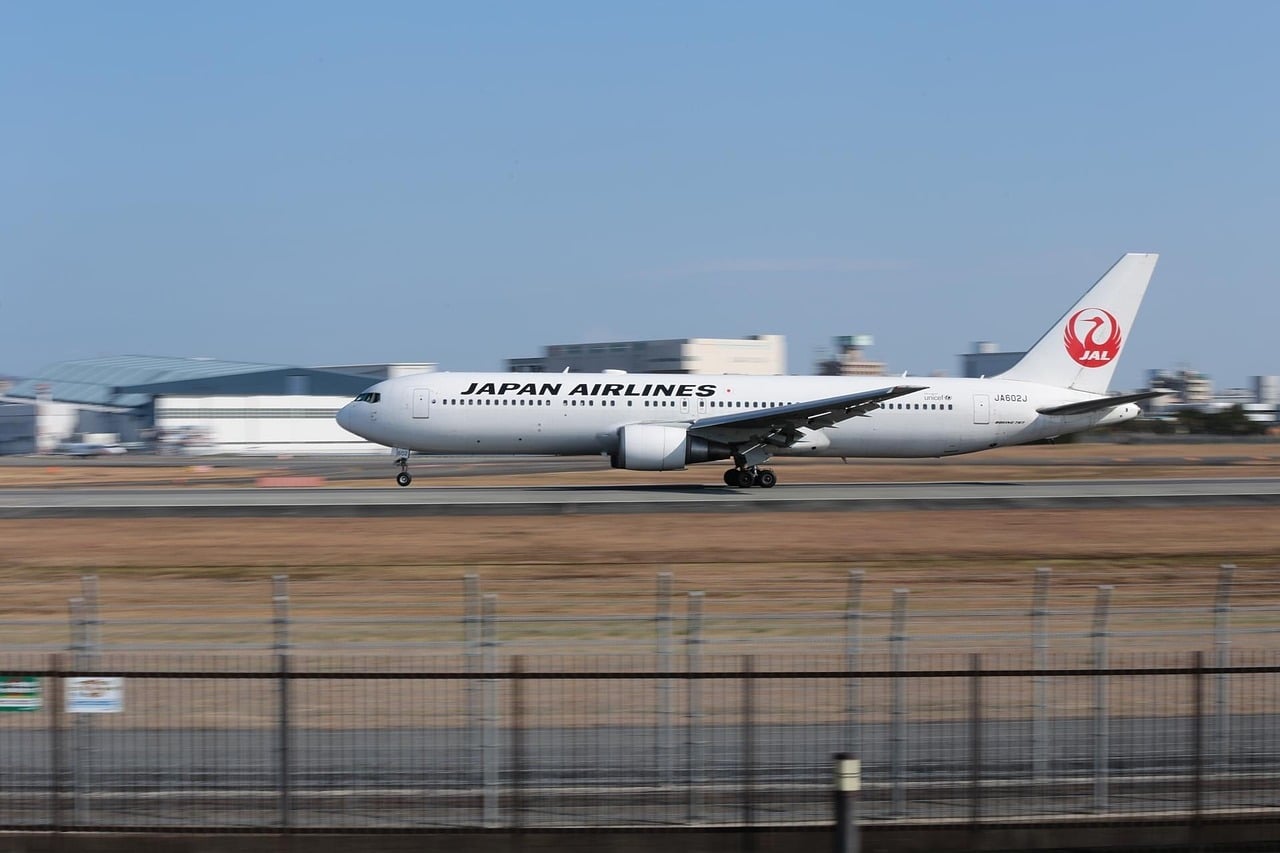
Japanese airports aren’t just places to land: they’re an entire cultural showcase on their own. For example, at the Narita Airport , you’ll see pet hotels , gacha machines , the (in)famous smart toilets and even a Pokémon Store !
22. Welcome, please come in — yokoso, o-hairi kudasai
23. please show your ticket — chiketto o misete kudasai, 24. please show your passport — pasupooto o misete kudasai, 25. what is your reservation name — yoyaku-mei wa nan desu ka, 26. the flight is delayed — furaito chien shiteimasu, 27. the flight has been canceled — furaito kyanseru saremashita, 28. baggage claim is this way — baggeji kureimu wa kochira desu, 29. we have arrived at … airport — … kuko ni tochaku shimashita, 30. we will depart for … airport — … kuko e shuppatsu shimasu, 31. there is a delay in the flight — furaito ni okure ga arimasu, 32. there are restrictions on carry-on baggage — kinai mochikomi no nimotsu niwa seigen ga arimasu.
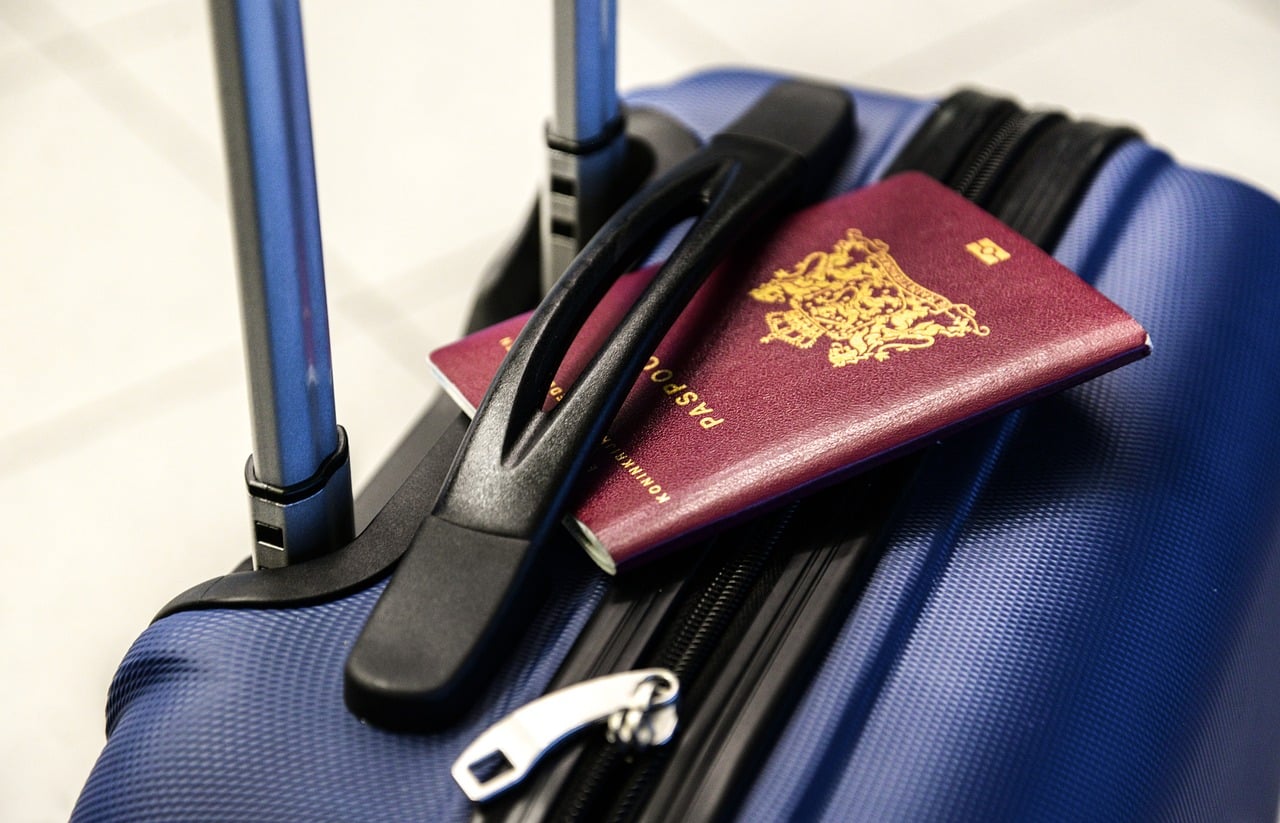
33. Please tell me how to get to the airport — kuko e no ikikata o oshiete kudasai
34. is this a departure flight — korewa shuppatsu-bin desu ka, 35. is this an arrival flight — korewa tochaku-bin desu ka, 36. where is the boarding gate — tojyo-guchi wa doko desu ka, 37. i’ll check my baggage — tenimotsu azukemasu, 38. please call a taxi — takushii o yonde kudasai, 39. i’d like to rent a car — rentakaa o karitai desu, 40. where is the gate for the connecting flight — noritsugi-bin no geeto wa doko desu ka.

Asking for directions is sort of daunting, especially when the person answers in a whole stream of fast-paced Japanese.
But you’ll find that Japan is one of the best places to be a lost and hopeless tourist. There’s always someone nearby who’s more than happy to help. I’ve even had people take time out of their days to walk me where I needed to go!
Simply say wherever it is that you want to go followed by どこですか? — doko desu ka? (Where is …?).
41. I want to go… (here) — (koko) ni ikitai desu
Say ここ if you have an address written down or a point marked on a map of where you want to go.
If you know the name or address of the place where you want to go, simply say the place name followed by に行きたいです . For example, if you want to go to Shinjuku station, you simply say 新宿駅に行きたいです — Shinjuku eki ni ikitai desu . (I want to go to Shinjuku station.)
42. Where is the…? — …wa doko desu ka?
43. can you please show me where we are on the map — watashitachi ga doko ni iru no ka, chizu de oshiete kudasai.
This might seem like an odd question (and a bit of a mouthful), but it can be a lot more helpful than asking for directions from someone who doesn’t know English.
44. Is it near? — chikai desu ka?
45. is it far — tooi desu ka.

46. Go straight ahead — massugu itte kudasai
47. turn left — hidari ni magatte kudasai, 48. turn right — migi ni magatte kudasai.

In Japan, public transportation is how most people get around. If you’re not used to taking the bus, train or anything similar, better keep the following phrases handy!
49. Take me to this address, please — kono jyusho made tsureteitte kudasai
50. what is the fare — ryoukin wa ikura desu ka, 51. stop here, please — koko de tomatte kudasai, 52. does this bus go to (street name) — kono basu wa … ni ikimasu ka, 53. does that train stop at … — sono denshya wa … de tomarimasu ka, 54. a map, please — chizu o onegai shimasu, 55. this hotel — k ono hoteru, 56. the subway — chikatetsu , 57. the train station — denshya no eki, 58. the bus stop — basutei, 59. the taxi stand — takushii noriba, 60. the exit — deguchi, 61. the entrance — iriguchi, 62. the bathroom — toire.

Like other service-oriented businesses in the country, Japanese hotels subscribe to the concept of omotenashi , which roughly translates to pouring your whole heart into service. That means you can expect employees at Japanese hotels to go above and beyond when it comes to making you feel welcome.
63. I have a reservation under the name of … — … no yoyaku o shiteimasu
64. i would like to check-in — chekkuin shitai desu, 65. what time is check-in — chekkuin wa nanji desu ka, 66. is breakfast included — choshoku wa fukumareteimasu ka, 67. where is my room — watashi no heya wa doko desu ka, 68. please give me a wake-up call at … — … ni weikuappu kooru onegaishimasu., 69. where is the nearest convenience store — ichiban chikai konbini wa doko desu ka, 70. can you recommend a good restaurant nearby — chikaku no oishii resutoran o shokaishite moraemasu ka, 71. what time is check-out — chekkuauto no jikan wa nanji desu ka, 72. where can i store my luggage — nimotsu wa dokoni azukeraremasu ka, 73. is there wi-fi in the hotel — hoteru ni wa wai-fai ga arimasu ka, 74. where is the nearest atm — ichi-ban chikai atm wa doko desu ka, 75. i’d like to have some extra towels, please — yobun no taoru o kudasai., 76. what time is breakfast served — choshoku wa nanji kara desu ka, 77. excuse me, i need an iron and ironing board — sumimasen, airon to iron-dai ga hitsuyo desu..

Like Japanese hotels, Japanese restaurants also practice omotenashi. Here are some of the more common phrases you’ll hear from Japanese restaurant staff.
78. Welcome — Irasshaimase
79. how many people in your party — nan mei sama desu ka, 80. this way, please — kochira e douzo, 81. certainly (in response to your order) — kashikomarimashita, 82. thank you for waiting — omatase itashimashita.

The best restaurants in Japan are the authentic ones that don’t cater to tourists. But these are also the places that have no English menus, and sometimes no English-speaking waitstaff.
Luckily, it’s very common for Japanese menus to feature photos of all the dishes. And many places have models of their dishes on display, so you likely won’t be going in completely blind.
Use these phrases , and you should be in and out of a restaurant without too many hiccups.
83. A table for two, please — futari you no teeburu o onegai shimasu
You can also replace futari with the number of people who you need to have seated:
- one — hitori ( 一人 )
- three — sannin ( 三人 )
- four — yonin ( 四人 )
If you’re confused about Japanese numbers and counters, don’t despair. You can just do as the locals do and indicate the number of diners by holding up your fingers.
84. The menu, please — menyu o onegai shimasu
85. what are today’s recommendations — kyo no osusume wa.
If everything on the menu looks appetizing and you’re not quite sure what to order, use this phrase.
86. Water, please — mizu o onegai shimasu
87. two beers, please — biiru o nihai onegai shimasu, 88. can i please have (one, two) of this — kore o (hitotsu, futatsu) onegai でdekimasu, 89. do you have a vegetarian dish — bejitarian youno ryouri ga arimasu ka.
I’ve traveled in Japan with vegetarians twice, and this question usually draws quite strange looks. Vegetarianism basically doesn’t exist in Japan, although Japanese cuisine is generally quite vegetarian-friendly.
It might work better to say これは肉ですか? — kore wa niku desu ka? , to say “is this meat?” Follow up with 私は肉を食べません — watashi wa niku o tabemasen, which means “I don’t eat meat,” if you want to make yourself understood.
90. Is … in it? — … wa haitte imasu ka?
Alternatively, you can also ask if specific ingredients are included in your food, so you’ll know whether you should order it or not.
91. That’s okay — daijyoubu desu
You can also use this expression to ask someone if they’re okay. Just add the question particle ka to the end: 大丈夫ですか ? — daijyoubu desu ka?
92. The check, please — okanjyou o onegai shimasu
Say the above, or you can do as the locals do and catch the waiter’s eye (with a smile!) and draw a clockwise circle in the air with your index finger pointing towards the roof.
In some restaurants, you need to bring the check to the cash register which is usually located by the restaurant’s doorway.
93. Cheers! — kanpai!
94. it was delicious — oishikatta desu, 95. water — mizu, 96. wine — wain, 97. beer — biiru , 98. tea — ochya, 99. coffee — coohii, 100. juice — juusu, 101. meat — niku, 102. chicken — toriniku , 103. pork — butaniku, 104. beef — gyuniku , 105. fish — sakana , 106. rice — gohan, 107. bread — pan , 108. vegetables — yasai , 109. fruit — kudamono.

When you’re met with cries of いらっしゃいませ!, you’re not really expected to respond to this greeting. As for me, I just smile and say こんにちは which means, of course, “hello.”
Walking into a department store is particularly surreal, with each assistant taking cues from the others, so that every time a customer walks in, いらっしゃいませ bounces around the entire floor.
110. Are you looking for something? — nani ka osagashi desu ka?
111. is that all — ijyou de yoroshii desu ka, 112. here it is / here you go — hai, douzo.

113. I would like this — kore o onegai shimasu
114. i would like one of those — sore o hitotsu onegai shimasu, 115. i would like to pay in cash — genkin de onegai shimasu, 116. i would like to pay by credit card — kurejitto kaado de onegai shimasu.
The only real challenge with ordering meals in Japanese is the use of counters.
We have counters in English, too (for example “sheets” of paper, “glasses” of water, “blades” of grass), but not as many or as complicated as in Japanese.
Luckily Japanese has a “universal” counter, つ ( tsu ), which you can use for anything, including food.
The numbers one to four as つ counters are pronounced 一つ ( hitotsu )、 二つ ( futatsu )、 三つ ( mittsu ) and 四つ ( yottsu ). You can use this counter for drinks too, and the waiter will understand you.
However, if you want to be a little more impressive, you can use the drinks counter: 杯 ( hai/bai/pai depending on the number used with it). The numbers one to four using this counter are 一杯 ( ippai )、 二杯 ( nihai ) 、 三杯 ( sanbai ) and 四杯 ( yonhai ).
If you want to learn more about counters, this post explains them in more detail.
All the examples I’ve given are in the polite, neutral form of speech . You basically can’t go wrong speaking this way in Japan, so you don’t need to worry about making any social faux pas!
Some notes on pronunciation:
- Avoid turning vowels into dipthongs (vowel sounds that run into each other, like the oi in “coin”). Pronounce each vowel on its own even when there are two vowels next to each other. Onegai is read as “o-ne-ga-i,” not “o-ne-gai”
- The sound ou and repeated vowels like ii and ee are exceptions: they show an elongation of the sound. Ohayou is read as “o-ha-yoh,” not “o-ha-yo-u.”
- Treat ん (n) as its own syllable. Konnichiwa is read “ko-n-ni-chi-wa,” not “ko-ni-chi-wa.” It’s subtle, but it makes a difference!
- Repeated consonants are pronounced. For an example of how to do this, just read the word “bookkeeper” out loud.
- The small kana っ like in いって signify a break between the sounds —”it-te,” not “i-te.”
- Small y- kana like ゃ in おちゃ add the y sound to the preceding syllable —”o-chya,” not “o-chi-a.”
- は (ha) as a particle is pronounced wa, and を (wo) as a particle is pronounced o.
The beauty of Japanese is that it’s an extremely phonetic language, so if you say the words exactly as you read them, you can’t really get them wrong.
Having said that, people will probably struggle to understand you if you speak in a strong non-Japanese accent, so it might pay to listen to some spoken Japanese before you start practicing pronunciation.
The most important thing to remember is that, unlike English speakers, Japanese speakers don’t put emphasis on the second or third syllable of a word—there’s some emphasis on the first syllable, but it’s subtle.
Some ways that you can listen to Japanese being spoken is by watching Japanese films , television programs , anime or YouTube clips .
The Japanese language program FluentU has a little bit of everything in the media, with interactive subtitles and customizable flashcards for a well-rounded learning experience.
Maybe this seems like a lot, but learning Japanese travel phrases for tourists will make your trip run more smoothly, and the people you meet will appreciate your effort.
Speaking the local language tends to get people on your side. They’re less likely to try to rip you off, and often will want to become your best friend.
I like to make little phrasebooks for myself when I travel, so I can have these Japanese travel phrases and vocabulary always on hand.
I’ve been treated to tea and dinner in people’s homes, and once was driven around a city with a personal guide/impromptu friend all day, just because I struck up conversations in the local language.
Don’t be scared! Give it a try!
Enter your e-mail address to get your free PDF!
We hate SPAM and promise to keep your email address safe

Unconventional language hacking tips from Benny the Irish polyglot; travelling the world to learn languages to fluency and beyond!
Looking for something? Use the search field below.
Home » Articles » 60+ Essential French Phrases for Beginners to Start Speaking Now
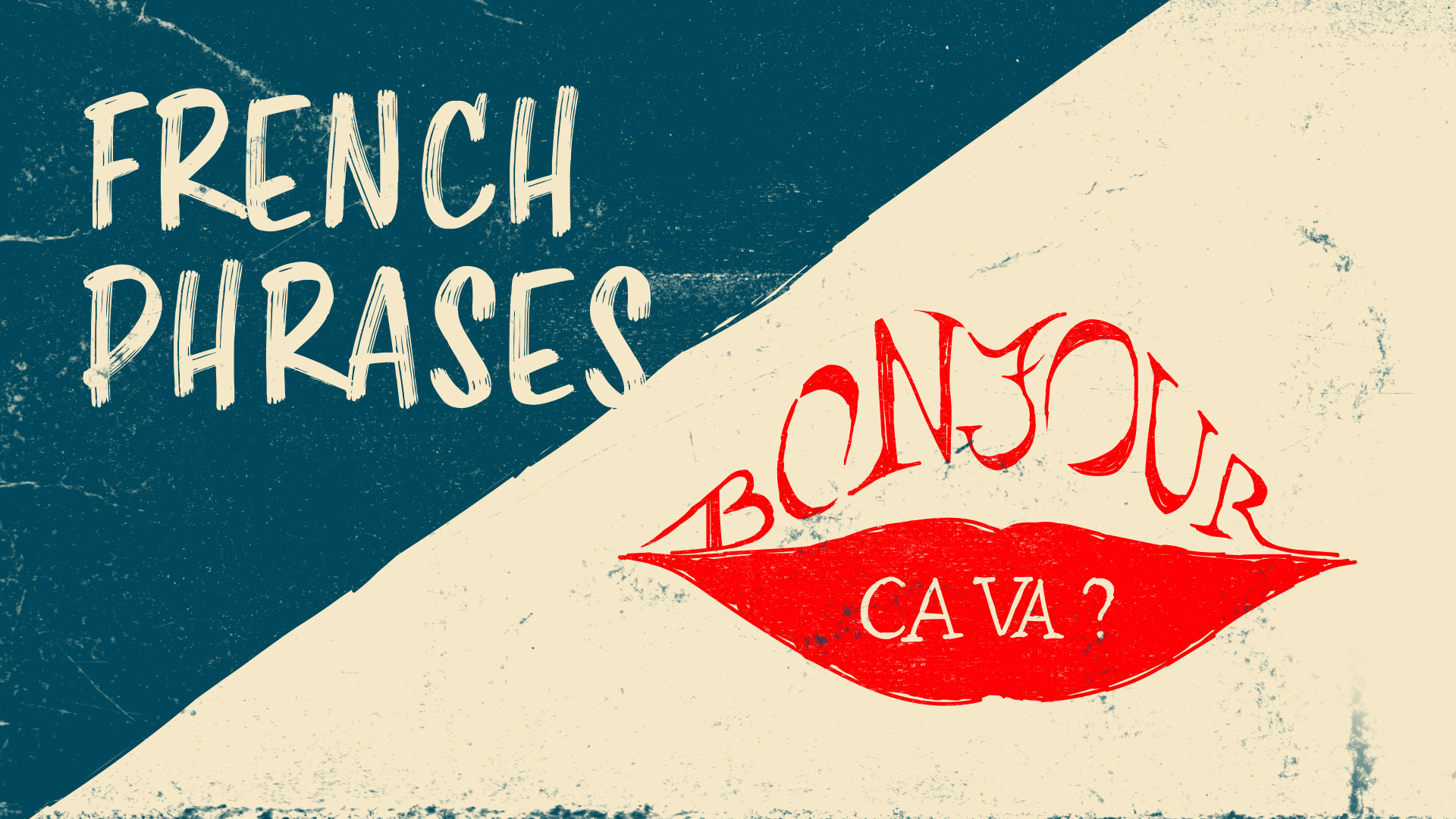
Full disclosure: This post contains affiliate links. ?
written by Benny Lewis
Language: French
Reading time: 17 minutes
Published: Jan 11, 2021
Updated: Sep 17, 2021
60+ Essential French Phrases for Beginners to Start Speaking Now
What are some French sayings? What are the most common phrases in French? And can learning a few powerful French phrases really help you start speaking right away?
Absolutely!
Even if you'll only be spending a short time in the country, learning a few basic French phrases can be very rewarding and make a big difference to your trip.
Let’s start by mastering some of the most common French phrases you need to know as a beginner:
I've long advocated that set phrases are the best thing for beginners to learn when starting out.
After all, isn't the goal of language learning to communicate?
How do you expect to communicate with anybody if the only thing you've learned so far is a verb table?
So whether you're planning to travel to Paris for a week or move to Saint-Louis-du-Ha! Ha! for the rest of your life, here are the most important and useful French phrases that you should learn A.S.A.P.
Listen to the French Phrases:
Here's a quick “French phrases” video I made that will help you with pronunciation for most of the phrases in this article:
Before we get started, if you’re looking for an online French course, here’s the course I recommend: French Uncovered – Learn French Through the Power of Story, a course with a fascinating new method by my friend Olly.
French Greetings and Polite Phrases
Bonjour – “hello”.
There are many ways in French to say “hello” , but bonjour is undoubtedly the most well-known. It's universally polite and friendly, whether the situation is formal or informal.
Bonjour is a combination of the words bon (“good”) and jour (“day”).
In the evening, you could also say bonsoir (“good evening”). A more casual way to greet people is salut , which can mean either “hi!” or “bye!”.
S'il vous plaît / s'il te plaît – “Please”
As a tourist, the last thing you want to be is rude. So when in France, remember what your mother taught you, and say s'il vous plaît (“please”) when making a request.
You can also say s'il te plaît. What's the difference? It's all about “you”:
In French there are two ways of saying “you”.
Tu is what you'd use when addressing a friend. Vous is a more polite and formal version, best used when talking to a stranger or older person.
( Vous is also what you should use when addressing a group of people in any situation, similar to saying “you guys” or “you all” in English).
So s'il vous plaît and s'il te plaît both mean “please” (literally, “if it pleases you”), but s'il vous plait is the more polite version. If in doubt, use s'il vous plaît .
(Why is it s'il te plait and not s'il tu plait ? It's a grammatical thing that you don't need to worry about as a beginner. Just learn the phrase as a whole for now, and things will become clear later.)
In fact, when asking for something in French – e.g. asking a stranger for directions or asking to see a menu in a restaurant, you should start with “ Bonjour. S'il vous plaît… ” It literally means “Hello, please…”, which would sound a bit strange in English, but it's the normal way to start a polite request in French.
Comment vous appelez-vous? / Comment t'appelles-tu? – “What’s your name?”
When meeting anyone, one of the first things you'll want to know is their name.
In French, you can find it out by asking “ Comment vous appelez-vous? ” (formal) or “ Comment t'appelles-tu? ” (informal).
Literally, these questions mean “what do you call yourself?”. You could also ask “ c'est quoi ton nom? ” – which is a more literal translation of “what's your name?”
If you're on the receiving end of this question, answer with “ Je m'appelle… ” (“my name is”, literally “I call myself”) or a simple “ Je suis… ” (“I am…”).
Oui/Non/Si – “Yes/No”
Two essential words to learn in any language are “yes” and “no”. In French, “yes” is oui and “no” is non .
Informally, it's also common to say ouais or ouaip instead of oui – like saying “yeah” or “yep” in English.
Then you have si . This is a handy little word that has no direct equivalent in English. Use it to say “yes” when someone asks you a negatively phrased question.
To illustrate what I mean, imagine that someone asks you, in English, “haven't you been to Paris?”
If you reply “yes”, it's not exactly clear what you're saying. Do you mean “yes, I have been to Paris – contrary to your assertion” or “yes, you're correct: I haven't been to Paris”?
French avoids this confusion with the word si . It means “yes”, but more specifically it contradicts the assertion in the question. In the above example, if you say si , it clearly conveys that you have, in fact, been to Paris.
Si is one of many linguistic features that I sorely miss when I speak English.
Comment allez-vous? – “How are you?”
This is the polite way of saying “how are you?” in French. Note the use of the polite vous rather than the informal tu .
Another, more informal way to say “how are you?” is ça va ? This phrase is extremely common – when in France you'll likely hear it several times per day.
If someone asks you “ ça va? ”, you can respond with a simple “ ça va bien ” – “it's going well”.
Excusez-moi – “Excuse me”
To get someone's attention, whether they're a waiter in a restaurant or a stranger on the street, say “ excusez-moi ”, “excuse me”.
This is also the polite way to ask someone to get out of your way. For example, if you're trying to exit a crowded train, a soft “ excusez-moi ” should (hopefully) be enough to make people step aside.
Pardon – “Sorry”
Picture getting off a crowded train, being careful you don't bump into anyone as you walk through the crowded metro station. But if a collision does occur, it's fine. Just say pardon , “sorry”, and all will be forgiven.
“ Pardon? ” is also how you'd ask someone to repeat themselves if you didn't hear or understand what they said. In this case, you should say it with a rising tone to indicate that it's a question.
Another way to say this is “ pourriez-vous répéter, s’il vous plaît ?” – “Could you repeat, please?”
Merci beaucoup – “Thanks a lot”
And of course, don't forget to say thank you!
The French word for “thank you” is merci . Or you can make it stronger by saying merci beaucoup – “thanks very much”.
Use merci in all the same situations you'd say “thank you” in English.
Other Must-Know French Greetings and Polite Phrases:
- Nice to meet you – Enchanté
- How’s it going? – Comment ça va?
- And you? – Et toi?
- Are you well? – Vous allez bien?
- What’s new? / What’s up? – Quoi de neuf?
- Good, thanks! – Bien, merci!
- So-so / It’s okay – Comme ci, comme ça (Literally: “like this, like that”)
- Same as always – Comme d’hab
- It could be worse – Ça pourrait être pire
- You’re welcome – Je t'en prie
- Don’t mention it / You’re welcome – De rien
- Goodbye – Au revoir
- See you soon – À bientôt!
French Phrases for Maintaining a Conversation
Je voudrais parler français – “i would like to speak french”.
The French are famously protective of their language. Sometimes they can be a bit impatient with us anglophones, and reply in English to your imperfect French questions.
It's frustrating when this happens, but if you ever want to make progress in a foreign language, you absolutely must stop speaking English !
Be polite but firm when someone tries to speak English with you – tell them “ Je voudrais parler français ” – “I'd like to speak French.”
Note that, unlike in English, names of languages are not written with a capital letter in French.
Je ne comprends pas – “I don’t understand”
Sometimes pardon doesn't quite cut it. If you really can't figure out what the other person is saying, try telling them “ je ne comprends pas ” – “I don't understand.”
There's no shame in being a beginner! Just remember not to fall back to English when the going gets tough. If you don't understand something, persevere in French anyway – it's the only way you'll learn.
Que veut dire ça? – “What does that mean?”
Maybe the reason you didn't understand is because there was a specific word you didn't recognise. If that's the case, say “ que veut dire X? ” – “What does X mean?”
You can also phrase this as “ ça veut dire quoi? ” – “What does that mean?”
Plus lentement – “More slowly”
Sometimes, vocabulary isn’t the problem. You’d know the words if you could make them out, but you can't because the other person is talking too fast!
In this case, try saying plus lentement – “more slowly”.
Better yet, say a full sentence: “ Pourriez-vous parler plus lentement, s’il vous plaît? ” – “Can you speak more slowly, please?”
Comment dit-on __ en français? – “How do you say __ in French?”
What if you need to say something in French, but the exact word escapes you?
Just fill in the blank in the above sentence: “ Comment dit-on X en français? ” means “How do you say X in French”?
A side note: the pronoun on , seen above, is an interesting one. It’s a colloquial alternative to nous (“we”). However, on is also used to refer to an unspecified person or people in general, like the word “one” is sometimes used in formal English. (If you speak German, note that on in this sense is like the German word man .)
One doesn't use the word “one” very much in modern English – one finds it rather old-timey and stuffy. These days you normally use “you” when you're talking about people in general.
Comment ça s'écrit? – “How do you spell that?”
If you learn a new French word using the phrase above, you might want to write it down before you forget it.
Unfortunately, French spelling isn't the easiest.
The relationship between spelling and French pronunciation can be complicated. Generally, it's easier to figure out a word's pronunciation from its spelling than it is to know its spelling from its pronunciation. I wrote a guide to help you with French pronunciation here .
So if you're not sure, ask someone “ comment ça s'ecrit? ” – “How do you spell that?” Literally: “How does that write itself?”
Or if you don't trust your own transcription abilities, try asking them to write it for you: say “ Est-ce que vous pouvez l'écrire? ” – “Can you write it (down)?”
Other Helpful Phrases for Maintaining a French Conversation:
- Can you speak more slowly please? – Pouvez-vous parler plus lentement s'il vous plaît?
- Can you say it one more time? – Pouvez-vous le dire une fois de plus?
- Do you speak French? – Parlez-vous français?
- Do you understand? – Comprenez vous?
- What do you do for a living? – Qu’est-ce que tu fais dans la vie?
- How old are you? – Quel âge as-tu?
- I’m _ years old – J’ai _ ans
- Where are you from? – D'où êtes-vous?
- I’m from… – Je viens…
- Are you married? – Es-tu marié?
- Are you single? – Es-tu célibataire?
- When can we meet? – Quand pouvons-nous nous rencontrer?
- What’s your phone number? – Quel est ton numéro de téléphone?
French Phrases for Getting Around
Où est… – “where is…”.
Struggling to find your way around? Not to worry. Just get a stranger's attention (remember what phrase would you use to do this?) and ask “ où est X ” – “Where is X?”
“X” could be many things: la Tour Eiffel, le Louvre, Notre Dame … or perhaps something less exotic, like le metro or un restaurant .
Où se trouve la station de métro la plus proche? – “Where is the closest metro station?”
Another way of saying “where is it?” is où se trouve , literally “where is (it) found”.
Here's an example of où se trouve combined with another handy phrase to know: la station de métro la plus proche means “the closest metro station”.
One more piece of useful vocabulary: once you're in the metro station, you might want to ask someone “ où est le guichet? ” – “Where is the ticket window?”
Je voudrais acheter un billet – “I would like to buy a ticket”
Now that you've found the guichet , you probably want to buy a billet – a ticket. But what type of ticket do you want?
- un billet aller simple – a one-way ticket
- un billet aller retour – a round-trip ticket
Make your decision, and tell the assistant “ je voudrais un billet aller simple/retour pour X ” – “I would like to buy a one-way/round-trip ticket to X”, where X is your destination.
C'est combien? – “How much is it?”
France isn't the cheapest of countries – so whether you're at the guichet or elsewhere, it doesn't hurt to be price-conscious.
To ask how much something costs, say “ c'est combien? ” – “how much is it?” You can also say “ Combien ça coûte? ” – literally, “how much does it cost?”
Où sont les toilettes? – “Where are the toilets?”
It's worth learning this phrase, because you might need it in a hurry! Où sont les toilettes means “where are the toilets?”
Although if you want to use a public toilet, you could be searching for a long time.
They aren't very common in France – and if you do find one, you'll probably have to pay to use it. You're probably better off buying something in a café and using their toilets instead.
(Why is it “ où sont “, when previously we used “ où est “? Easy: sont means “are” while est means “is”. Since toilettes is plural, you must use sont , not est – “where are the toilets?”, rather than “where is the toilets”, which wouldn’t make sense.)
À quelle heure est-ce qu’il faut régler la note? – “What time is check out?”
If you're checking into a hotel in a French-speaking country, one useful thing to know the checkout time.
One way to find this out is to ask “ à quelle heure est-ce qu’il faut régler la note? ” – “What time must we check out?”
Another similar expression is: “ quelle est l'heure limite d'occupation? ” (Lit: “What is the occupancy cut-off time?”
La carte/le menu, s’il vous plaît. – “The menu, please.”
France is famous for its food, so while you're there, you'll probably want to dine in a restaurant or two!
When dining out in any language, there are usually a few subtleties around how to order. Here I'll explain one of the more important things to know in French: the words for “menu”.
I say “words” because there are two main ways to say “menu” in French.
The general word is carte , which you may recognise from the expression à la carte .
A carte is what you typically think of when you hear the word “menu”. It's a list of individually-priced options; you pick and choose what you want, then add up the prices to get your total bill.
But you can also ask for a menu , which is usually called a “fixed-price menu” in English. When ordering from a menu , you pick an option for each course (starter, main course, etc.) and pay the same, fixed price no matter what you selected.
Whichever option you choose, inform the serveur/serveuse (“waiter/waitress”) by saying “ la carte/le menu, s’il vous plaît ” – “the menu/fixed-price menu, please.”
Je ne peux pas manger… – “I can’t eat…”
This doesn't apply to everybody, but for those to whom it does apply, it's very important: informing the waiter about your dietary restrictions.
The simplest way to do this is to say “ je ne peux pas manger de X ” – “I can't eat X”. Here are some of the more common ways to fill in the blank:
- cacahuètes – peanuts
- noix – nuts
- gluten – gluten
- fruits de mer – shell fish
- œufs – eggs
- poisson – fish
- produits laitiers – dairy products
- viande – meat
If you're vegetarian, say so with “ je suis végétarien ” (for men) or “ végétarienne ” (for women.)
A vegan is a “ végétalien(ne) “, although végan/végane is sometimes used too.
You could also explain “ je ne consomme pas de produits animaux .” – “I don't consume animal products”
Nous voudrions commander maintenant. – “We would like to place an order now.”
To “order” in French is commander , when you're talking about ordering something in a restaurant.
Don't confuse this with ordonner , which is used in the sense of “to order a person to do something”, such as in the military.
After receiving the carte or the menu , and perhaps informing the waiter of your dietary restrictions, you may be given some time to make a decision. When you're ready, say “ nous voudrions commander maintenant ” – “we'd like to order now.”
It’s also acceptable in nearly any restaurant to use on instead of nous for we, as I mentioned earlier: On voudrait commander maintenant.
Or if you're by yourself, say je voudrais (I'd like) instead of nous voudrions (we'd like). Bon appétit!
L’addition, s’il vous plaît. – “The bill, please”
One final bit of restaurant-related vocabulary – the bill (or “check” if you're American) is l'addition .
So when you're ready to leave, say l’addition, s’il vous plaît – “the bill, please”.
You’ll often hear la facture used in Quebec instead of l’addition – however both are perfectly understandable to waitstaff.
Other French Phrases for Out and About in France:
- Can you help me please? – Pouvez-vous m'aider s'il vous plaît?
- I would like… – Je voudrais…
- I’d like one of those please – J'en voudrais un s'il vous plait
- Three: Trois
- Four: Quatre
- Five: *Cinq
Learn more: French Numbers: Counting in French from 1 – 100+
Romantic French Phrases
Je t'aime – “i love you”.
Finally, let’s talk about love.
They say that French is a romantic language, so maybe in your travels you'll find love on the road? Or maybe after you get home, you'll want to use your newfound French skills to woo that special someone.
So how do you say “I love you” in French?
The French word for “to love” is adorer – but you generally only use this word when talking about things rather than people, for example to say that you love a place, book, or song.
When talking to a person, say je t'aime . Aimer usually means “like”, but in this context it means “love” in the most romantic of senses. Use it wisely!
Here are some other romantic French phrases:
- My heart – Mon cœur
- My love – Mon amour
- You’re beautiful – Tu es belle (to a woman); Tu es beau (to a man)
- You’re too cute – Tu es trop mignon
- I like you (Lit: “You please me”) – Tu me plais
Bonus: French Slang
Wondering what a famous French saying is that you could use in everyday life? Or how do you say “cool” in French slang?
Here are some bonus French sayings and slang to level up your French:
- Cool – Cool (yes, really! Just say it with a French accent 😉)
- Awesome – Génial
- That sucks – C’est nul
- That’s great – C’est top
- Don’t worry – T'inquiète
- Losing my mind – Perdre la tête
Over to You
Can you think of any other useful French phrases for tourists? What are the most important words and phrases for beginners to know? Let us know in the comments.
And if you’re ready to learn more French, check out the 111 core French words that are commonly used. Or learn some more fun French slang !
Benny Lewis
Founder, Fluent in 3 Months
Fun-loving Irish guy, full-time globe trotter and international bestselling author. Benny believes the best approach to language learning is to speak from day one .
Speaks: Spanish, French, German, Italian, Portuguese, Esperanto, Mandarin Chinese, American Sign Language, Dutch, Irish
Have a 15-minute conversation in your new language after 90 days
- Search Please fill out this field.
- Manage Your Subscription
- Give a Gift Subscription
- Newsletters
- Sweepstakes
- Travel Tips
Basic Greek Words, Phrases, and Slang to Learn Before You Go to Greece
With patience and practice, the language won't be "all Greek" to you during your visit.
So you're planning a trip to Greece. Finding the best flights and deciding which sandals to pack might be at the top of your to-do list. But before you head off to explore the country's awe-inspiring ruins and whitewashed villages, don't forget to pick up a few Greek phrases, too. Learning the basics of a language is always courteous.
Even though Greece is a popular tourist destination, few people consider trying to learn Greek as part of their travels. The culprit is likely the Greek alphabet. If you're unfamiliar, think of the angular shapes used by college fraternities and sororities or your last algebra class. Unlike the Latin alphabet of Romance languages, such as Spanish, Italian, and French, Greek letters are indecipherable for many English speakers.
In many vacation spots, almost everyone speaks basic English, but you'll get more out of your trip if you learn some common phrases (and even a little Greek slang). When locals treat you to a free slice of baklava or a shot of ouzo at the end of your meal, you'll know you scored points for trying.
Below, you'll find translations written first in Greek. The phonetic pronunciation follows in parentheses with emphasis placed on the syllables in capital letters. Try downloading a language learning app or using Google Translate to play an audio of how these phrases are pronounced.
No one wants to be an annoying tourist abroad by assuming everyone speaks English. With a few tips and a little practice, you'll have no problem speaking enough Greek to get by as a thoughtful traveler.
Basic Greek Words and Phrases
Hello: Γειά σου (YAH-soo)
The less formal way to say "hi" would just be Γεια (yah). If addressing a group, say Γεια σας (YAH-sas).
Nice to meet you: Χάρηκα πολύ (HA-ree-ka po-LEE)
How are you?: Tι κανείς? (tee-KAH-nis)
Good morning: Καλημέρα (kah-lee-MER-ah)
You can use this greeting up until noon, and then for the rest of the day, you can use Γεια (yah) as the standard greeting.
Good afternoon/evening: Καλησπέρα (kah-lee-SPER-ah)
Use this greeting around late afternoon, dusk, and into the evening.
Goodnight: Καληνύχτα (kah-lee-NEEKH-tah)
Say this when going to bed.
Thank you: Ευχαριστώ (eff-kha-ri-STOE)
Remember that a good tourist is a polite tourist.
Please/You're welcome: Παρακαλώ (para-kah-LOE)
In Greek, learning to say "please" and "you're welcome" is easy because it's the same word. It's polite to say Παρακαλώ (para-kah-LOE) after asking for directions or the price of something. It can even mean "I beg your pardon?" or "huh?" when you've misunderstood or want someone to repeat something.
My name is...: Με λένε... (may LEH-neh)
What is your name?: πως σε λένε? (pos-oh LEH-neh)
Goodbye: Γειά σου (YAH-soo)
The informal way of saying bye would be Γεια (yah). Recall that this is the same as saying hello (similar to ciao in Italian or aloha in Hawaiian). Remember to use the plural, Γεια σας (YAH-sas), if addressing a group.
See/Talk to you later: Τα λέμε (tah-LEH-meh)
You may hear people ending their conversations with this phrase as well.
Yes: Ναί (neh); No: όχι (OH-hee)
Be careful not to confuse yes and no — it's easy to mistakenly associate naí (neh) with "no" in English, and όχι (oh-hee) with "okay" when in fact it's the opposite in Greek. An easy mnemonic is that they're the inverse of what you would initially think.
Excuse me/Sorry: Συγνώμη (See-GHNO-mee)
Say this to get someone's attention, ask to pass by someone, or apologize if you've bumped into someone.
Common Greek Phrases Travelers Should Know
Where is the bathroom?: Πού είναι η τουαλέτα? (Poh-EE-nay ee tua-LEH-tah)
Helpful hint: Πού είναι (Poh-EE-nay) means "where is?" so you can ask for help with locating something by saying this while pointing to a specific location in your guidebook or on a map.
Do you speak English?: Μιλάτε αγγλικά? (Mee-LAH-teh ag-li-KAH)
Cheers!: Στην υγειά μας! (STIN-eh YAH-mas)
This literally means "To our health!" If addressing a group of people not including yourself, say Στην υγειά μας (STIN-eh YAH-sas), which means "To your health!" You can also shorten the phrase to simply Γειά μας (YAH-mas) for a more casual take.
Bottoms up!: Ασπρο πάτο! (AHS-pro PAH-toh)
Meaning literally "white bottom," this phrase will surely impress if you use it with a new Greek acquaintance.
How much is it?: Πόσο κάνει αυτό? (POH-soh KAH-nee af-TOH)
You can get by simply asking Πόσο κάνει (POH-soh KAH-nee), "How much?" Adding the "af-TOH" means "How much is it?"
I don't understand: Δεν καταλαβαίνω (Then Kah-tah-lah-VEH-noh)
Help!: Βοήθεια! (voh-EE-thee-yah)
I love Greece: Αγαπώ την Ελλάδα (Ah-gah-POH teen Eh-LAH-tha)
Oops!: Ωπα! (OH-pa)
If there's one Greek word you may have heard before, it's likely "opa." Originally meaning "oops" or "whoops," it's now also used frequently as a joyful exclamation of enthusiasm for music, dancing, food, and drinks. For example, when you've thoroughly impressed your server with your new Greek skills, and he offers you a round of ouzo shots on the house, you can say, "Opa!" in appreciation.
Greek Slang and Phrases
What's up/How's it going?: Τι λέει? (tee-LEI)
What are you up to?: Που είσαι? (pou-eeSAY)
So good/so cool: και γαμώ (kay-gaMOU)
You can also use μαλάκα (maLAka), which is technically a curse word. You'll hear everyone using it colloquially to address friends but only use it with someone you know.
See you later: τα λέμε (ta LEH-meh)
Dude/man: ρε φίλε (reh-FEEleh)
Related Articles
- Skip to primary navigation
- Skip to main content
- Skip to primary sidebar
- Skip to footer
StoryLearning
Learn A Language Through Stories
67 Essential Spanish Travel Phrases Every Traveller Needs To Know
Spain. Mexico. Argentina. Peru. Colombia.
If you're learning Spanish , the mere the mention of these countries can leave you daydreaming about your next trip abroad.
And although there are many incredible things to do and see in Spanish-speaking countries, what really makes these places special are the local people.
So before you pack your bags and jump on a plane, why not learn a little Spanish to help you make the most of your trip?
In this post, you’ll learn 67 Spanish phrases for travel that can help you survive in the language during your trip abroad. And who knows, they might even help you make a few new friends too!
To make it easier for you, I’ve divided the phrases up into different categories:
Table of Contents
Take the time to learn a few of these key Spanish travel phrases and you’ll be able to mix with the locals, get by in various situations and have a much more enjoyable and authentic experience during your trip.
By the way, if you want to learn Spanish in time for your trip, my top recommendation for language learners is my Uncovered courses, which teach you through StoryLearning®. Click here to find out more and try out the method for free.
Press play on the video below to learn Spanish travel phrases thanks to a story. Otherwise, keep scrolling to discover all 67 Spanish travel words and expressions.
First Things First: Greetings To Use On Arrival
Knowing how to greet people is the most basic thing you can learn in a foreign language. And yet its importance shouldn't be underestimated.
Even if you aren’t fluent enough to hold a long conversation, a simple ¡Hola! ¿Qué tal? (Hello, how are you?) can make all the difference.
You'll be able to use these expressions as soon as you arrive at your destination, whether it's at the airport, the train or bus station, or the hotel.
People appreciate it if you make an effort to speak their language when you visit their country, even if it’s only a few words.
Spanish-speaking countries are especially polite and greeting people correctly will go a long way towards endearing you to the locals, be they friends, people you meet in shops or on the street.
- ( BWAY-nos DEE-as)
- (BWAY-nas TAR-des)
- (BWAY-nas NOH-chays)
- (KOH-moh eh-STAH)
- (KOH-moh eh-STAHS)
- (bee-EN GRA-thee-as [Spain] / GRA-see-as [Latin America])
- (KOH-moh te YA-mas?)
- (May YA-moh… )
- (MOO-choh GOO-stoh)
And of course, let’s not forget common courtesy!
- (por fa-BOR)
- (GRA-thee-as [Spain] / GRA-see-as [Latin America])
If you get stuck in your Spanish conversation, you can always fall back on these next two phrases to get you out of trouble.
- (yo no en-tee-EN-doh)
- (Ab-la in-GLAYS)
Get What You Want On Your Trip With The Verb Querer
Once you’ve finished greeting someone, you’ll need to be able to move on to the crux of your conversation and to do that you’ll need to learn a couple of common verbs.
There are hundreds of Spanish verbs to learn and, to make your life more difficult, these verbs conjugate (change form).
This means learning a verb is never as simple as learning one word; you have to learn multiple different forms.
Having said that, you might be surprised by how far you can get only knowing one simple verb: I want .
It may not make you the most sophisticated Spanish speaker but 9 times out of 10 it will get you what you, well, want .
The verb in question is querer (to want) and in the first person form, it becomes quiero (I want).
Let’s take a look at how you can use it:
- (yo kee-EH-ro oon me-NOO)
- (YO kee-EH-ro oon taxi)
- (yo kee-EH-ro OO-na ser-BAY-za)
If you’d like to be a bit more polite (which is usually a good idea), you can also use:
- (kee-see-EH-ra…)
Asking For & Understanding Directions On Your Trip
Whether you’re looking for the toilet in a restaurant or trying to find a hotel to stay at, you’ll inevitably need to ask for directions at some point during your trip.
The simplest way to ask where something is, is to use ¿Dónde está? followed by the noun you are looking for:
- (DON-day es-TAH el BAH-nyo?)
- (DON-day es-TAH el BAN-koh?)
- (DON-day es-TAH la KA-yay de al-cal-AH?)
When travelling in a foreign country, if you're asking someone on the street for directions, don’t forget your manners! To get someone’s attention, start by saying:
- (Dis-KUL-pay)
- (Con per-MEE-soh / Per-DOH-nah-may)
- (eh- stoy per-DEE-doh)
Asking for directions is one thing but it’s pretty pointless if you don’t know how to understand the directions that are given to you!
Memorise these phrases to help you understand what the friendly locals are trying to tell you when you ask for their help:
- (A la de-RE-cha)
- (A la iz-kee-ER-da)
- (De-RE-cho)
- (En la es-KEE-nah)
- (a OO-na KWAD-rah)
Getting Around Spanish-Speaking Countries
If you’re not keen on walking everywhere, you'll need to be able to find out about local transport options to find your way around wherever you are.
Here are a few simple phrases you can use to locate a bus, train or taxi and get to wherever you need to go:
- (DON-day PWAY-doh en-kon-TRAR oon taxi?)
- (DON-day eh-STAH la pa-RAH-dah de ow-to-BOOS mas ser-KA-nah?)
- (DON-day eh-STAH la es-tah-see-ON de ferro-carr-EEL mas ser-KA-nah?)
- (KWAN-to KWES-ta oon bee-YET-ay PA-ra …)
- (oon bee-YET-ay PA-ra … por fa-BOR)
At A Restaurant On Your Travels
Each Spanish-speaking country has its own unique flavours and cuisine for you to try when you travel!
Food is definitely one of the big attractions to cities like San Sebastian in Spain and Buenos Aires in Argentina , so you'll need to make sure you have a basic grasp of food vocabulary ahead of your journey!
To start with, you need to be prepared to hear and understand certain questions in restaurants, such as:
- (kee-EH-res AL-go PA-ra koh-MER?)
- (kee-EH-res AL-go PA-ra beh-BER?)
- (KAY kee-EH-res koh-MER?)
When you read the menu, you'll see the available food grouped into different categories, just like in an English menu:
- (oo-na en-TRA-da)
- (oon PLA-toh prin-si-PAL)
- (oon POS-tray)
- (OO-na beh-BEE-da)
When you're ready to order, use either quiero (I want) or quisiera (I would like) with the items on the menu to tell the waiter what you'd like. For example, quiero…
- (OO-na SOH-pah)
- (OO-na en-sa-LA-da)
- (el POY-oh)
- (la CAR-nay)
- (oon AG-wa)
- (oon BEE-noh TIN-toh / BLAN-koh)
- (OO-na ser-BAY-sa)
- (oon ka-FAY)
So, for example, to order that ice-cold beer you're looking forward to at the end of a long day, you'd say quiero una cerveza.
If you're not sure what to try, you can always ask your waiter for a recommendation:
- (kay may re-kom-ee-EN-dah?)
In most restaurants in Spanish-speaking countries, the staff will be more than happy to suggest a particularly tasty local dish for you to try.
If you're a vegetarian or you have dietary complications, these next two phrases are essential:
- (soy be-he-tah-ree-AH-noh/nah)
- (TEN-go al-ER-hee-ah a las noo-EH-ses)
Finally, let's learn a couple of quick phrases you can use to ask about prices and pay the bill.
- (KWAN-to KWES-ta? )
- (la KWEN-ta por fa-BOR)
Key Spanish Question Words For Your Trip
Over the course of your journey, you'll almost certainly find yourself asking lots and lots of questions.
You might not have a huge Spanish vocabulary to draw on, but if you know the basic question words, you'll be able to get by in almost any common situation you might find yourself in.
Here are some key Spanish question words you need to know:
- (KWAN-doh?)
- (A kay AW-ra?)
- (KWAN-toh?)
- (KWAN-tohs)
- (kah-dah KWAN-toh?)
- (por KWAN-toh tee-EM-poh)
Once you’ve got these question words in your memory bank you’ll start noticing the patterns in Spanish grammar which will help you to move away from the basic Spanish phrases every tourist is using.
As you learn new words on your trip, you'll be able to combine them with these question words to start forming your own sentences and questions!
Get Ready For Adventure With These Spanish Travel Phrases!
Take the time to memorise these key Spanish travel phrases and you'll have everything you need to get the most out of your journey.
With just a few words of Spanish, I'm sure you'll meet lots of amazing people and have plenty of life-changing experiences along the way.
Who knows, perhaps spending some time visiting a Spanish-speaking country will motivate you to strive for fluency?
If this article has inspired you to both travel and to learn Spanish, then I've got something to get you started on your Spanish learning journey.
I'm a big believer in the power of story to enable you to learn a language. That's why I've created an entire beginner course dedicated to learning Spanish by immersing yourself in an engaging story.
It's my Spanish Uncovered course, and it's designed to take you from beginner to B1 Intermediate level.
Click here for more information on the course, test it out for free and to find out how it'll help you.
Language Courses
- Language Blog
- Testimonials
- Meet Our Team
- Media & Press
Download this article as a FREE PDF ?
What is your current level in Swedish?
Perfect! You’ve now got access to my most effective [level] Swedish tips…
Where shall I send the tips and your PDF?
We will protect your data in accordance with our data policy.
What is your current level in Danish?
Perfect! You’ve now got access to my most effective [level] Danish tips…
NOT INTERESTED?
What can we do better? If I could make something to help you right now, w hat would it be?
Which language are you learning?
What is your current level in [language] ?
Perfect! You’ve now got access to my most effective [level] [language] tips, PLUS your free StoryLearning Kit…
Where shall I send them?
Download this article as a FREE PDF?
Great! Where shall I send my best online teaching tips and your PDF?
Download this article as a FREE PDF ?
What is your current level in Arabic?
Perfect! You’ve now got access to my most effective [level] Arabic tips…
FREE StoryLearning Kit!
Join my email newsletter and get FREE access to your StoryLearning Kit — discover how to learn languages through the power of story!
Download a FREE Story in Japanese!
Enter your email address below to get a FREE short story in Japanese and start learning Japanese quickly and naturally with my StoryLearning® method!
What is your current level in Japanese?
Perfect! You’ve now got access to the Japanese StoryLearning® Pack …
Where shall I send your download link?
Download Your FREE Natural Japanese Grammar Pack
Enter your email address below to get free access to my Natural Japanese Grammar Pack and learn to internalise Japanese grammar quickly and naturally through stories.
Perfect! You’ve now got access to the Natural Japanese Grammar Pack …
What is your current level in Portuguese?
Perfect! You’ve now got access to the Natural Portuguese Grammar Pack …
What is your current level in German?
Perfect! You’ve now got access to the Natural German Grammar Pack …
Train as an Online Language Teacher and Earn from Home
The next cohort of my Certificate of Online Language Teaching will open soon. Join the waiting list, and we’ll notify you as soon as enrolment is open!
Perfect! You’ve now got access to my most effective [level] Portuguese tips…
What is your current level in Turkish?
Perfect! You’ve now got access to my most effective [level] Turkish tips…
What is your current level in French?
Perfect! You’ve now got access to the French Vocab Power Pack …
What is your current level in Italian?
Perfect! You’ve now got access to the Italian Vocab Power Pack …
Perfect! You’ve now got access to the German Vocab Power Pack …
Perfect! You’ve now got access to the Japanese Vocab Power Pack …
Download Your FREE Japanese Vocab Power Pack
Enter your email address below to get free access to my Japanese Vocab Power Pack and learn essential Japanese words and phrases quickly and naturally. (ALL levels!)
Download Your FREE German Vocab Power Pack

Enter your email address below to get free access to my German Vocab Power Pack and learn essential German words and phrases quickly and naturally. (ALL levels!)
Download Your FREE Italian Vocab Power Pack
Enter your email address below to get free access to my Italian Vocab Power Pack and learn essential Italian words and phrases quickly and naturally. (ALL levels!)
Download Your FREE French Vocab Power Pack
Enter your email address below to get free access to my French Vocab Power Pack and learn essential French words and phrases quickly and naturally. (ALL levels!)
Perfect! You’ve now got access to the Portuguese StoryLearning® Pack …
What is your current level in Russian?
Perfect! You’ve now got access to the Natural Russian Grammar Pack …
Perfect! You’ve now got access to the Russian StoryLearning® Pack …
Perfect! You’ve now got access to the Italian StoryLearning® Pack …
Perfect! You’ve now got access to the Natural Italian Grammar Pack …
Perfect! You’ve now got access to the French StoryLearning® Pack …
Perfect! You’ve now got access to the Natural French Grammar Pack …
What is your current level in Spanish?
Perfect! You’ve now got access to the Spanish Vocab Power Pack …
Perfect! You’ve now got access to the Natural Spanish Grammar Pack …
Perfect! You’ve now got access to the Spanish StoryLearning® Pack …
Where shall I send them?
What is your current level in Korean?
Perfect! You’ve now got access to my most effective [level] Korean tips…
Perfect! You’ve now got access to my most effective [level] Russian tips…
Perfect! You’ve now got access to my most effective [level] Japanese tips…
What is your current level in Chinese?
Perfect! You’ve now got access to my most effective [level] Chinese tips…
Perfect! You’ve now got access to my most effective [level] Spanish tips…
Perfect! You’ve now got access to my most effective [level] Italian tips…
Perfect! You’ve now got access to my most effective [level] French tips…
Perfect! You’ve now got access to my most effective [level] German tips…
Download Your FREE Natural Portuguese Grammar Pack
Enter your email address below to get free access to my Natural Portuguese Grammar Pack and learn to internalise Portuguese grammar quickly and naturally through stories.
Download Your FREE Natural Russian Grammar Pack
Enter your email address below to get free access to my Natural Russian Grammar Pack and learn to internalise Russian grammar quickly and naturally through stories.
Download Your FREE Natural German Grammar Pack
Enter your email address below to get free access to my Natural German Grammar Pack and learn to internalise German grammar quickly and naturally through stories.
Download Your FREE Natural French Grammar Pack
Enter your email address below to get free access to my Natural French Grammar Pack and learn to internalise French grammar quickly and naturally through stories.
Download Your FREE Natural Italian Grammar Pack
Enter your email address below to get free access to my Natural Italian Grammar Pack and learn to internalise Italian grammar quickly and naturally through stories.
Download a FREE Story in Portuguese!

Enter your email address below to get a FREE short story in Brazilian Portuguese and start learning Portuguese quickly and naturally with my StoryLearning® method!
Download a FREE Story in Russian!
Enter your email address below to get a FREE short story in Russian and start learning Russian quickly and naturally with my StoryLearning® method!
Download a FREE Story in German!
Enter your email address below to get a FREE short story in German and start learning German quickly and naturally with my StoryLearning® method!
Perfect! You’ve now got access to the German StoryLearning® Pack …
Download a FREE Story in Italian!
Enter your email address below to get a FREE short story in Italian and start learning Italian quickly and naturally with my StoryLearning® method!
Download a FREE Story in French!

Enter your email address below to get a FREE short story in French and start learning French quickly and naturally with my StoryLearning® method!
Download a FREE Story in Spanish!
Enter your email address below to get a FREE short story in Spanish and start learning Spanish quickly and naturally with my StoryLearning® method!
FREE Download:
The rules of language learning.

Enter your email address below to get free access to my Rules of Language Learning and discover 25 “rules” to learn a new language quickly and naturally through stories.
What can we do better ? If I could make something to help you right now, w hat would it be?
What is your current level in [language]?
Perfect! You’ve now got access to my most effective [level] [language] tips…
Download Your FREE Spanish Vocab Power Pack

Enter your email address below to get free access to my Spanish Vocab Power Pack and learn essential Spanish words and phrases quickly and naturally. (ALL levels!)
Download Your FREE Natural Spanish Grammar Pack
Enter your email address below to get free access to my Natural Spanish Grammar Pack and learn to internalise Spanish grammar quickly and naturally through stories.
Free Step-By-Step Guide:
How to generate a full-time income from home with your English… even with ZERO previous teaching experience.
What is your current level in Thai?
Perfect! You’ve now got access to my most effective [level] Thai tips…
What is your current level in Cantonese?
Perfect! You’ve now got access to my most effective [level] Cantonese tips…
Steal My Method?
I’ve written some simple emails explaining the techniques I’ve used to learn 8 languages…
I want to be skipped!
I’m the lead capture, man!
Join 84,574 other language learners getting StoryLearning tips by email…
“After I started to use your ideas, I learn better, for longer, with more passion. Thanks for the life-change!” – Dallas Nesbit
Perfect! You’ve now got access to my most effective [level] [language] tips…
Perfect! You’ve now got access to my most effective [level] [language] tips…
Join 122,238 other language learners getting StoryLearning tips by email…
Find the perfect language course for you.
Looking for world-class training material to help you make a breakthrough in your language learning?
Click ‘start now’ and complete this short survey to find the perfect course for you!
Do you like the idea of learning through story?
Do you want…?
70+ Essential Norwegian Phrases for Travel 📚FREE Printable Guide

Planning a trip to Norway? Impress the locals with your language skills with these essential Norwegian phrases for travel.
Norwegian, the language of one of the most beautiful countries you could ever have the pleasure of visiting. With an incredibly dramatic landscape and super friendly locals who probably speak better English than you, I wanted to create a Norwegian travel phrase guide to help put you in good graces with the locals. Slipping in some of these phrases into your conversation with Norwegian will go a long way.
To help me create this new addition to my growing collection of free travel phrase guides , I asked my friend Lisa from Fjords and Beaches to provide accurate Norwegian translations and pronunciation tips. Lisa is a native Norwegian gal and expert on all things Norway.
Don't let the learning stop here. Download your free PDF guide with 70+ Norwegian travel phrases . Includes English and Norwegian translations with pronunciation guide. La oss lære sammen! (Let's learn together!)
Travelling to Norway? Then you should learn these top 10 Norwegian phrases
Learning Norwegian? Don’t miss these hilarious Norwegian idioms and expressions
Let’s take a closer look at the Norwegian language so you’re better informed as to its origin, use, and vocabulary. It’s much simpler than you may think and quite easy to learn.
Table of Contents
A brief history of norwegian.
- Where is Norwegian Spoken?
Standard Spoken Norwegian and Norwegian Dialects
- What is the Difference Between Nynorsk and Bokmål?
When to use Nynorsk and Bokmål
Norwegian pronunciation, norwegian alphabet.
- Getting Around
- Emergencies
- Infographic
The Norwegian language descends from the Proto-Indo-European language which was spoken about 5,500 years ago. As its speakers began to spread and settle across Europe new languages started to evolve.
In the northwest of Europe, the West Germanic languages evolved into what we know today as English, Dutch , German . But it’s from the North Germanic languages that Norwegian descends.
Norwegian is closely related to Swedish and Danish because they each descended from Old Norse which was spoken in the areas of Scandinavia that are now Norway, Denmark and Sweden.
Even today, Danes, Norwegians, and Swedes can communicate with each other, although Norwegians tend to understand Danish and Swedish more readily than Danes and Swedes can understand Norwegian.
- Related: Is Norwegian Hard to Learn? 12 Common Mistakes & How to Avoid Them
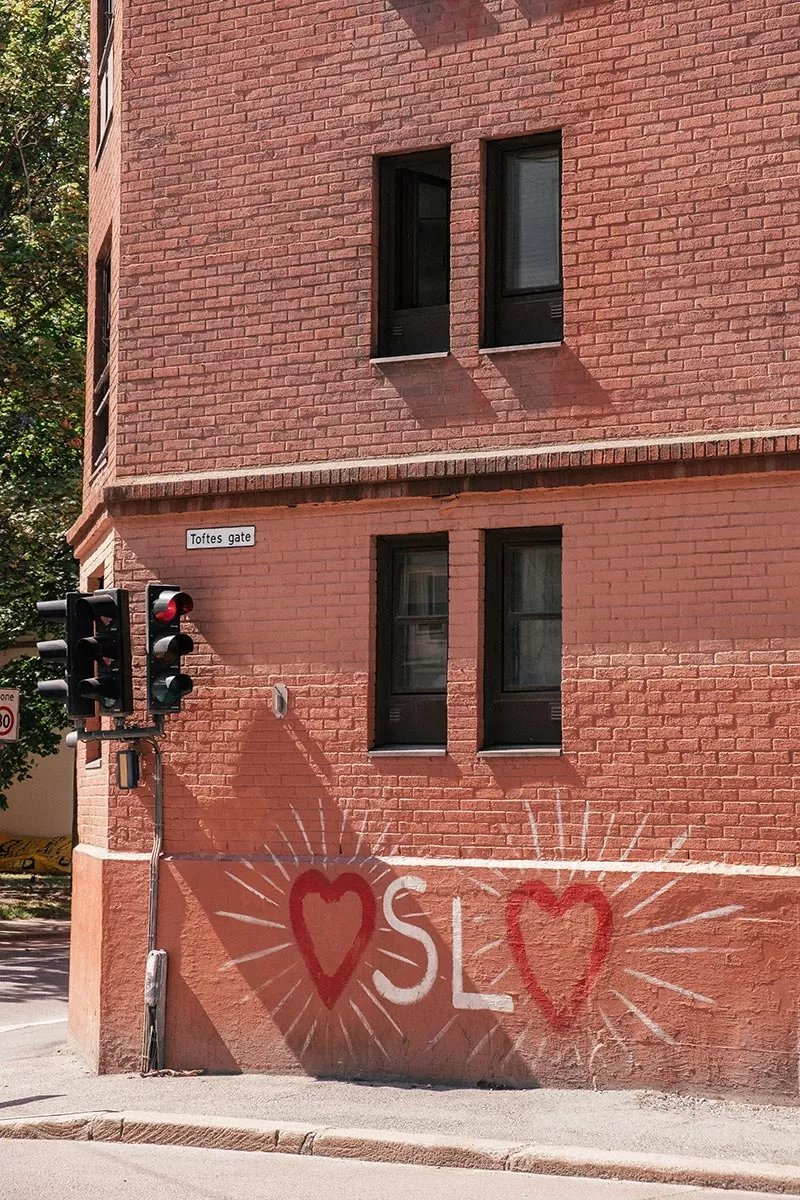
Where is Norwegian spoken?
Norwegian, (‘norsk’ in Norwegian) is the official language of Norway where it is mainly spoken. According to Ethnologue , there are by 5,189,940 speakers of Norwegian. Norwegian is also spoken in the U.S., Canada, and Sweden.
For all its similarities with English, being a hundred percent fluent in Norwegian is actually quite difficult as there is no standard spoken Norwegian. Why?
Well, there are several reasons, however, the main reason is due to Norway’s geography. That’s right, that gorgeous mountainous landscape acted like a fence between villages and since the country is so sparsely populated this allowed for many dialects to form.
To give you an example, Lisa, who is from Aurland, explained to me that the dialect of her neighbouring village, Lærdal (just thirty minutes away) is very different from her own. This is because the villages were only connected via a mountain road which was snowed over during the winter. This meant there was limited access between the villages. It wasn’t until 2000 that a tunnel was built to keep the villages connected all year round. Crazy right?
Since there is no standard spoken Norwegian, it is totally normal and accepted to use your local dialect whatever the context or situation. Even politicians and news reporters do this.
Written Norwegian
While there may not be one way of speaking, there are two official variations of written Norwegian. Known as Bokmål (literally “book tongue”) and Nynorsk (“new Norwegian”), the difference between the two is small but still important.
The reason for these two written forms goes back to the 1300s and the 1800s when Norway’s political status declined and came under the control of Denmark. It was during this time that the written form of Norwegian was lost, and Danish came into use.
It wasn’t until the 19th century, when Norway came under Swedish rule, that the country saw a boom in nationalism which led to the creation of two written forms of Norwegian.
Evolving from Danish, Bokmål is by far the most common. It’s used in Oslo and in two thirds of Norway. It is also the form used here in this Norwegian travel phrase guide since this version of Norwegian is used in news broadcasts, on radio and TV, and taught to foreign students.
Nynorsk, on the other hand is a reconstruction of a standard written form. It was developed by Ivar Aasen, a teacher and linguist who travelled extensively around Norway collecting samples of what was left of the original Norwegian language. He collected his findings in Western Norway and in mountainous areas.
Aasen avoided the eastern parts of Norway as he felt those areas were too heavily influenced by the Danish language. Between 1848 and 1855, Aasen published his findings, which at the time was called landsmål.
It is estimated that 85-90% of the Norwegian population write Bokmål as their main written language. At school, everyone has to learn both written forms but all of your classes in your main language and you spend 3-4 hours learning your side language.
What is the Difference between Bokmål and Nynorsk?
Nynorsk is the ‘actual’ Norwegian written language that was used before the political situation change. While Bokmål is practically a version of Danish.
Nynorsk is considered the written language of villages and rural areas while Bokmål is the form used in cities.
It’s important to explain that Bokmål and Nynorsk are only written languages. No one actually speaks them.
However, it is commonly said that people in Oslo ‘speak’ bokmål because their dialect is so close to the written language even though by definition it is not possible to speak it.
This can be quite confusing to understand, so if you have any questions, please ask them in the comments section below and Lisa will happily answer them for you.
While a hundred per cent fluency isn’t our aim here, it’s nice to know that for English speakers, Norwegian is not a difficult language to learn because many words are very similar.
The biggest challenge you’ll encounter when you first start learning Norwegian is the pronunciation. But luckily, there are some basic rules you can follow. The main ones to remember is that stress usually falls on the first syllable and the letter ‘r’ is always rolled.
Want to have fun whilst learning Norwegian? Struggling to find decent Norwegian language resources? I recommend getting uTalk . Available as a desktop site and app, uTalk is awesome for learning key words and phrases in Norwegian, especially if you want to use it for travel purposes. It’s great for beginners getting started in a language and invaluable for intermediates looking to fill in gaps in their vocabulary and pronunciation.
What I love most about uTalk is that you can jump around their extensive library of topics and choose what you want to learn, when you want, and at your own pace. Because I believe in uTalk so much, I reached out to them and we’ve teamed up to offer you an exclusive 30% OFF reader discount across all of uTalk’s 140 languages! This offer isn’t available anywhere else! Click here to claim your exclusive 30% discount.
Below is the Norwegian alphabet. Note that the last three letters in the table are vowels. Æ – Pronounced like an elongated version of the ‘a’ in ‘lap’. Ø – Pronounced like the ‘u’ in ‘burn’ Å – Pronounced like ‘ou’ in ‘four’ Y is always a vowel in Norwegian and sounds more like the y in ‘typical’ than in ‘type’.
Essential Norwegian Phrases You Need to Know
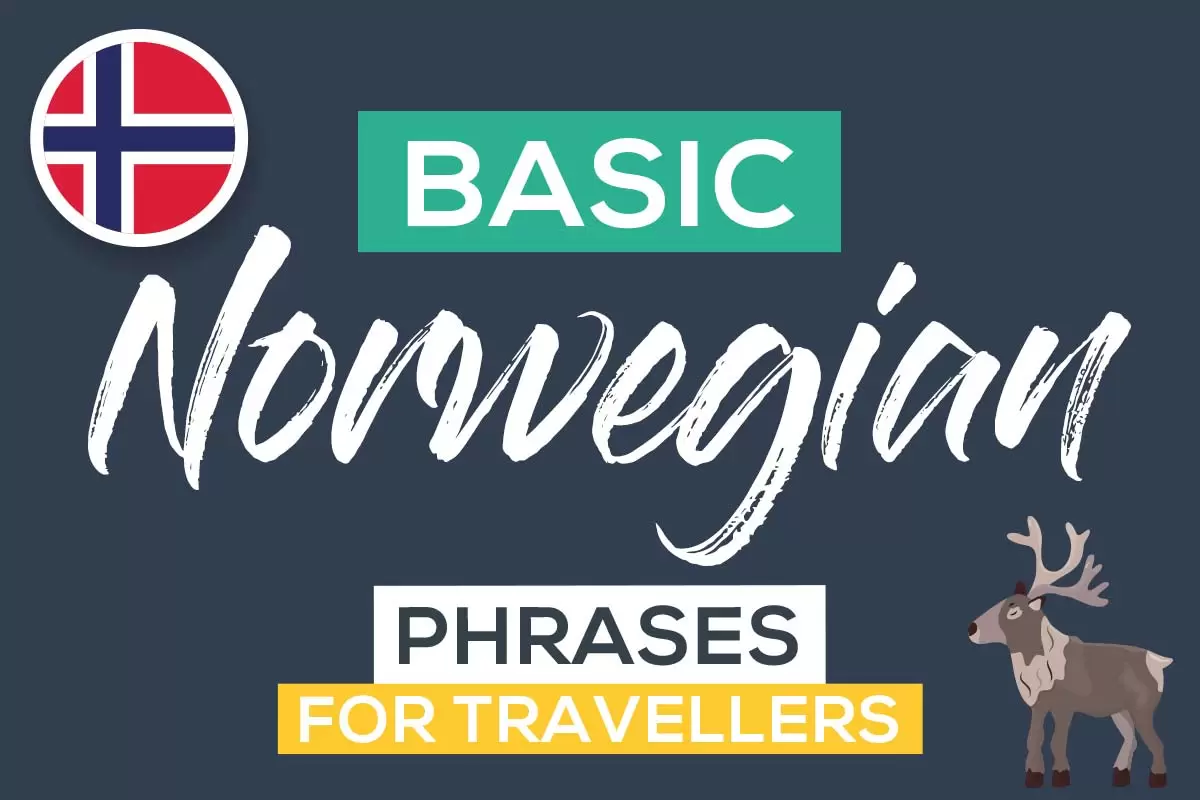
I hope you enjoyed this Norwegian travel phrase guide as much as I enjoyed bringing it together. If you have any requests for other languages, let me know in the comments section! In the meantime, check out the rest of my collection of free travel phrase guides.
Learn FAST with Intrepid Norwegian for Travel
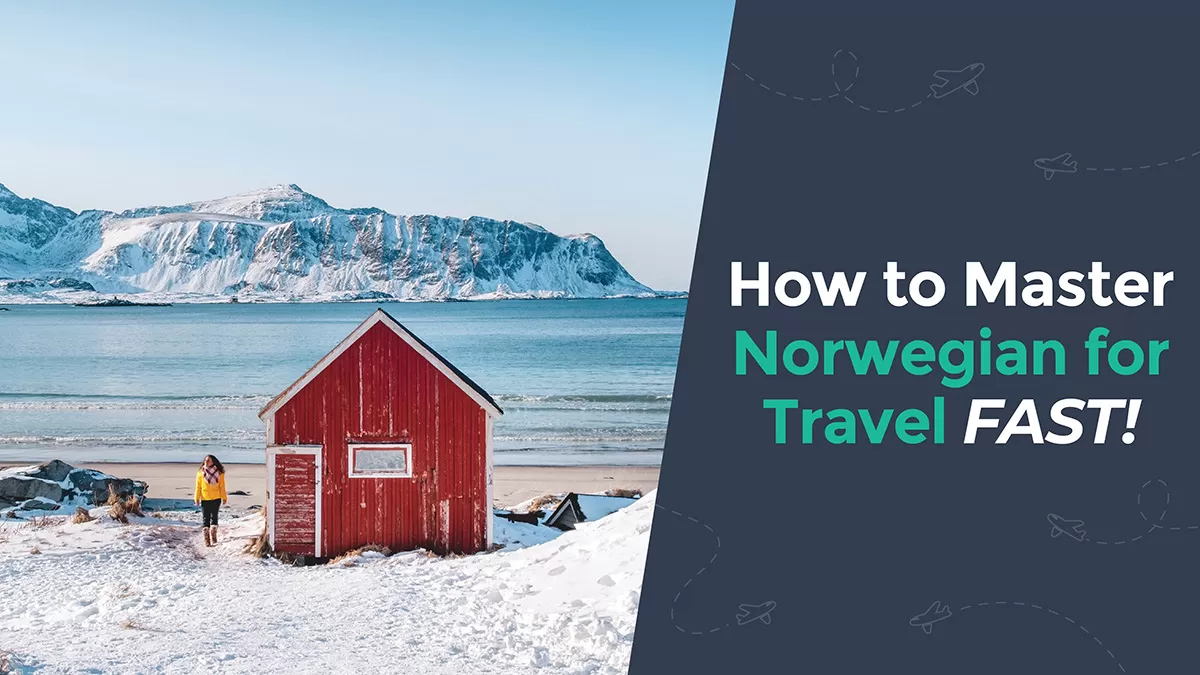
Here’s what my students are saying:

It certainly exceeded my expectations. The learning methodology is great, and easy to follow and found that I progressed much faster in the last 4 weeks than I ever did on my own or using other language apps. – Roma Small
Click here for instant access!
Go from Absolute Beginner to an Upper-Intermediate speaker with Speak Norsk (Exclusive reader discount)
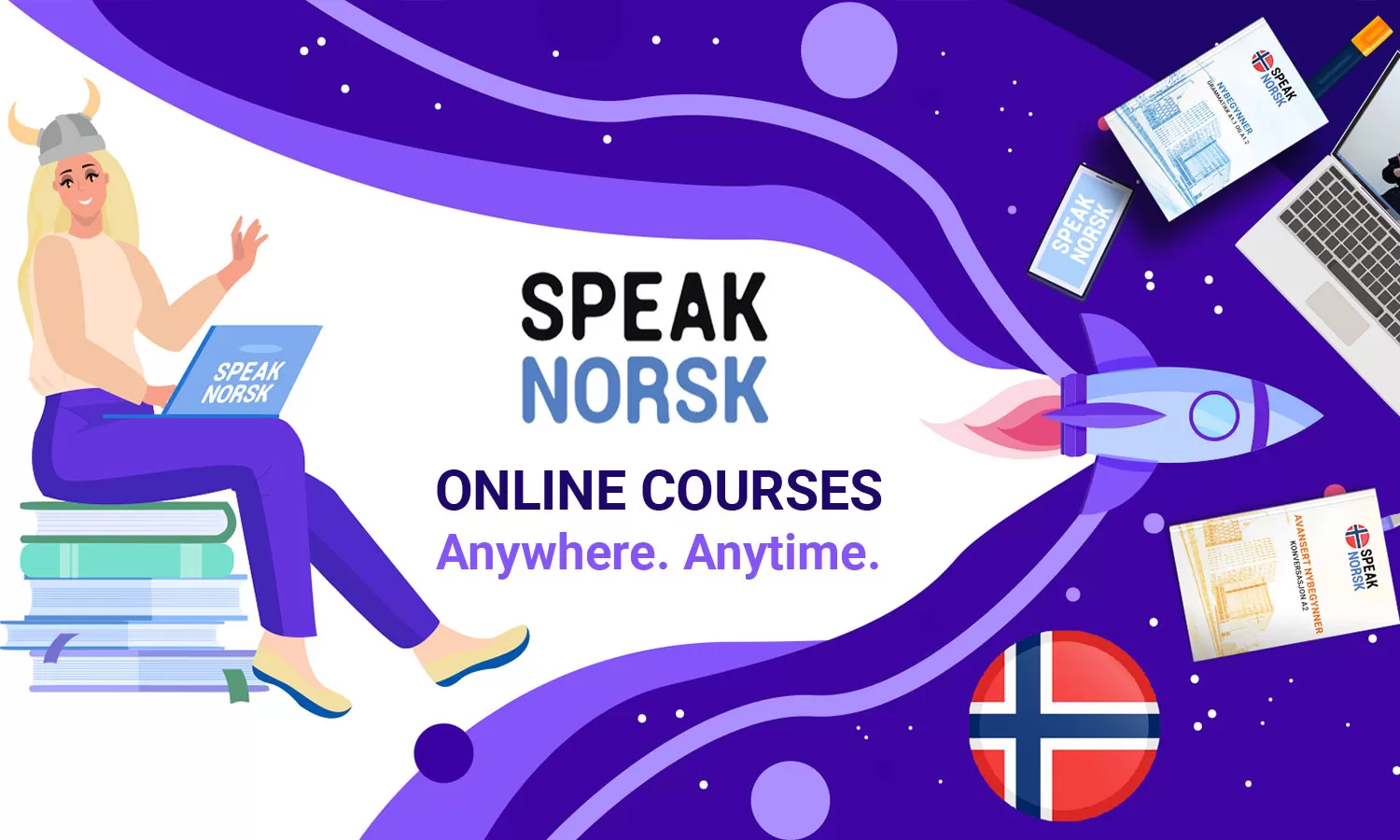
For the most complete and comprehensive way to learn Norwegian, you can’t pass up Speak Norsk, the highest-rated Norwegian language school in Norway. Speak Norsk are the absolute leaders and the best option on the market if you’re serious about reaching a high level in Norwegian. They offer a complete pathway so you can go from absolute beginner (A0-A2) to intermediate (B1-B2) and advanced (C1-C2). Speak Norsk have both a physical language school based in Oslo and offer a series of engaging online self-paced video courses so you can learn anytime, anywhere from the comfort of your home and around your own busy schedule.
Speak Norsk offer tonnes of courses, but my personal favourite and the best value for money is their Viking for Beginners package. This includes access to:
- 9 complete courses – Including A0, A1.1, A1.2, A2.1, A2.2, B1.1, B1.2, B2.1 and B2.2
- Teacher guidance available 24/7 with n ative-speaking, qualified teachers
- Pre-recorded grammar lessons
- Grammar exercises and quizzes
- Pre-recorded pronunciation lessons
- Pre-recorded conversation lessons (Including texts, vocabulary, and listening exercises)
- Vocabulary lists
- Repetition exercises and grammar overview videos – This is great to review the previously material and topics
- Motivational videos from their most-popular teachers
- Mid-term and final term evaluations for each level
- Continuous support and guidance from Speak Norsk administration and teachers on your learning journey
- BONUS: Access previously recorded live classes – This includes grammar lessons and exercise-solving videos
***Exclusive Reader Discount. GET 20% OFF!
As a huge fan of Speak Norsk , I asked their team for a special discount code so you can get 20% off their popular Viking for Beginners Package. You won’t find this discount anywhere else. To claim this offer, all you have to do is click here and apply Promo Code: MOFF20 at the checkout! Happy learning!
Norwegian Travel Guide Infographic
Like it pin it for later.

Sources Teach Yourself Norwegian | About World Languages | Fjords and Beaches
Learning Norwegian? Don’t miss these
- Is Norwegian Hard to Learn? 12 Common Mistakes & How to Avoid Them
- 49 Hilarious Norwegian Idioms and Sayings That Will Make You Giggle
Visiting Norway? Check out my Norway posts
- 22 Absolutely Free Things to do in Oslo You Shouldn’t Miss
- 49 Best Things to do in Oslo, Norway
- How to Hike Trolltunga like a Pro: The Ultimate Guide
- 11 Awesome Things to do in Stavanger you won’t forget
- The Best Place to See the Northern Lights You Probably Haven’t Heard of
- How to Choose the Best Whale Watching Tour in Norway and Iceland
Want to know more about learning languages? Start here!
- 6 Language Learning Tips: How to Learn a Language from Home
- What Type of Language Learner Are You? Your 4-Step Personalised Learning Plan
- 20 Top Language Learning Resources You Should Use
- 44 Best Movies on Disney Plus for Learning Languages
- 13 Ways to Seamlessly Integrate Language Learning into Your Daily Life
- 10 Pro Tips: How to Learn a Language with a Full-Time Job
- 7 Reasons Why You Should Go on a Language Holiday
- Essential Travel Phrases: How to be Travel Fluent in 10 Simple Steps
- 23 Cool Gift for Language Learners They Will Actually Use and Love
- How to Learn Your First Foreign Language in 8 Simple Steps: A Beginner’s Guide
- 11 Life-Changing Reasons Why You Should Learn a Language
- 42 beautiful Inspirational Quotes for Language Learners
- Language learning tips: 11 Polyglots Reveal The Secrets of Their Success
- Top 10 Best Ways to Learn a Language Better and Faster
- How Many Languages are there in the World?
Over to you!
Which of these Norwegian phrases did you find the most useful? Are you planning a trip to Norway or have already been there? Let me know using the comments section below or join me on social media to start a conversation. Thanks for reading and I hope you enjoyed this post. Like what you see? Subscribe using the form below to have all of my posts delivered directly to your email.
Success! Now check your email to confirm your subscription.
There was an error submitting your subscription. Please try again.
Get my best language and travel tips FREE by email...
Subscribe to my newsletter to receive detailed travel guides, exclusive travel and language learning tips, priority access to giveaways and more!
I will never give away, trade or sell your email address. You can unsubscribe at any time.
Michele creates language learning guides and courses for travel. What separates her from other instructors is her ability to explain complex grammar in a no-nonsense, straightforward manner using her unique 80/20 method. Get her free guide 9 reasons you’re not fluent…YET & how to fix it! Planning a trip? Learn the local language with her 80/20 method for less than the cost of eating at a tourist trap restaurant Start learning today!
23 Top Travel Essentials: Ultimate Travel Packing List for Backpackers
Language learning tips for anyone who’s ever doubted themselves: an interview with nomadic matt, leave a comment cancel reply.
Save my name, email, and website in this browser for the next time I comment.
This site uses Akismet to reduce spam. Learn how your comment data is processed .

If you don't know where you are , how do you know where you're going? Find out how well you know Italian grammar today!

36 Essential Words And Phrases To Know At An Indian Restaurant
I f you're looking for a meal full of complex flavors and expertly combined spices, look no further than an Indian restaurant. From Northern India's palak paneer (fresh cheese stewed with spinach) to Goa's fiery vindaloo (vinegary curry with chilies) and central India's samosas, the ingredients, flavors, and cooking styles range dramatically across India's 1,269,299 square miles.
Enjoying an Indian meal is as simple as choosing a variety of dishes and sharing everything with your dining companions. Unlike Western restaurant meals, Indian cuisine is traditionally meant to be enjoyed with all the dishes on the table together, served family-style. Look for balance — in texture, temperature, heat level, and ingredients — to craft a meal full of complementary flavors.
There are so many Indian dishes you have to try , but the first step is understanding what is on the menu. Many menu words derive from Hindi, India's official language, and you'll spot some terms (like tikka, masala, or paneer) throughout the offerings. This list will help give you a basic understanding of cooking styles, must-know ingredients, and other menu basics, so you'll be on your way to ordering like a pro.
Read more: Restaurant Foods That Always Taste Better Than What You Make At Home
Indian Cooking And Serving Styles: Tandoor, Kadai, Thali
A tandoor is a rounded clay oven, essential to Indian cuisine. Traditional tandoors are built underground, with a narrow opening at surface level and a charcoal or wood fire burning at the wider base. In a restaurant setting, a tandoor is often a cylindrical metal oven with a ceramic lining that runs on gas or electricity.
Tandoors are used by a khansama, or male cook, to heat long skewers of meats and vegetables, as well as breads like naan, which are slapped against the side to bake. These ovens can reach temperatures of around 900 degrees Fahrenheit, quickly cooking breads and giving meats a signature char. Tandoori refers to this style of cooking, where skewered meats are grilled inside a tandoor for juicy, smoky results.
Whether you spell it kadai, karahi, or kadhai, this curved metal pan is a must-have in any Indian kitchen. It is similar to a wok, with a wide opening and high, curved sides, though a kadai has a flat bottom while a traditional Chinese wok does not. The shape of a kadai makes it incredibly versatile, great for deep-frying or simmering stews.
A thali is a wide, round plate or tray that holds a selection of small bowls called katoris, each filled with a different dish. Communal dining from a thali is a delicious staple of Indian restaurants , with all dishes served at once instead of in individual courses so everyone can mix and match flavors.
Indian Snacks And Street Foods: Chaat, Pakoras, Samosas, Pani Puri
India is famous for street foods and snacks, called chaat. These are perfect to tide you over before a meal, and take the place of appetizers at Indian restaurants. In Hindi, chaat means "to lick" or "to taste," a perfect name for these mouthwatering bites. One of their key components is chaat masala, or snack spice, a blend featuring dry mango powder, black salt, cumin, coriander, ginger, and asafoetida (dried resin from the roots of the ferula plant with a pungent aroma that adds a huge dose of umami). Bite-sized chaat offerings are usually fried and often contain chickpeas or potatoes.
Pakoras are deep-fried cakes, usually made of vegetables, held together by a batter — one of the best uses for garbanzo bean flour . Pakoras may be fritters of diced vegetables, or the veggies can be chopped into bigger pieces that are battered and fried.
Samosas are triangle-shaped pastries with vegetable or meat fillings, and can range from bite-sized to requiring a knife and fork. They're often served with a cilantro or mint chutney.
Pani puri is one of India's most beloved chaat varieties , a crispy, hollow shell with a mouthwatering filling. The shell itself is the puri, made with fine semolina into a dough that puffs into a hollow pastry when fried. Fillings include potatoes, lentils, and chickpeas — all topped with pani, a vibrant and flavorful sauce (pani means water in Hindi) that is sweet, spicy, savory, tangy, and fresh.
An Indian Spice Blend And Cooking Style: Masala
Even if you've never been to an Indian restaurant before, you've likely heard of chicken tikka masala — but masala is more than that single dish. Masala is both a spice blend and a cooking preparation, and they're both essential to your Indian restaurant experience.
In Hindi and Urdu, masala refers to ingredients and spices. You'll see masala throughout the menu at an Indian restaurant, referring to dishes seasoned with a spice blend. Garam masala, for example, is a warming blend of ground spices (garam means hot in Hindi) like coriander, cardamom, cinnamon, cumin, cloves, peppercorns, and nutmeg — though homemade garam masala can be adjusted according to preference.
Chicken tikka masala is a much-beloved use of the fragrant and cozy spice blend, though this menu staple is believed to have origins in Scotland. It combines marinated chicken with a spiced tomato and cream sauce. You may also see dishes like chana masala (chickpeas in a curry sauce), masala dosas (a lentil pancake with a spiced potato filling), and aloo gobi masala (potatoes and cauliflower either seasoned with masala or in a masala curry sauce).
Chaat masala is a spice blend used on a variety of Indian appetizers, snacks, and street foods. It differs from garam masala with the use of more sour and tangy ingredients, like dry mango powder and ginger.
Indian Curries: Makhani, Korma, Madras
Curry essentially refers to gravy or sauce, and curries can be wet or dry (with no sauce, or a sauce that has been greatly reduced). Thinner curries are for eating with rice, while thicker curries are enjoyed by scooping them with pieces of bread. The spices depend on which dish is being made, and even curry leaves are not a staple — in fact, they are only used in recipes from the southern and western coasts of India (and not in Goa).
Makhani is a curry made with butter, cream, and tomato. The most popular iteration is murgh makhani, or butter chicken, which is credited as originating in the 1950s at Delhi's Moti Mahal restaurant. The difference between butter chicken and chicken tikka masala is the additional creaminess of the former's makhani curry, while tikka masala has more zest from its powerful spice profile.
Creamy korma is one of the mildest curry dishes, though if you have a nut allergy, you should skip this one. Korma is a yogurt- or cream-based sauce with a smooth texture that often comes from the inclusion of ground almonds or cashews. Korma is also a cooking style, where meats or vegetables are slowly braised to create a succulent and rich dish.
Madras curry is spicier and more earthy, with a notable use of paprika and coriander seeds. It has a deep, red hue from the chilies in the spice blend, and usually has a considerable amount of heat.
Indian Spice Combinations: Bhuna, Rogan Josh, Vindaloo
Unique combinations of spices give each curry its distinctive flavor, whether that's soothingly mild or vibrantly spicy. While yogurt, butter, and ground nuts give curries a creamy texture, skipping those ingredients or reducing the cooking liquid can allow the spice blends to really shine through.
Bhuna is a cooking technique with its name referring to the act of browning meat, which is essentially stir-fried with spices to create a thick and toasty paste that coats each bite. Bhuna is ideal for scooping up with a piece of naan.
Rogan josh is an intense, rich, heavily spiced dish that is often prepared with lamb, goat, or beef. The word rogan roughly translates to fat, while josh refers to heat. Rogan josh has a deep red color and a mild spiciness that is balanced with cardamom, coriander, and fennel. The red color comes from Kashmiri chilis, which are relatively mild, but are sought after for their vibrant hue. The meat is browned, and then the cooking liquid is reduced to create a thick and dark gravy, intensifying both the color and flavor.
Vindaloo is one of the most iconic — and spiciest — Indian curries, combining Goan and Portuguese influence in a fiery dish. The name refers to the use of vinegar and garlic (alho in Portuguese) in the recipe. Chilies that were contributed by the Portuguese centuries ago give the dish lots of heat, while vinegar adds a mouthwatering tang.
Indian Meat Preparations: Tikka, Kebabs, Koftas
Indian restaurant menus include a variety of meat options and preparations. Knowing what each style is called will help you decode the menu and find your new favorite dish. Common meats on the menu at Indian restaurants include chicken, lamb, beef, and pork.
Tikka refers to cubes or small pieces of meat that have been marinated in spice-infused yogurt and roasted on skewers in a tandoor. This meat can be served on its own, or can be incorporated into a sauce, as in chicken tikka masala. The lactic acid in yogurt is more gentle than the acid in citrus or vinegar, so meats can be marinated longer in yogurt-based sauces — often overnight. This maintains the tender interior of the meat, providing a succulent contrast to the crispy char from tandoor cooking.
Indian kebabs are similar to tikka, with the meat being skewered before it is cooked. Some kebabs feature cubes of meat, while others are made with ground meat instead. Seekh kebabs, for example, are made with minced meat that is formed around thin skewers and cooked quickly over high heat.
Koftas are balls of spiced ground meat. These meatballs are often braised and then served in a curry, though they may also be skewered and grilled or roasted. Skewered kofta may also be called kofta kebabs. Koftas can also be made with vegetables, including malai kofta — a deep-fried dumpling commonly made with paneer cheese and potatoes.
Indian Vegetarian Specialties: Paneer, Dal
A huge number of Indians limit the amount of meat they consume, or refrain from eating it altogether — in large part because Hinduism considers cows to be sacred, while Islam forbids pork. As a result, hearty and flavorful plant-based dishes are easy to find at Indian restaurants.
Paneer is a fresh cheese that is a popular vegetarian source of protein. The cheese can be crumbled, or it can be pressed to create a thicker cheese that can be sliced and seared. Palak paneer (aka saag paneer) incorporates this cheese into spiced and stewed spinach, with the cheese often fried first to add a bit of texture. Paneer can also be used to make vegetarian dumplings, like malai kofta, or even be skewered and roasted in a tandoor as paneer tikka.
Dal — also spelled dahl or daal — can refer to a variety of dried lentils, peas, or beans. There are scores of dal varieties in India, but the most commonly used pulses are lentils. Dal also refers to a lentil curry, simmered until the pulses are soft before salt and spices are added. You will find dal in a large number of dishes, as it is a great source of protein for vegetarian diners. Dal makhani is made with butter and cream (à la butter chicken), while dal tadka is a hearty lentil soup. Another variety, chana dal, is made with split chickpeas.
Indian Breads: Naan, Roti, Paratha, Dosas
Bread is the perfect accompaniment to an Indian meal. Yogurt-based breads can help temper fiery curries, while thinner flatbreads are an edible utensil to enjoy with dry dishes or chutneys.
Naan is a leavened bread made with white flour, which is cooked on the walls of the tandoor oven. The dough is rolled out, then slapped onto the wall of the tandoor to crisp on the bottom and bubble on top. Naan includes yeast and yogurt, which provide an airy structure and tender richness.
Roti, on the other hand, is unleavened bread made with whole wheat flour. The terms chapati and roti are used interchangeably when referring to this flatbread, though roti is often cooked over open fire with no oil, while chapati is always cooked in oil. Puri — as featured in pani puri chaat — is also made from wheat flour, though this bread is deep-fried so that it puffs up.
Paratha is a layered flatbread with butter or oil spread between layers of dough. It can be triangular, with a disk of dough brushed with oil and folded twice before cooking, or the dough can be rolled up, coiled into a snail shape, and rolled out again before cooking.
Dosas are a thin crepe-like bread made from a fermented batter of rice and lentils. This crispy pancake takes a day or two of advance preparation, as the batter needs time to ferment before cooking.
Indian Sides And Condiments: Chutney, Achar, Raita, Basmati, Jeera, Pilaf, Biryani
Condiments and side dishes are a key part of Indian meals. They add heat, temper spice, and enhance flavor.
Chutney is a cooked or fresh dense sauce made from fruits, vegetables, or herbs, which can be coarse or smooth. Green chutney made with mint and cilantro is a slightly spicy dipping sauce for samosas. Tamarind is the tangy ingredient you should add to your next curry , and tamarind chutney both enhances and balances complex masalas. Achar is a pickled Indian condiment made with fruits and vegetables, which is used to add sharpness.
Another indispensable condiment is creamy raita , which is served alongside spicier dishes (although it's equally delicious when spread on naan). To make it, whipped yogurt is seasoned with salt, pepper, and spices, and raita can be enhanced with herbs and cucumber or other chopped vegetables.
Basmati is a long-grain rice grown in northern India, and when it is seasoned with cumin seeds, the result is jeera rice — a typical side dish at Indian restaurants. You might also see pilaf (also called pilau) on the menu. This rice is flavored with aromatics and often includes peas, almonds, and raisins. And while it's not a side, biryani is another basmati dish cooked with saffron, giving the rice its yellow hue. It is generally prepared by layering rice with meat, although vegetables or dried fruit can be added, before the pot is sealed to cook and steam before serving.
Indian Drinks And Desserts: Lassi, Chaas, Chai, Kulfi, Falooda, Gulab Jamun
Any meal isn't complete without drinks and dessert. Round out your Indian restaurant experience with these must-try classics.
For a cool and refreshing drink, order lassi, a frothy yogurt drink that originated in Punjab. Sweet lassis include sugar and fruit, while salty varieties will also include spices like cardamom or cumin. Rose and mango lassis are popular. Fruit lassi is prepared similarly to smoothies, with fresh fruit blended into the yogurt. Another popular creamy drink is chaas (savory buttermilk or thinned yogurt with herbs and spices).
Chai is the Hindi word for tea, and if you order it at an Indian restaurant you'll likely be served masala chai , which is spiced. (Pro tip: Call it "chai" instead of "chai tea" — the latter is a redundant phrase for Hindi speakers.) This hot beverage combines black tea, spices (usually cardamom, ginger, cinnamon, clove, and star anise), milk, and sugar or jaggery (raw brown sugar).
Kulfi is a frozen custard you can't miss , which is similar to ice cream. This conical treat is made with milk that has been simmered, reduced, and slightly caramelized, then flavored with anything from pistachio to rose to mango. The base is not churned, and kulfi is more dense than ice cream. Another dessert is falooda , an ice cream-based treat made with milk, rose water, vermicelli noodles, basil seeds, and crushed nuts. Or, for something sticky, order gulab jamun — fried dough balls soaked in a sweet syrup.
Read the original article on Tasting Table
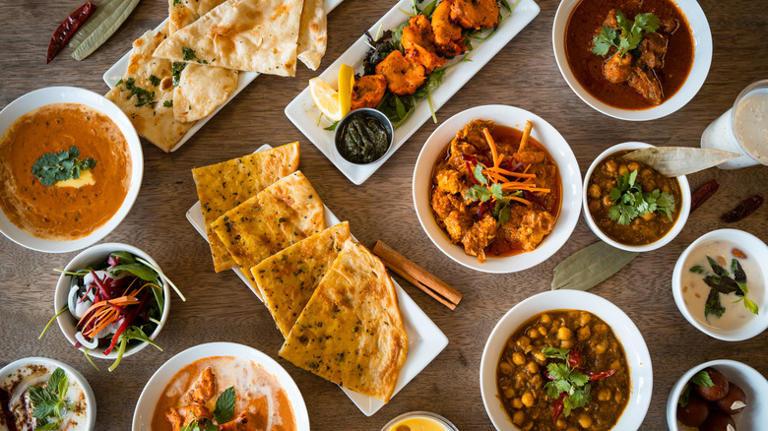

IMAGES
VIDEO
COMMENTS
Beyond Basic Travel Phrases. If you're like me and really love learning languages, expand your study beyond these essential travel phrases. Personally, I never visit a new country without knowing the local word for "coffee". Apps like Duolingo and Memrise turn language learning into a game. Both have dozens of languages to choose from and ...
1. What are Travel Phrases? Travel phrases are useful phrases to know when traveling abroad. They are a collection of the most common and frequently used words and expressions we use when visiting foreign countries. From basic greetings to phrases for seeking directions, ordering food, and engaging in cultural exchanges.From a simple ''hello'' and ''thank you'' to longer ...
Here are 50 essential travel slang that will have you navigating the globe like a pro: 50 Travel Terms and Expressions To Spice Your Content. 1. ... These travel phrases and expressions capture the essence of travel trends for millennials on Instagram and TikTok, showcasing their adventurous spirit, desire for authenticity, and passion for ...
Speak the local lingo and transform your travels with this comprehensive travel phrase guide in 22 languages from around the globe! Enter your email address below to get access to 22 must-know travel phrases in 22 languages. You'll be treated like an insider, not a tourist when you impress the locals with your knowledge of their language.
How to be Fluent for Travel in 10 Simple Steps. Step 1. Use the 80/20 rule. The Pareto Principle (also known as the 80/20 rule) states that 80% of the results in any endeavour come from 20% of the input, material, or effort. This principle was coined by Management consultant, Joseph M. Juran and named after the Italian economist, Vilfredo ...
English is essential for communication in most countries. Wherever you are going, you need to have a good grasp of the basics of the language to get around and communicate at the airport, hotel and everywhere in between. This post has dozens of travel English phrases to help you navigate any foreign country.
Knowing some English phrases can make your trip safer and more fun, even if you're not traveling to a place where English is the official language! Blog Language resources Articles for business. ... Knowing some essential English travel phrases will make your trip safer, smoother and more enjoyable. ...
So these are the essential travel phrases for finding somewhere to eat. Travel Tip: Learn about the types of food you want to try instead of the restaurants. For example, I knew I wanted to try sea urchin in Japan - so I had a few places on my Google Maps in case I couldn't find one 'by accident' but was able to find a place easily! Water.
We've journeyed through 40 essential English words and phrases that will help make your travels smoother and more enjoyable. Remember, language is a powerful tool that can open doors to understanding new cultures, making new friends, and creating unforgettable experiences. ... which features 200 essential English words and phrases for travel ...
285. Communication is a very important aspect when traveling. Here I have compiled this list of super helpful travel expressions and travel phrases to learn before your next trip. It's highly useful to learn words and travel phrases specific to the country you are visiting. Wherever you go you should have at least a basic knowledge of the ...
IX. Expressing Gratitude Phrases. Showing gratitude is essential when interacting with locals during your travels. These phrases will help you express your appreciation: "Thank you very much!": A simple phrase to convey your gratitude. "I really appreciate your help.": Use this sentence to express sincere appreciation for someone's ...
By learning some key travel words and expressions, you'll be able to ask for directions, order food, and even make new friends. This guide is designed for anyone who needs a quick reference for essential English traveling phrases. Whether you are traveling for business or pleasure, this guide will help you communicate effectively with those ...
These phrases may be generic and obvious travel terms, but they are of great importance in many situations and essential to communicate in most every country. I recommend writing the phrase and the translation down on the notes section of your phone (so you'll have it even if you don't have an internet connection) or simply learning them by ...
5. Use them in your everyday conversations. Try to find as many opportunities as possible to use basic Italian phrases in your daily routines. A great way to practice without having to find a language partner is by thinking or narrating what you're doing in Italian. 6. Use flashcards.
We've provided some useful resources at the end of this article to help you learn Italian travel phrases useful for your trip. Yes - Si - See. No - No - Noh. Please - Per favore - Pehr fah-voh-reh. Thank you - Grazie - Grah-tsee-eh. You're welcome - Prego - Preh-goh. Cheers! (To your health) - Salute! - Sah-loo-tay.
Greetings and Basic Japanese Phrases. I'll provide the hiragana, kanji and romaji for each word, and will explain the use of certain Japanese phrases for tourists in context. 1. Hello — konnichiwa. こんにちは. 2. Good morning — ohayou gozaimasu. おはようございます. 3.
The four ESSENTIAL travel phrases, translated into hundreds of languages using their native scripts ... While on these assignments, some of my colleagues and I decided that there were certain phrases we felt every traveller should know and in as many languages as possible, because you just never know. ...
Merci beaucoup - "Thanks a lot". And of course, don't forget to say thank you! The French word for "thank you" is merci. Or you can make it stronger by saying merci beaucoup - "thanks very much". Use merci in all the same situations you'd say "thank you" in English.
Goodnight: Καληνύχτα (kah-lee-NEEKH-tah) Say this when going to bed. Thank you: Ευχαριστώ (eff-kha-ri-STOE) Remember that a good tourist is a polite tourist. Please/You're ...
Fire! Au Feu! au fur. **There are a few places that use unique words for the numbers 70 ( septante) and 90 ( nonante ), such as Belgium and Switzerland. With the numbers 80 to 89, combine the number 4, the number 20, and the ones. For example, in French 80 is four 20s, 81 is four 20s plus 1, and so forth.
sin productos animales - without animal products. sin azúcar - without sugar. 6. Spanish for travelers who want to have fun. The final - and probably most important - travel phrases in a Spanish-speaking country are those related to fun. The holiday is not over until you go to a fiesta and drink a few sangrias.
Spanish-speaking countries are especially polite and greeting people correctly will go a long way towards endearing you to the locals, be they friends, people you meet in shops or on the street. #1 ¡Hola! - Hello. (O-la) #2 ¡Buenos días! - Good morning! ( BWAY-nos DEE-as) #3 ¡Buenas tardes! - Good afternoon/good evening!
70+ Norwegian Travel Phrases Cheat-Sheet! (Free PDF Download) Don't let the learning stop here. Download your free PDF guide with 70+ Norwegian travel phrases. Includes English and Norwegian translations with pronunciation guide. La oss lære sammen! (Let's learn together!) I promise not to spam you.
Sweet lassis include sugar and fruit, while salty varieties will also include spices like cardamom or cumin. Rose and are popular. Fruit lassi is prepared similarly to smoothies, with fresh fruit ...